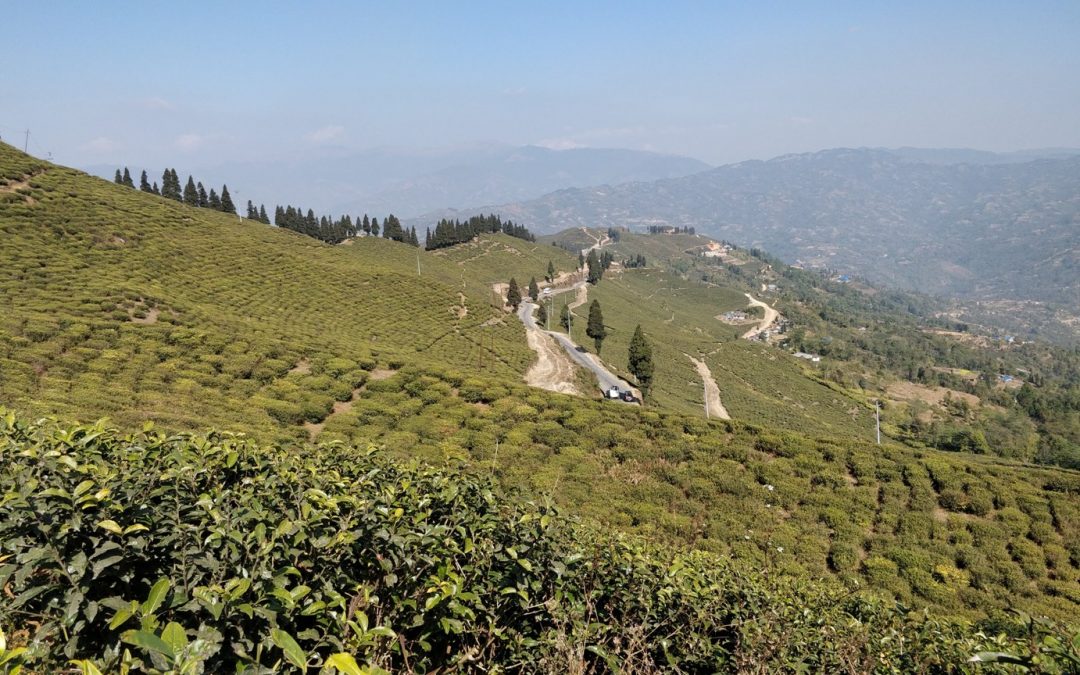After a short visit in the region three years ago, we promised to go back and explore further the area. Our friend Kedar would be there to help us, journalist, literature lover, passionate with nepali language and in love with his birth land on which he welcomes us with his wife Kiran: Ilam.
Day 1 – 8 January 2019 – Biratnagar > Karfok
It is five o’clock this morning when we jump in a bus whose khalasi hanging at the door shouts “purba! purba!”, understand “to the eat! to the east!”. Quickly we leave the industrial city of Biratnagar through the main straight road which goes north. On the road, a smell of biscuits enters the bus, we are passing by a birscuits factory. In Itahari, the driver turns on the right, to the east. In some places, we drive along forests of trees at the bottom of which we can see cemeteries called chihan. Some graves of different shapes and colors: Kirats, Buddhists, Christians and Muslims are buried there.
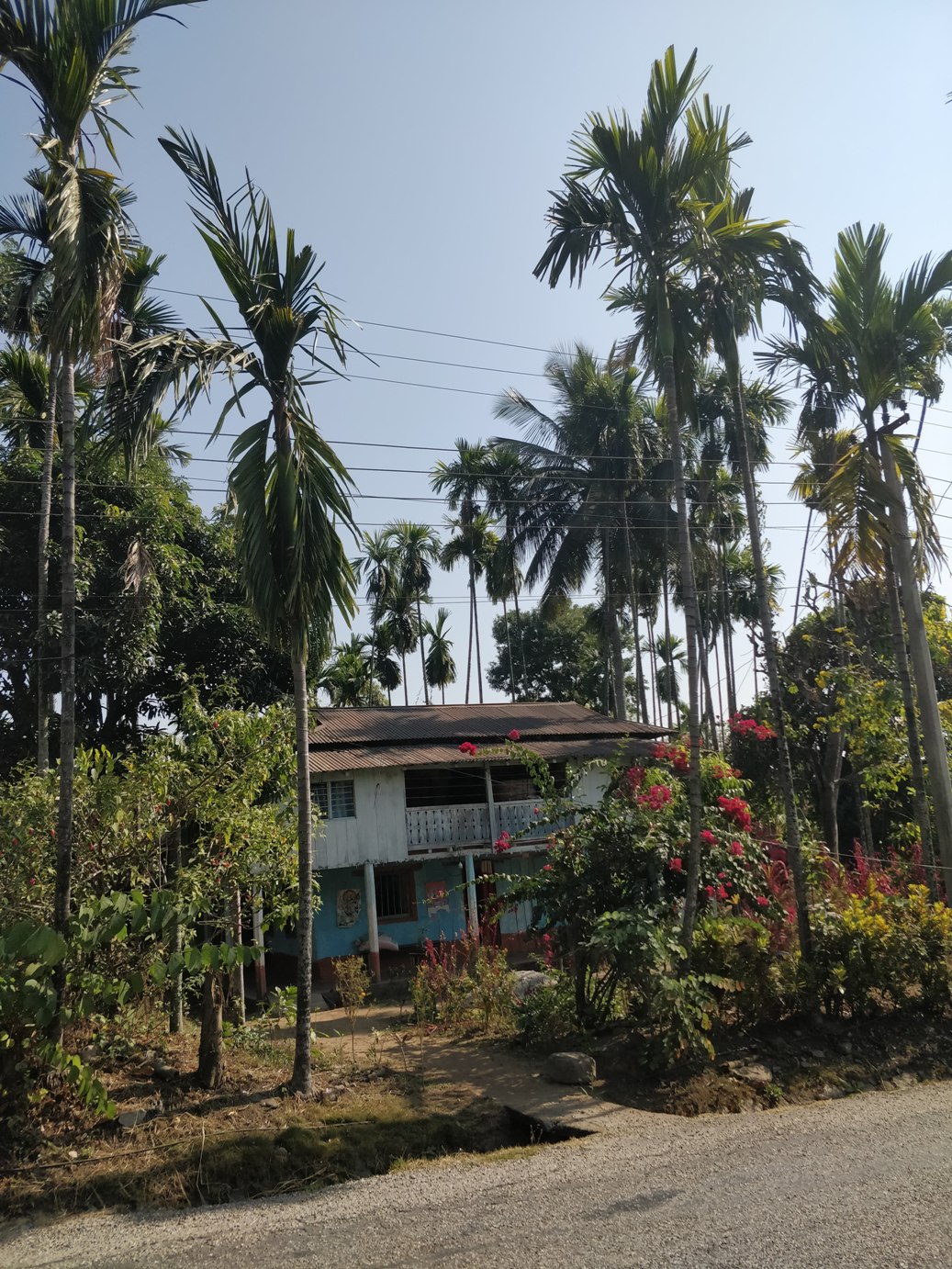
Finally after two and half hours, we reach in Birtamod, important city where buses depart for each and every corner of the country. We stop at a small canteen to have a cup of tea and something to eat before continuing our trip to Ilam. Finally we take a jeep driving straight north. Slowly we gain elevation and pass by more typical houses in a tropical environment. These houses, sometimes up on stits, are made from wood and eventually decorated with a balcony to the front which remind of colonial houses. All these houses are surrounded by high trees looking exactly like coconut trees : trunk similar, size similar, leaves similar, except a small bouquet of nuts hanging down the leaves. In fact they are betel nut trees, producing the betel nut also called areca nut. This fruit is used in the making of paan or betel chewing mixed with lime and betel leaves that we chew and which color teeth in orange. It is widely used in India. These landscapes are great.
Quickly we are getting higher and higher on a winding road but in very good conditions when we have experienced the rest of the nepali roads network. In Limbu language, one of the ethnic groups we find in this region, “Ilam” means “the turning road”. We understand why. The vegetation is luxuriant and very green. After less than two hours drive, we reach the wonderful region of Kanyam and the first tea plantations of Ilam District. The sky is blue and the garden is bright green, the environment is great. We are at 1500 meters above sea level though! It is one of the most common plantations with tea bushes that can be found up to 2000 meters. We get down the jeep for some time to take pictures. Tea bushes are planted on the eastern side of the hill and at the top of the crest are perched huge trees from the pine species called salla trees, which look like they are floating in the sceneries. The place is magic!
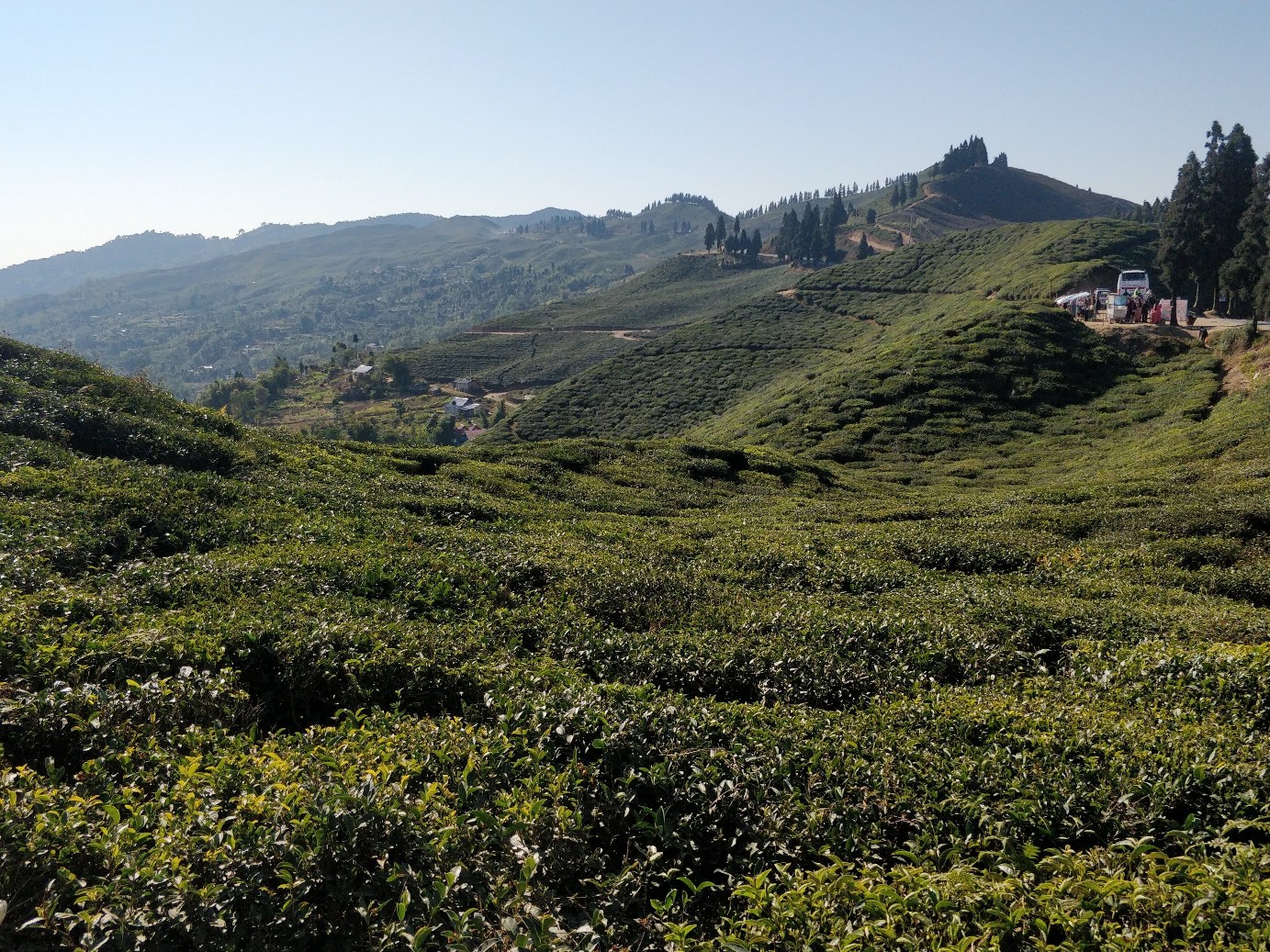
We make our way through Fikkal bazaar that we cross. Five minutes later we pass by Karfok public school, in the middle of a pine forest. This school hosts more than five hundred fifty students. The jeep stops two hundred meters away. From here, we have to walk another fifteen minutes in the middle of fields and house until our hosts’ home.
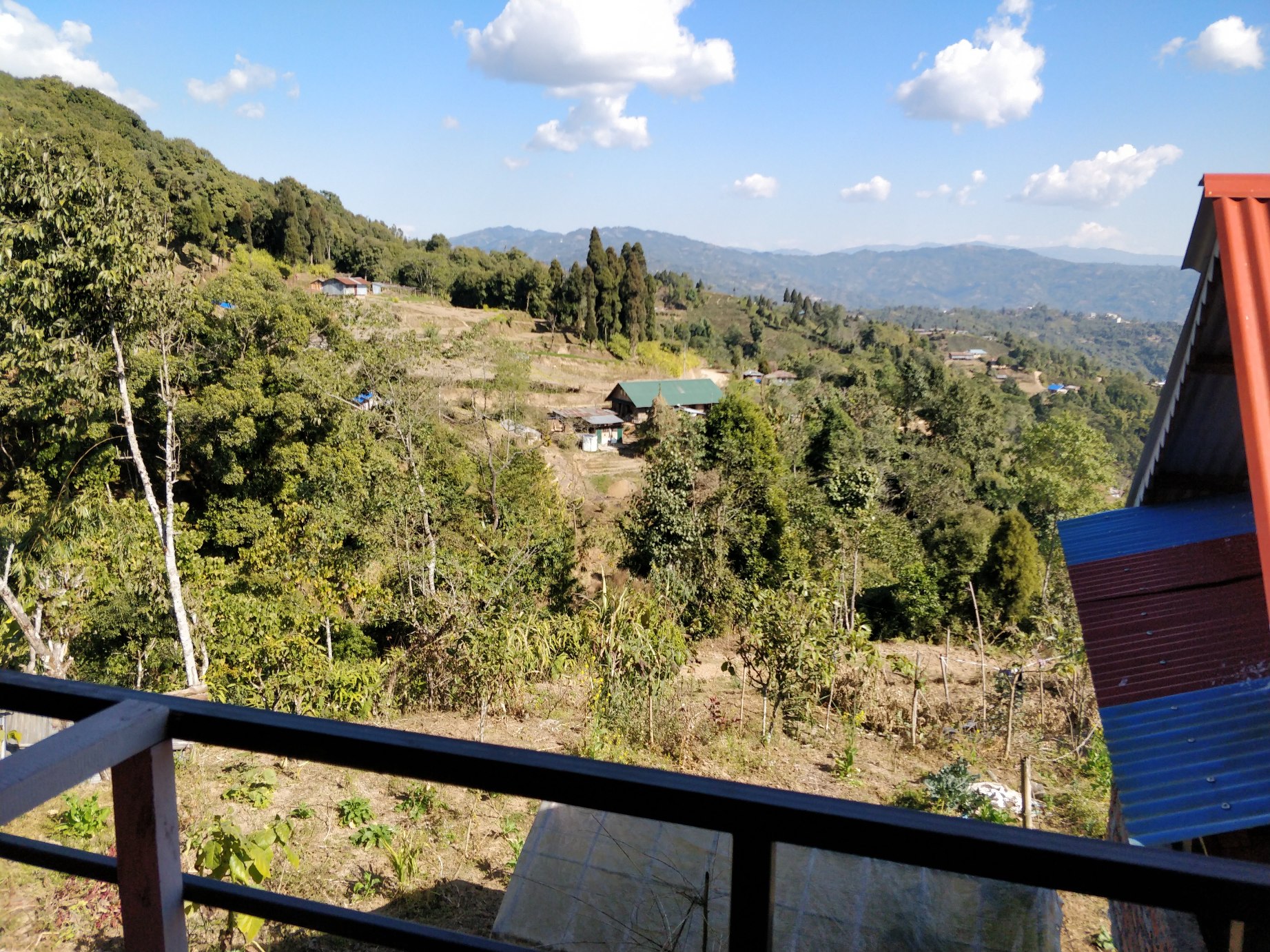
Kiran and Kedar welcome us in a marvelous atmosphere. At the first floor they have arranged rooms to receive guests hosted in a “homestay”, in a little paradise. It is lunch time, we eat a dal bhat served with potatoes and chayotes curry.
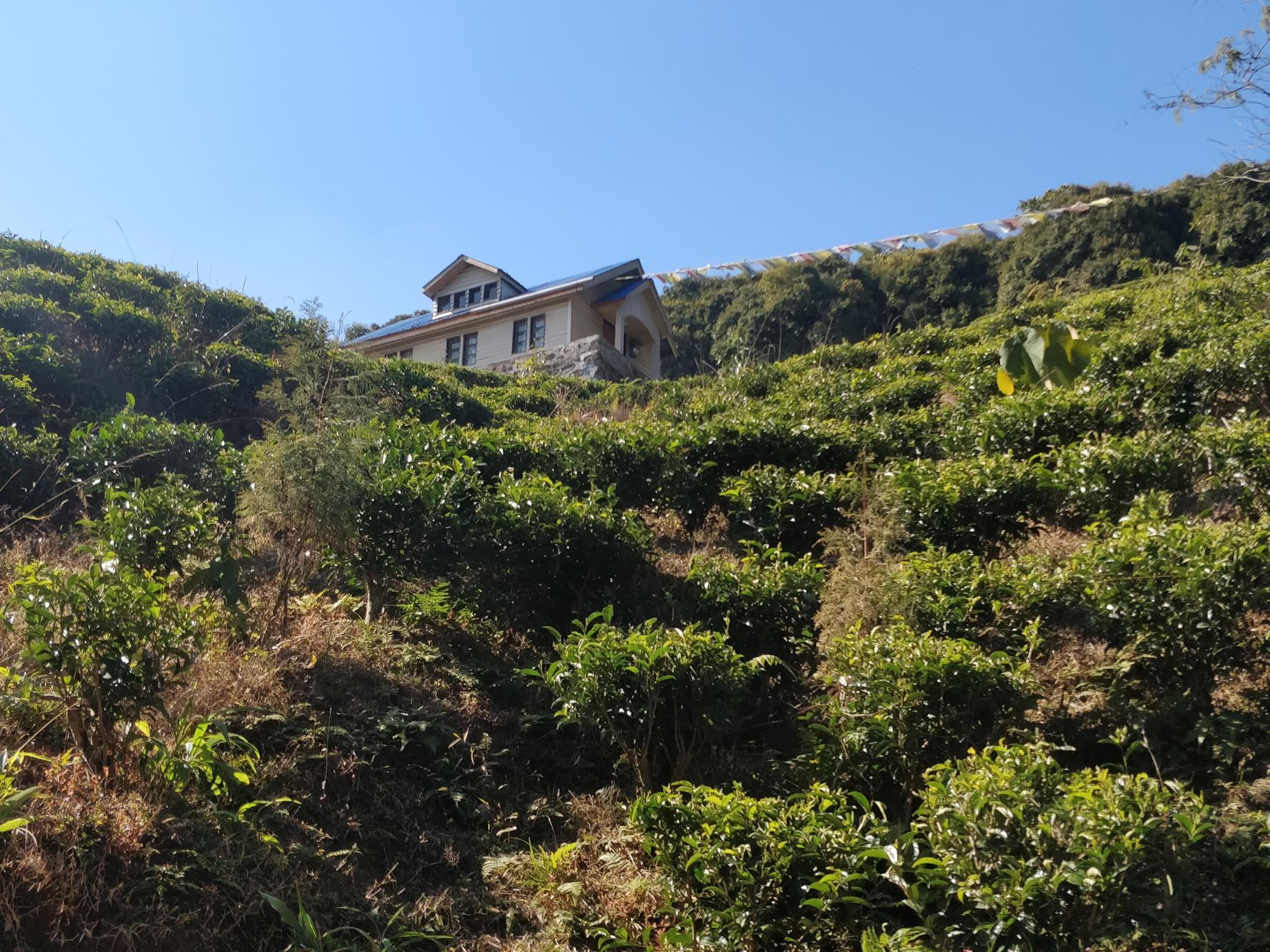
After lunch, Kedar takes us to Fikkal by walk. The path crosses countryside and tea plantations. En route, we visit a Buddhist monastery which is 350 years old. Lepcha Gumba has been severely damaged by the last earthquake and the walls, though being eighty centimeters wide, are cracked in many places. Inside treasures appear despite murals being totally crumbled.
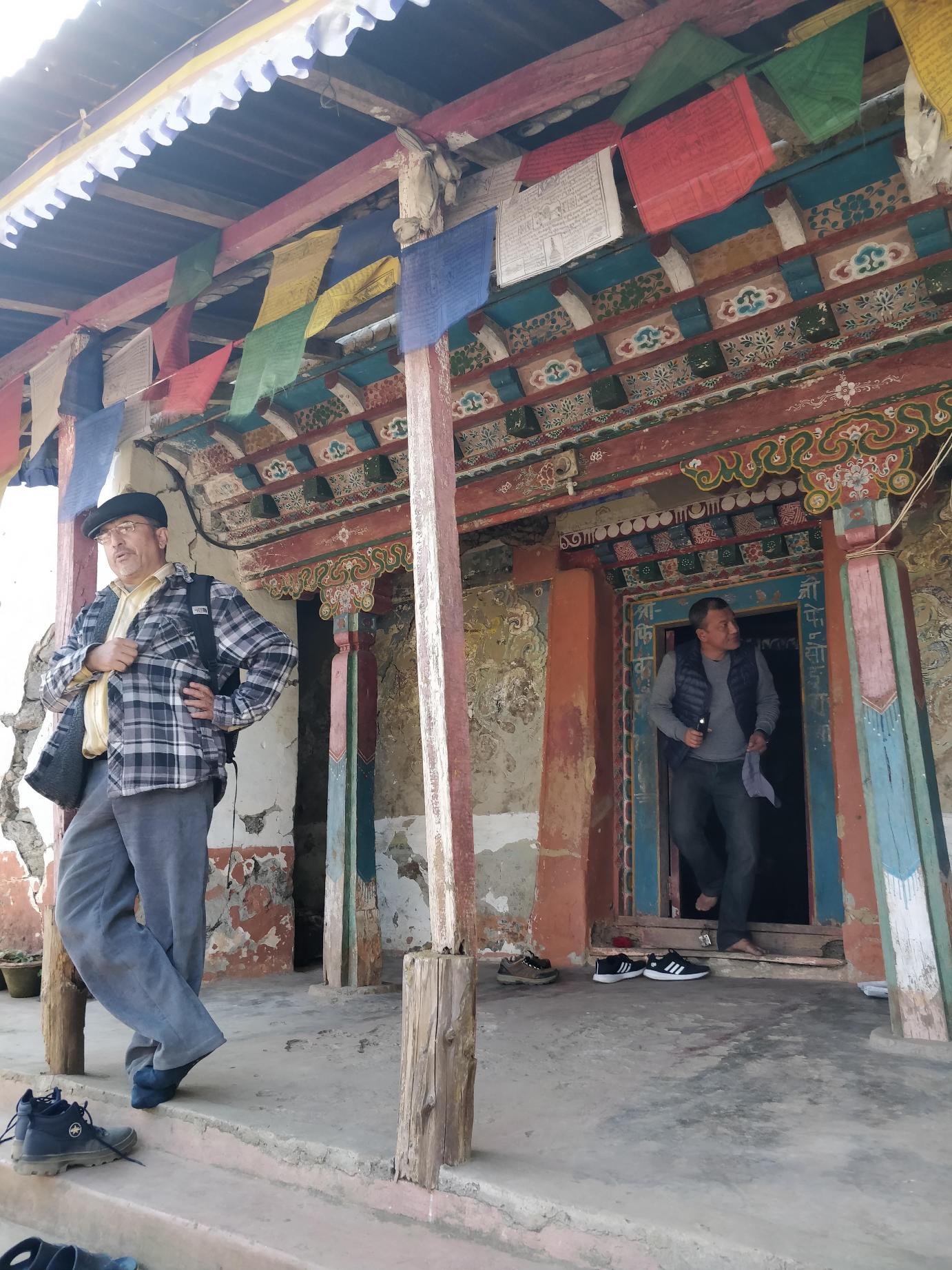
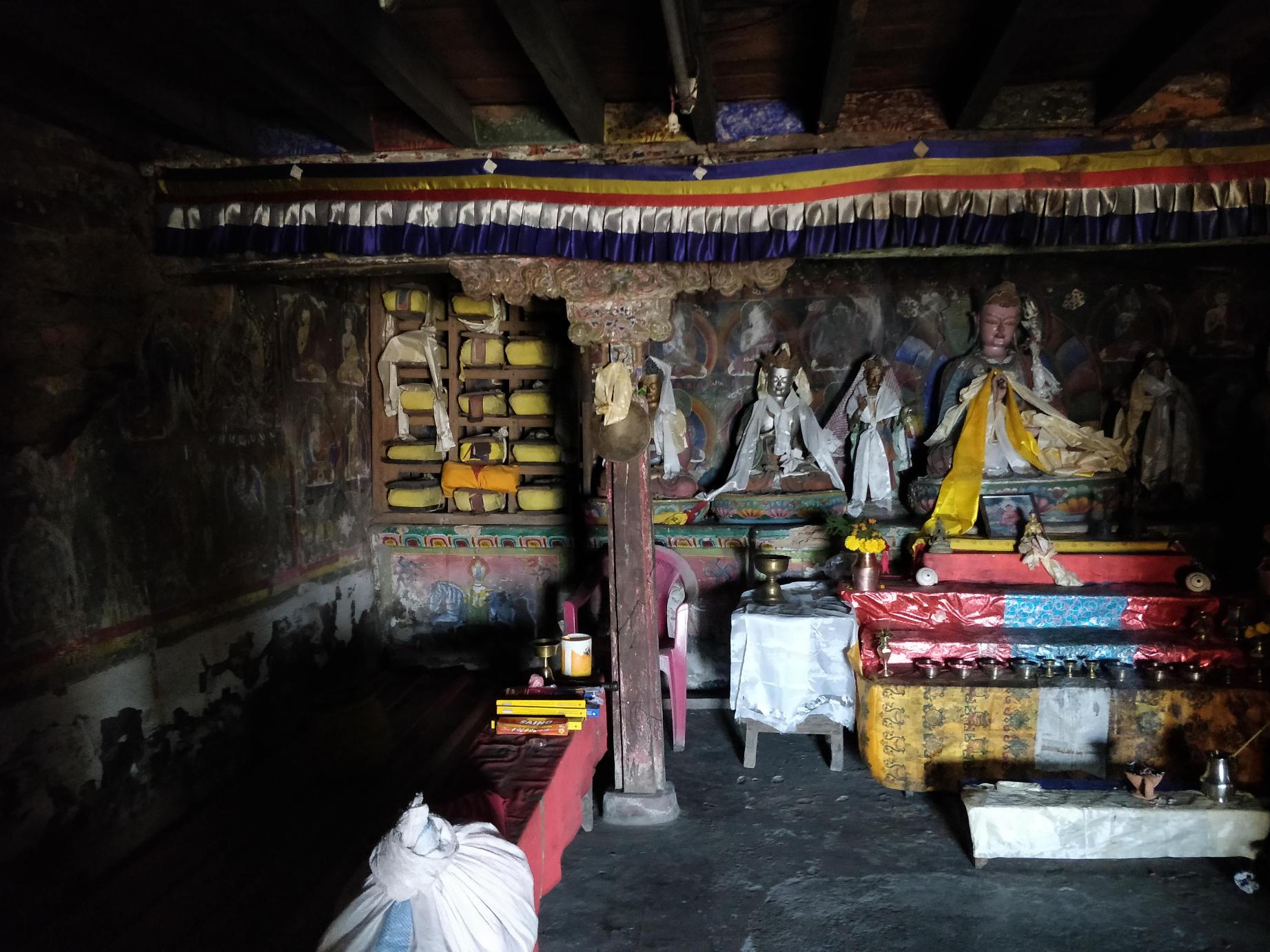
Finally we reach to Fikkal that we crossed this morning. It is an important town in the region from where we can travel south to the Terai plains (from where we come from today), north towards Himalayas and more exactly Kanchenjunga and east towards Pashupatinagar which is the border with India and Darjeeling. Like many Nepalese towns, it is a main central street besides which are shops and houses. Many of these shops sell the famous churpi, these sticks made from skimmed milk and cut into small pieces that we chew for hours. Besides, Ilam’s lollipop, another sweet made from milk and sugar.
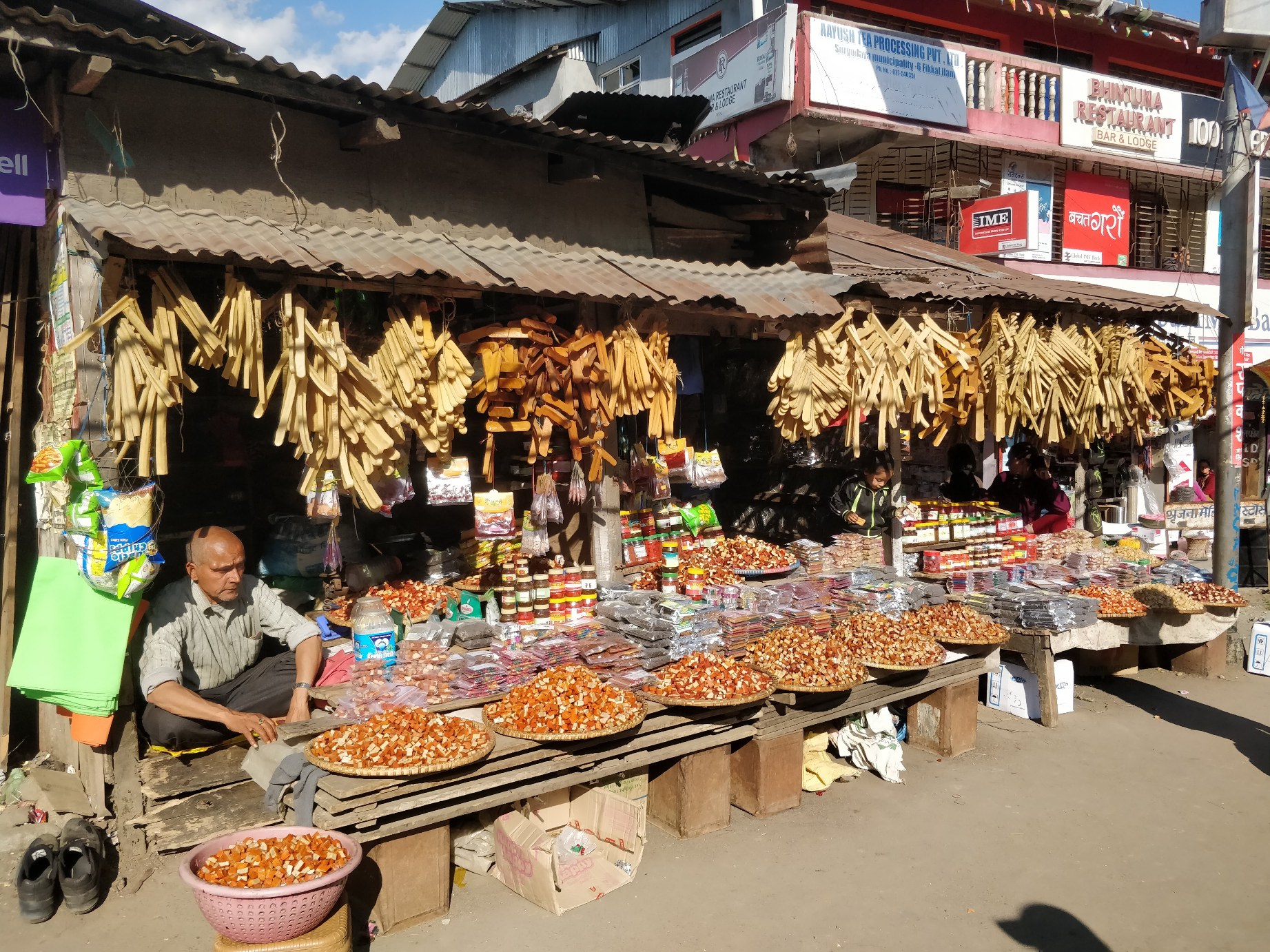
Down the bazaar, a pickup takes us ten minutes away throught tea gardens until a big property: Gorkha Tea Estate. In front of us a huge building, it is a tea factory, with no activity as it is not high season. We are welcomed by the owner, Mr Udaya Chapagain, who invites us for a cup of tea. He tells us his story, how he started his business and how big is his company today: he exports almost 100% of his production to Germany. Mr Chapagan is fascinating and has many things to tell. He is very generous and is very appreciated by his employees.
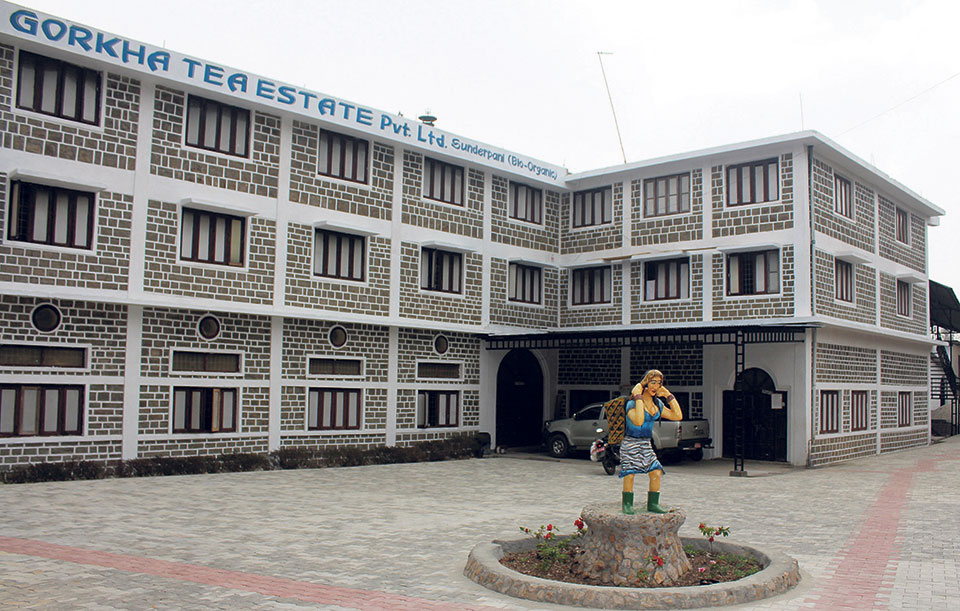
After thanking our host, we continue our visit of the region at Lucky Dairy, a dairy product factory. We visit the cave where are stored hundreds of cheese wheels on racks.
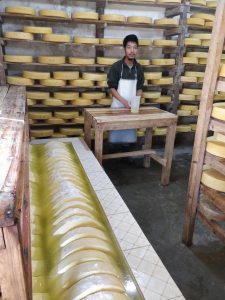
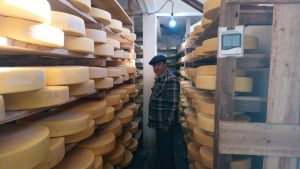
We go back to Karfok at the end of the day. We sit in the dining room which is opened with the kitchen where Kiran and Kedar are preparing a tasty dinner, both of them being interested in original flavours and new tastes. During the evening, we meet Raku (Raj Kumar), a young man in his twenties who knows the region very well and who will go with us tomorrow for a small trek through Ilam countryside.
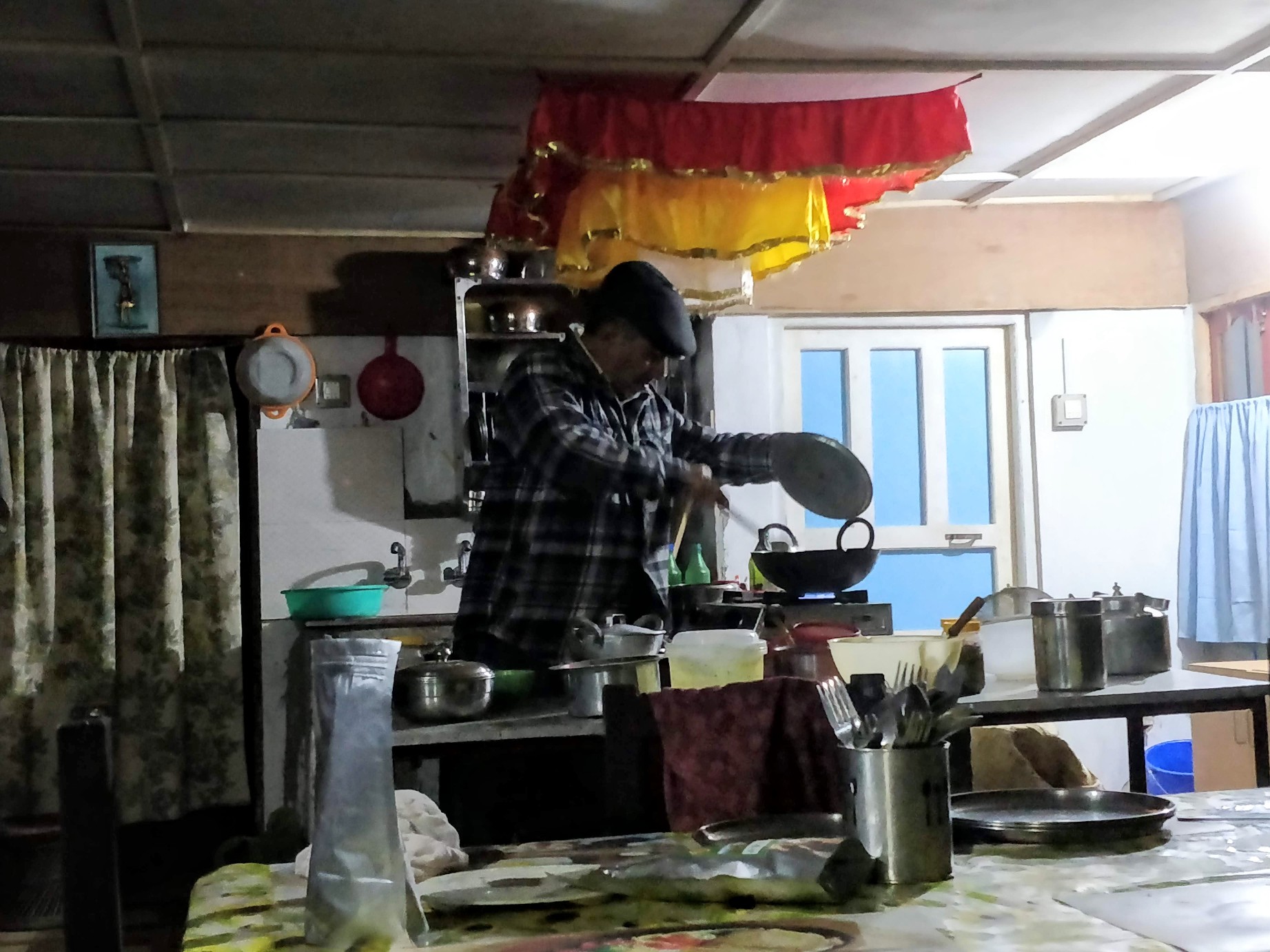
The excitation of being tomorrow and the exhausting day gone, help us to fall asleep quickly.
Day 2 – 9 january 2019 – trek Mayaon Khola > Tumling
For breakfast, Kiran is waiting for us with fresh pancakes and homemade jams: kiwis and ginger, a feast!
Along with Kedar and Raku, we leave Karfok by taxi and take a track going down in a valley. After fourty five minutes, we reach a river: Mayaon Khola. It’s here, at 1100m elevation, that our trek starts. We walk on the track sometimes passing by local houses. There are many fields around us growing tea as well as cardamom, bananas, kiwis, lokta trees…
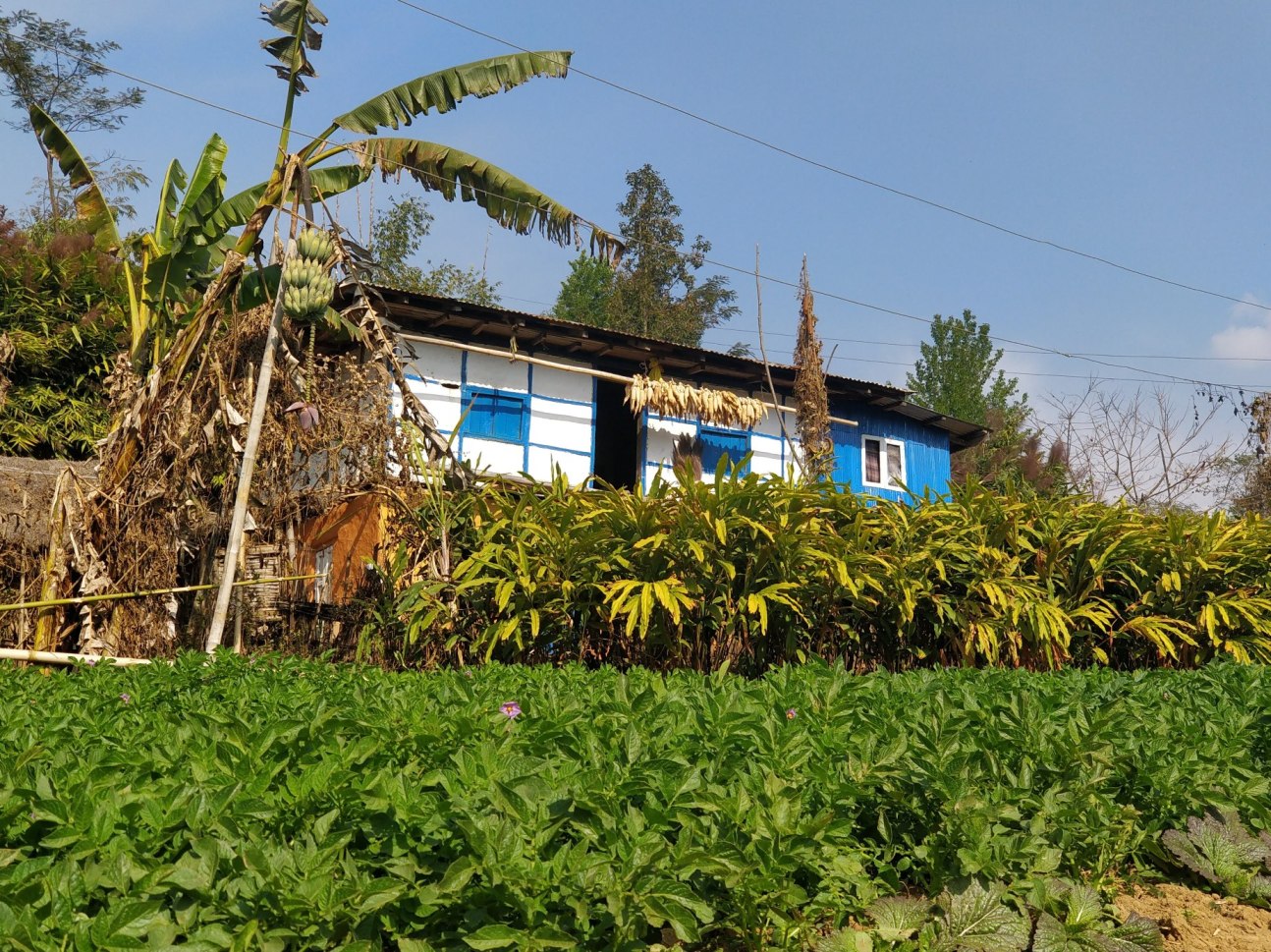
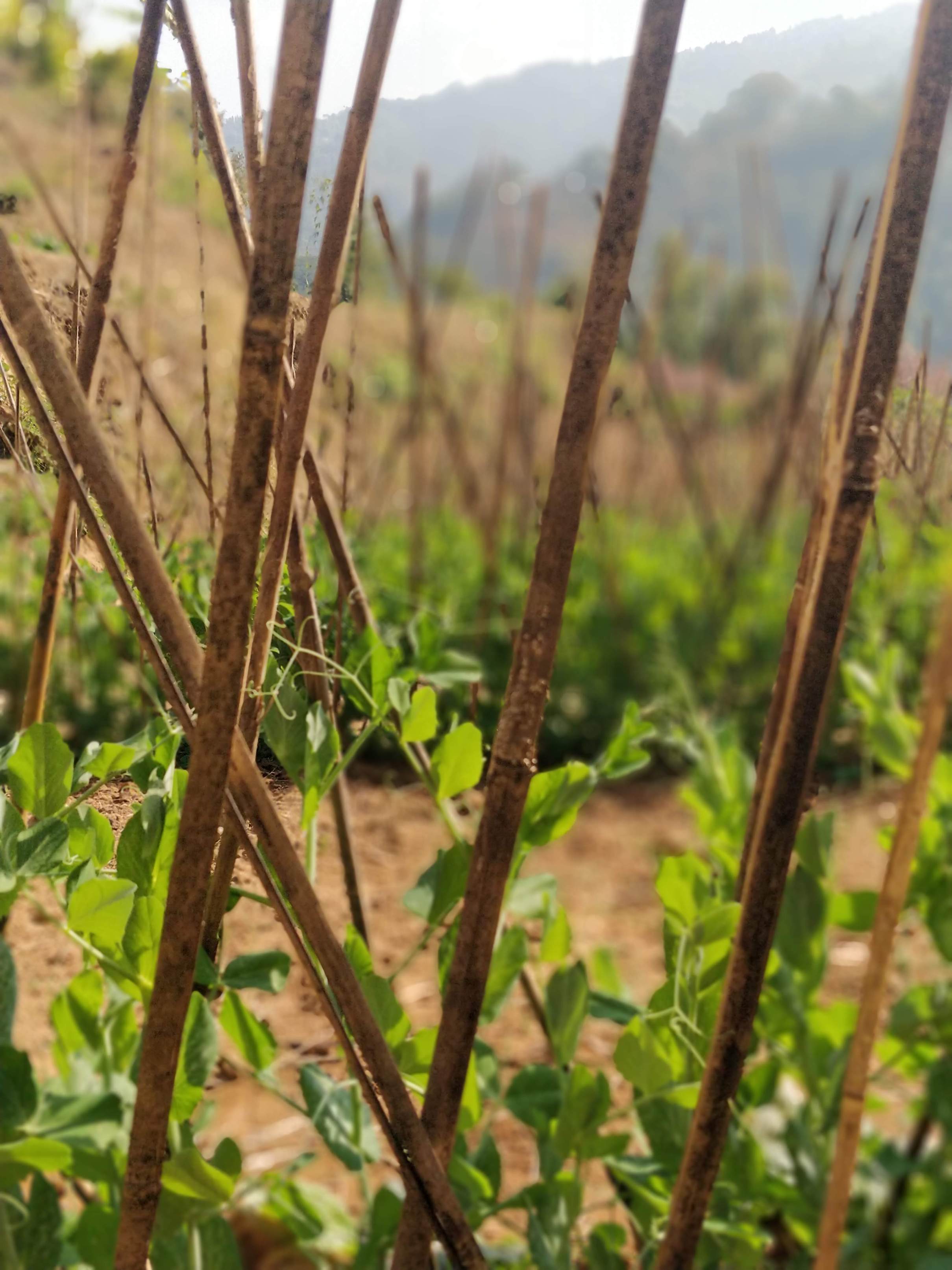
The population is very nice and likeable and people are polite and smiling. It is one of the positive aspects of the absence of tourism, the locals have pleasure to meet strangers who come to visit their region, when is some other parts of the country, inhabitants cannot stand those foreign invaders who feel free of doing what they want and come to disturb their tranquility. We meet Tamang, Rai, Limbu, Tami, Sherpa… the local ethnic groups. Soon I notice something: each house has its own restroom and bathroom, EACH HOUSE! I have never seen this before. This convenience is often reduced to the minimum, if not non-existent at all for the poorest people of Nepal. But here, each home gets restroom and bathroom which shows some level of education and development for the population. More generally, I feel less poverty that one can sometimes experience elsewhere in Nepal and it is very pleasant.
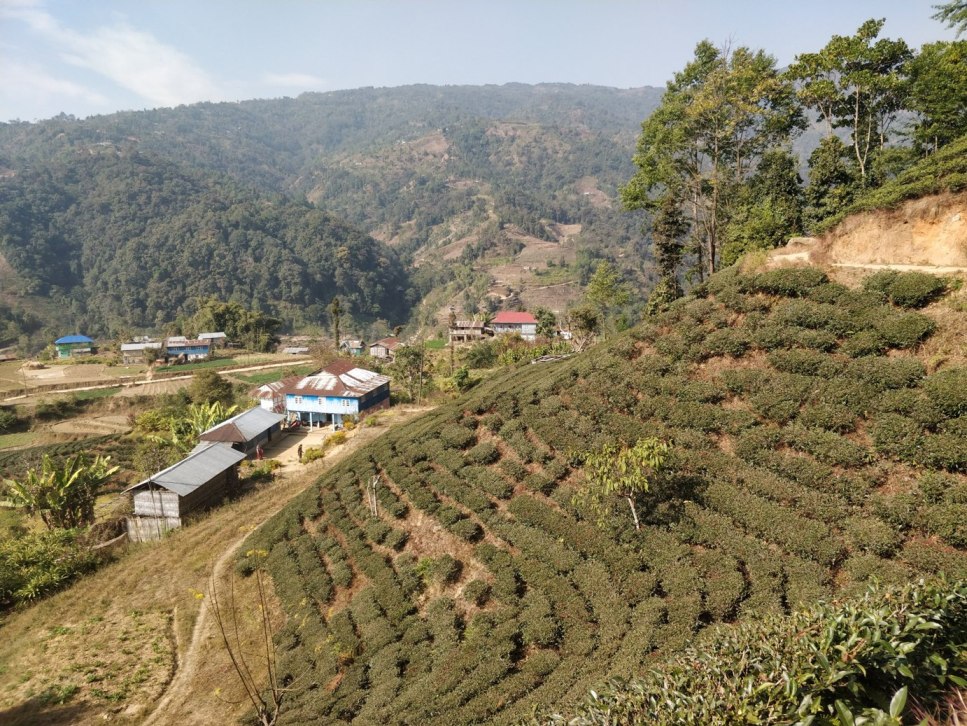
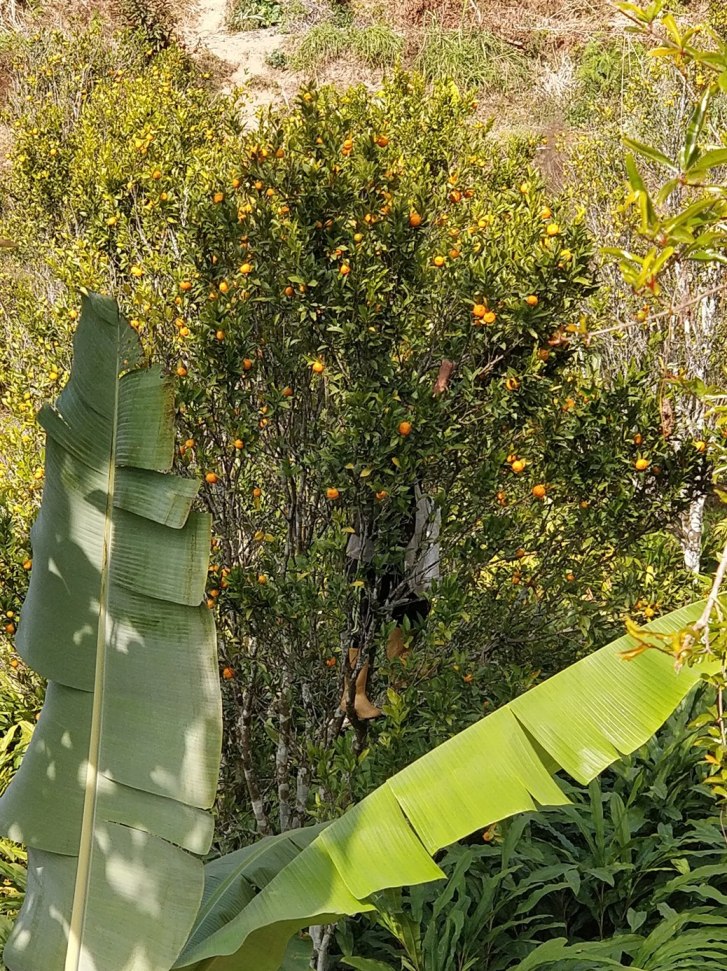
The trail is going slightly uphill until Dhap (1330m). After drinking tea in the village, the way up becomes steeper and steeper on a narrow path. We pass by a farm with some orange trees. After asking for two kilos to the farmer, he climbs in the tree to get us the fruits. Then we move. Vegetation is still luxuriant around us.
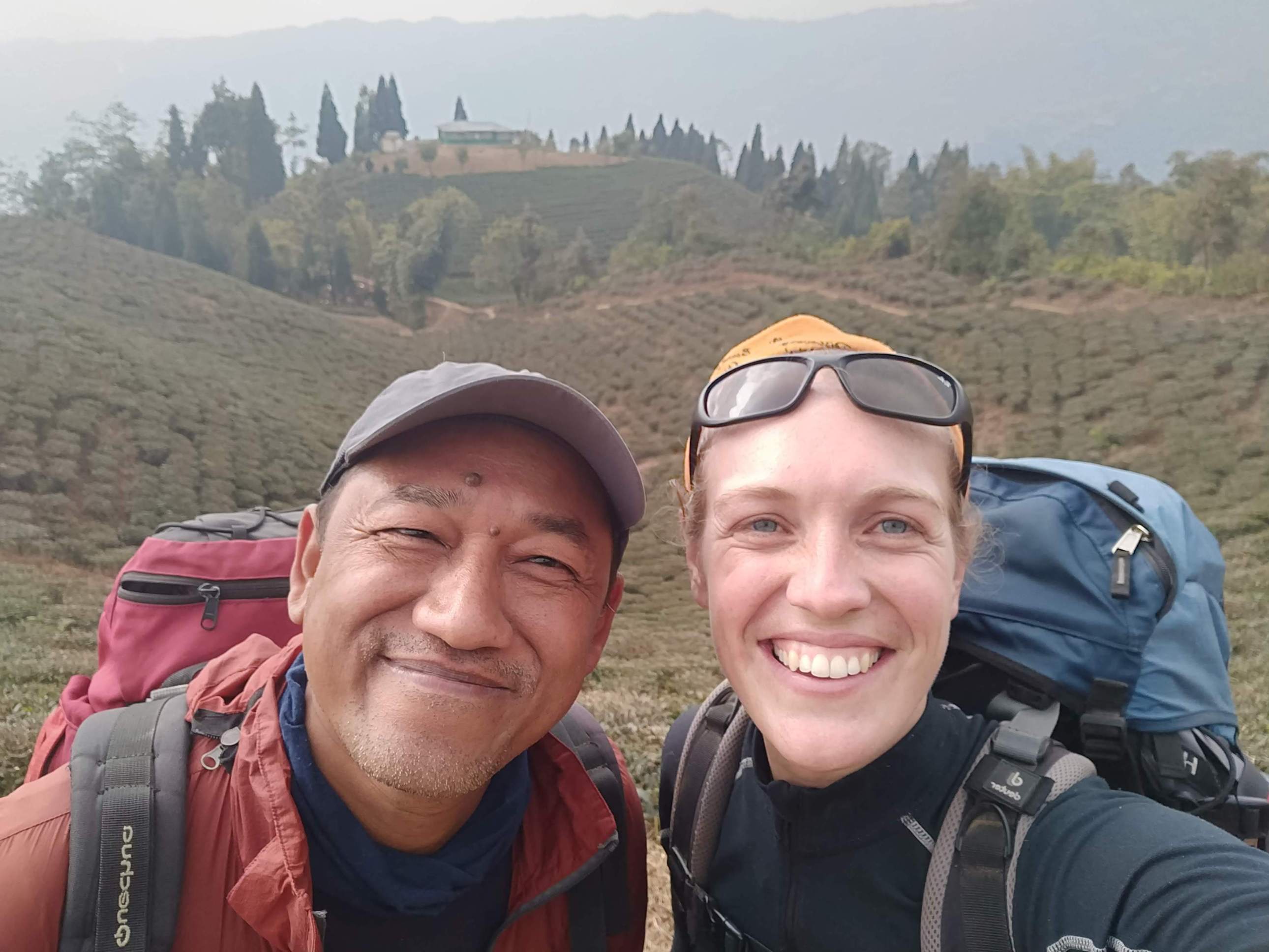
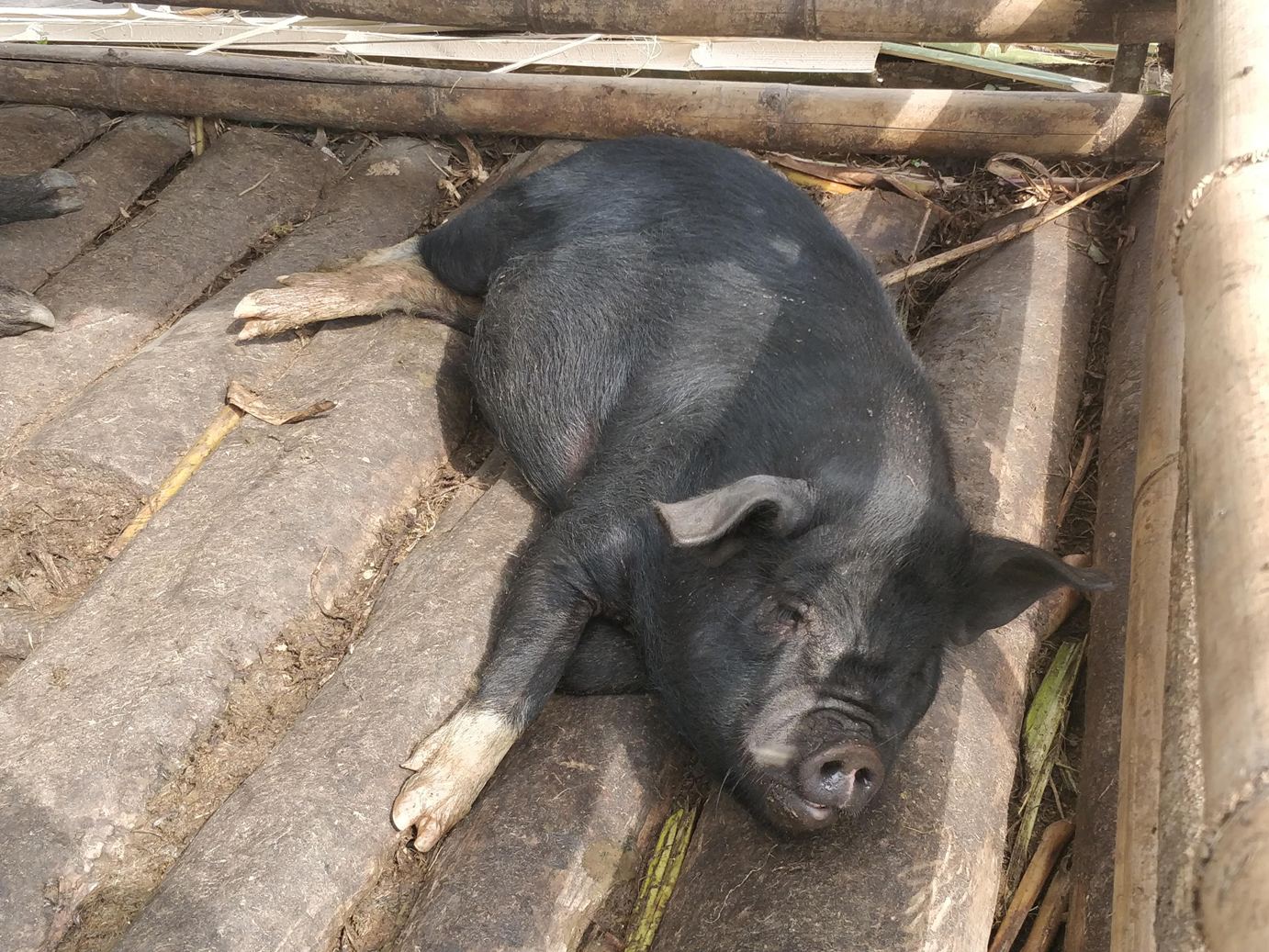
We keep on gaining elevation as long as the weather is getting bad. Further in a village we stop at locals’ house where they offer us a glass of water. We go deeper in the jungle and rain starts to drop. In less than ten minutes we are at Mane Dhanda (1900m) for lunch, it is 2pm!
Here lives a young woman named Subha. She is alone here and after asking her, she is not afraid at all! We ask her to cook something quick and simple for us.
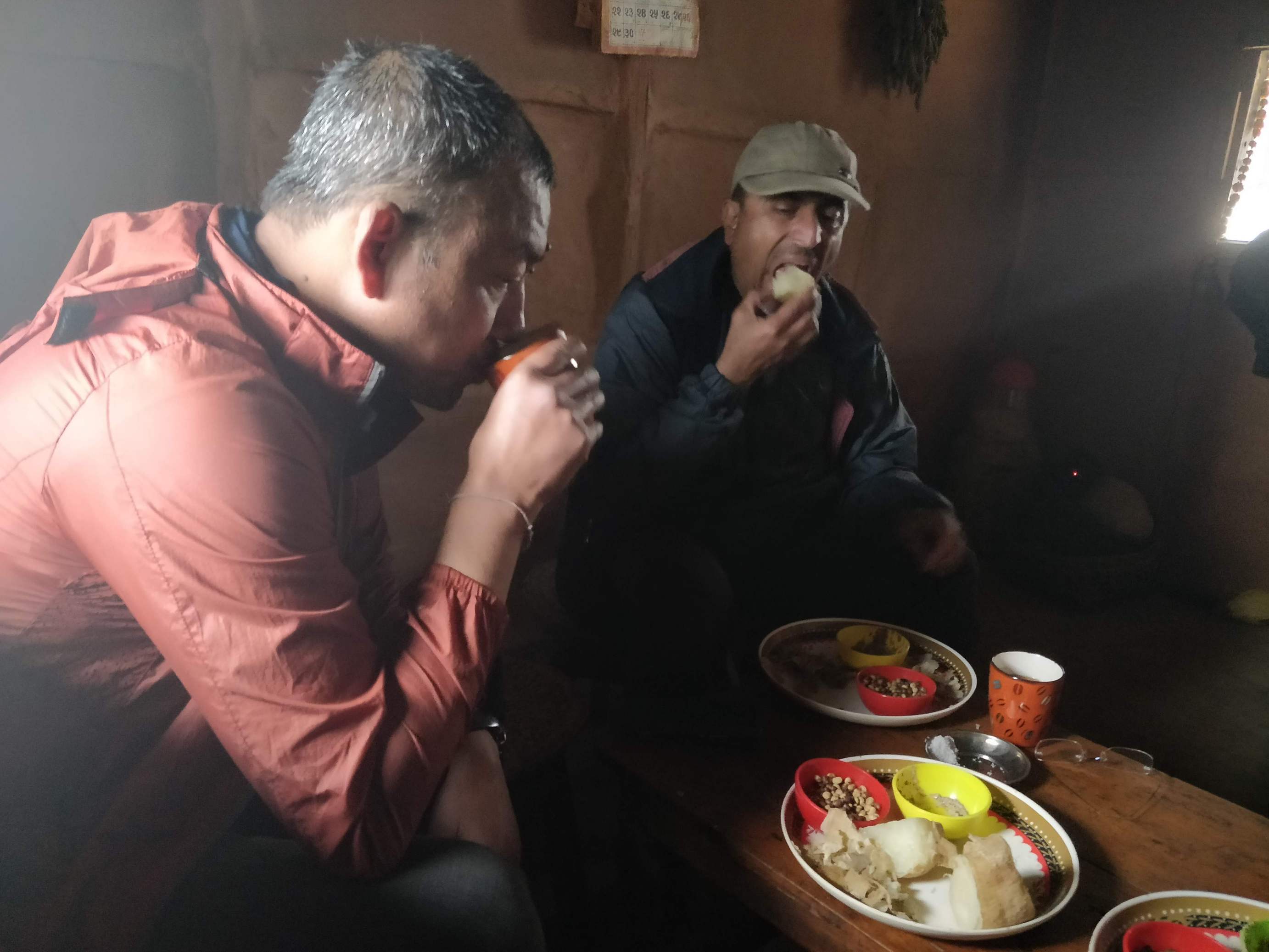
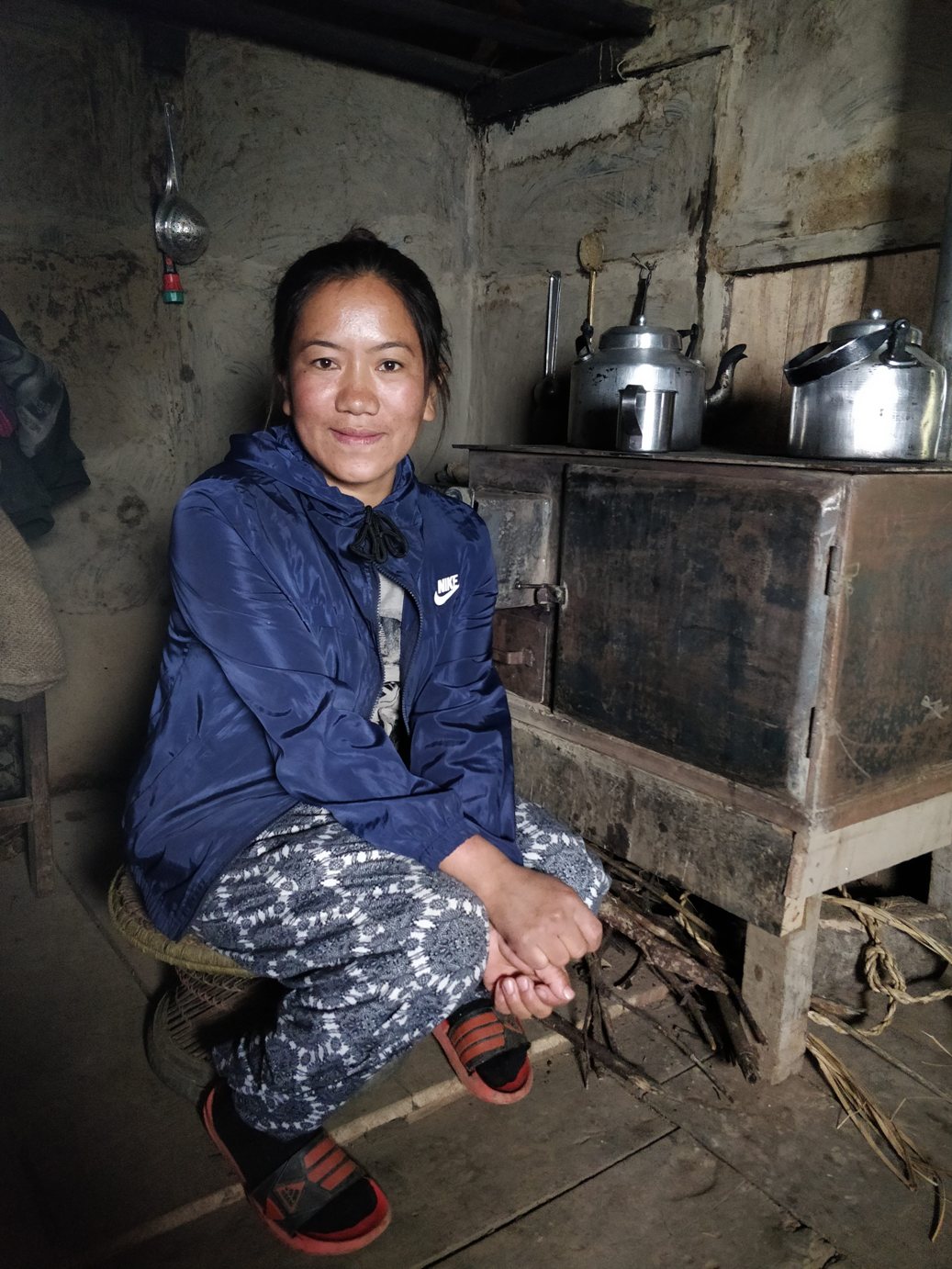
After ten minutes she feeds us with steamed choayotes’ roots to dip in achar with milk tea, local and exotic food. We are very hungry and food is most welcome. After lunch we talk little bit with Subha to know about her conditions of living here, in the jungle. Finally rain stops and we can continue our walk.
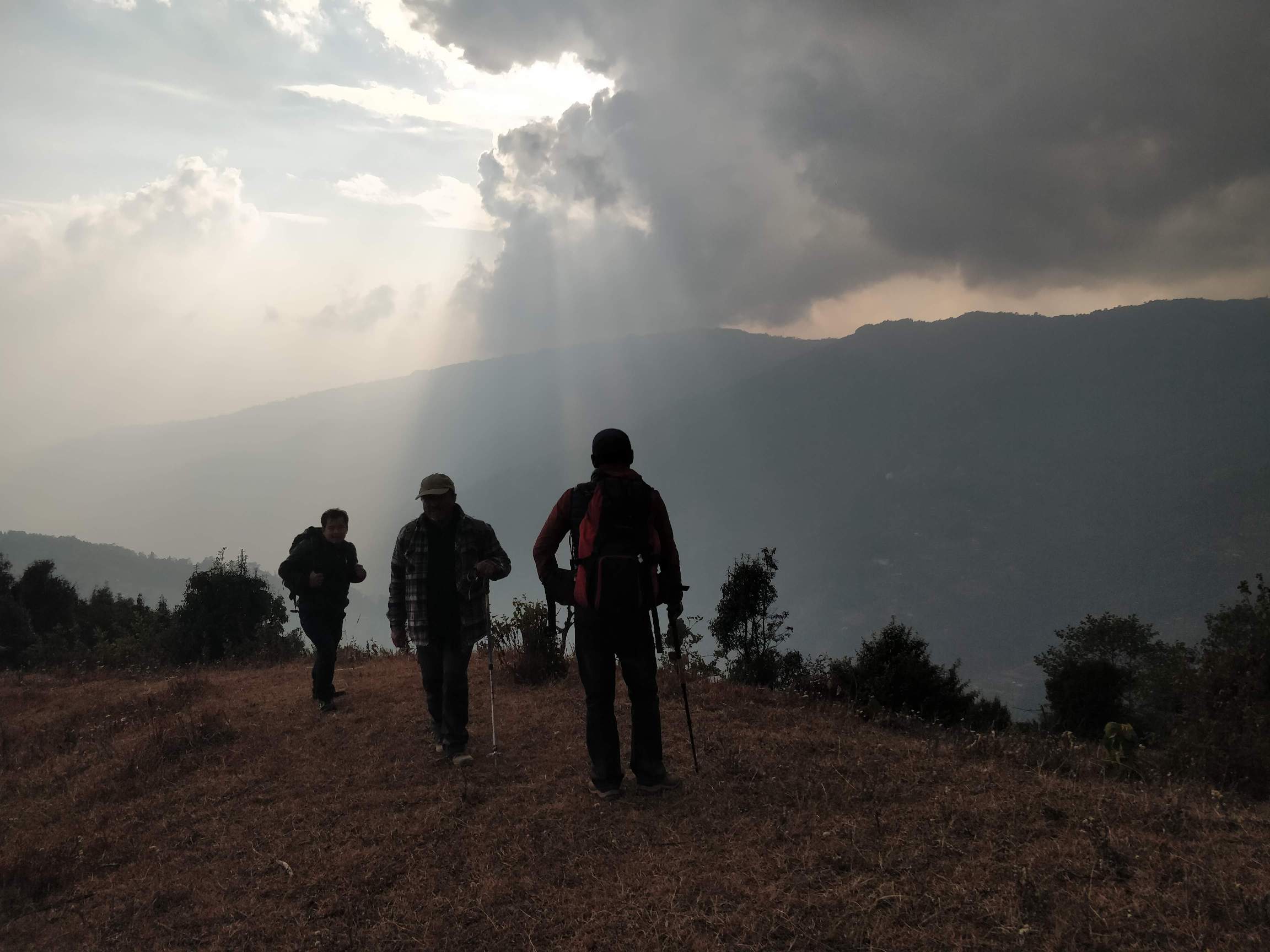
The way up is very gentle and fog slowly surrounds us. The track we follow leads us to a plateau at 2250 meters high. The fog becomes thicker and makes the place unreal dipped in the mist. A horse is stucked there, in the middle of this decor. We reach Thumke village (2150m), today’s stop. We walk down a couple of houses, the homestay where we stay is the last one.
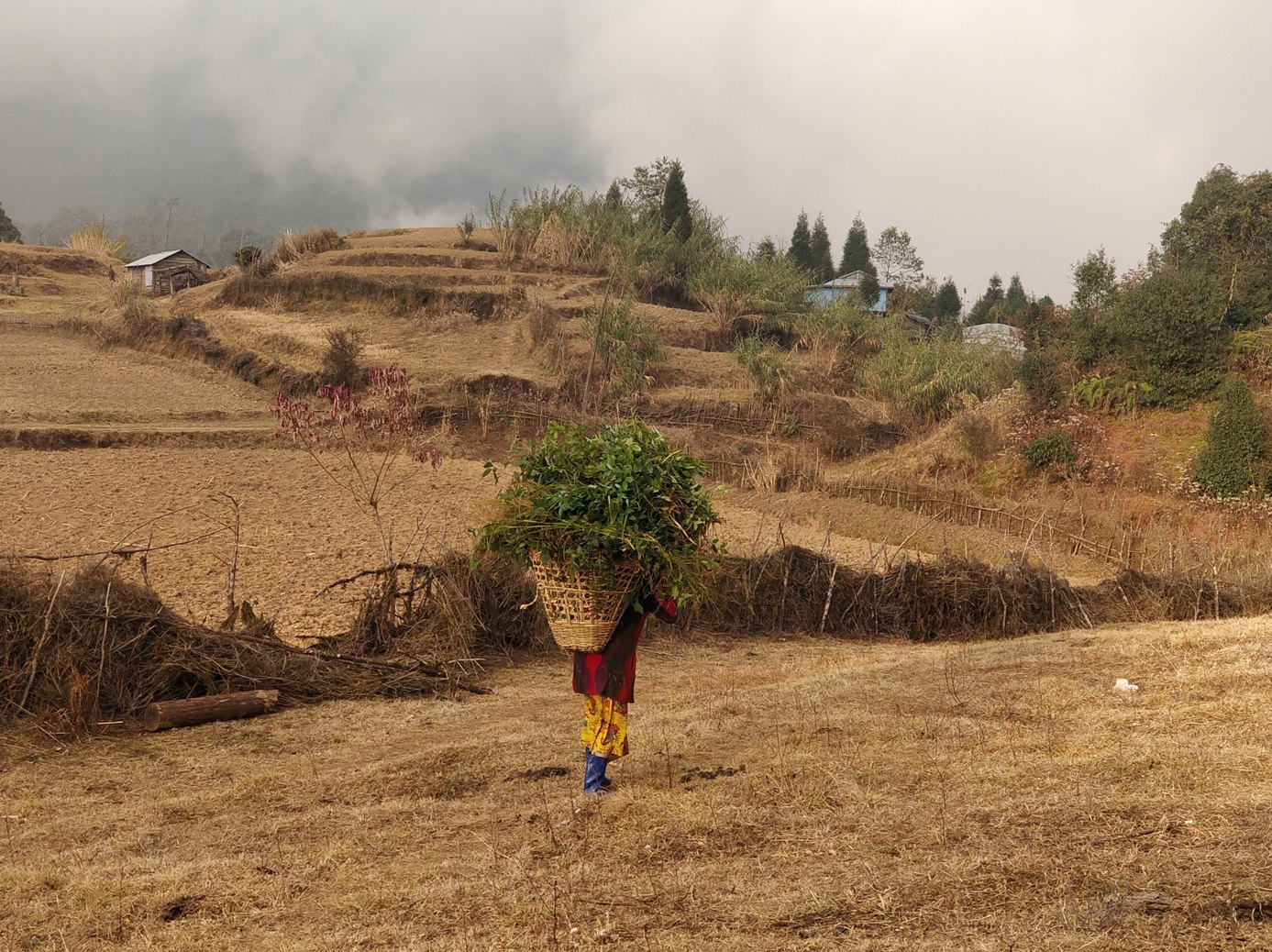
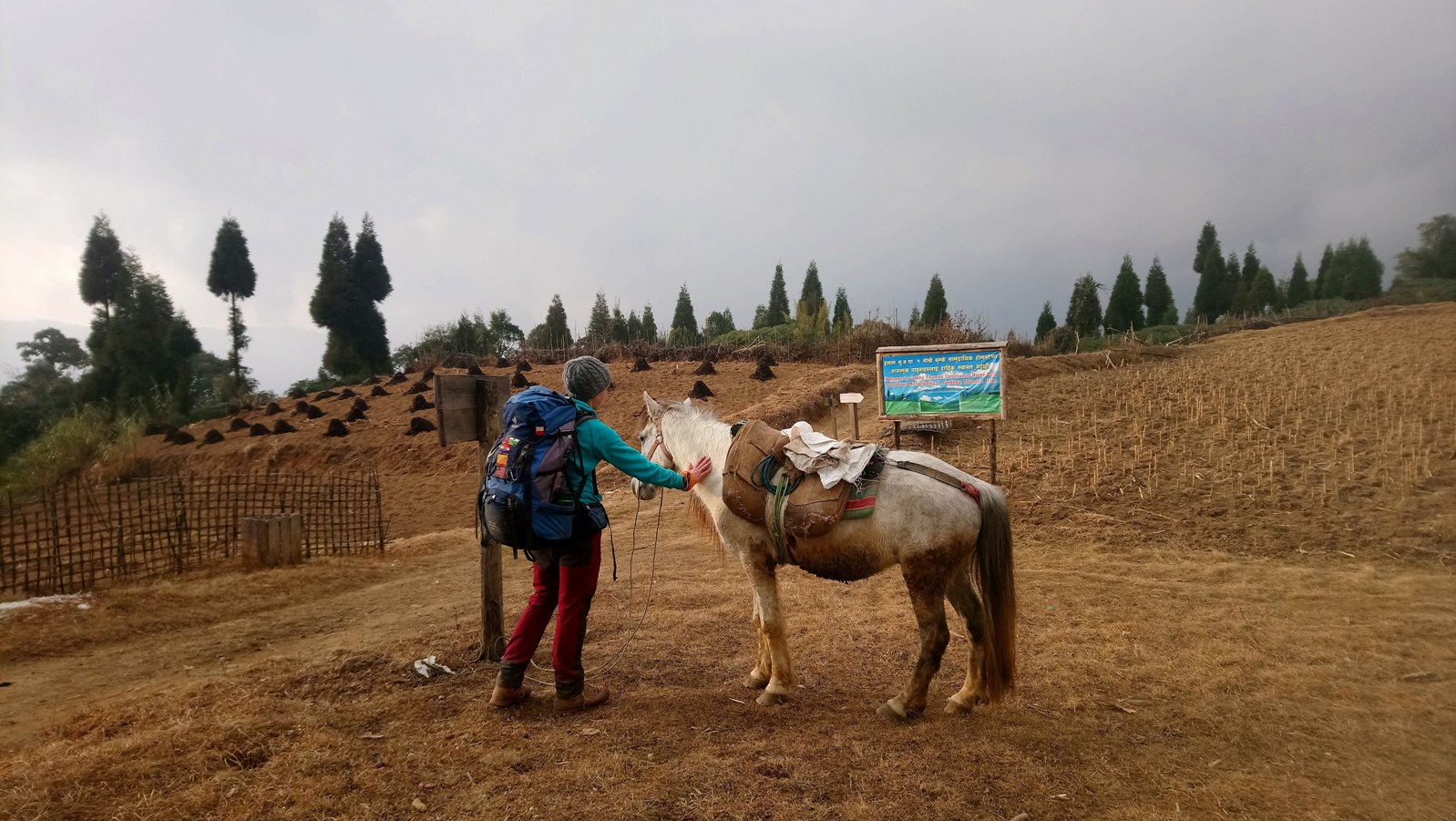
Nous sommes accueillis dans une cuisine très rudimentaire par une dame âgée et son fils qui boite et se sert d’un morceau de bois comme béquille. C’est très spartiate comme endroit mais l’accueil est chaleureux. 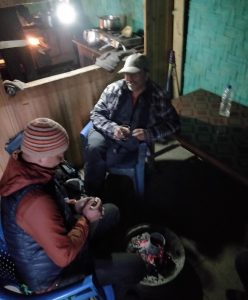
We are welcomed in a very basic kitchen by an old lady and her son limping on a wooden stick. The place is very Spartan but the welcoming is very warm. We are served with tea to warm ourselves up and we sit around a wheel rim filled with hot coals: our chimney fire for tonight. Outside is already dark.
After eating dal bhat, we go to our rooms specially arranged for passing guests: very pretty and well decorated. We did not imagine such comfort after seeing the kitchen. This is a good treat to boost morale, the night will be peaceful!
Today we walked 3h45 this morning with 845 meters going up and 10 meters down between Mayaon Khola (1100m) and Mane Danda (1900m). This afternoon we walked 1h30 with 330 meters going up and 90 meters down between Mane Danda and Thumke (2150m).
Day 3 – 10 january 2019 – trek Thumke > Tumling
The mist has lifted and the sky is blue. I walk to visit around the house as yesterday was already dark when we reached homestay. It is interesting to see that, in this region, every house has different outbuildings: one building for the kitchen, one building for the rooms, one building for the restroom and bathroom… Elsewhere we would have seen all these amenities gathered in a single building. Little bit down is the stable with cows and goats.
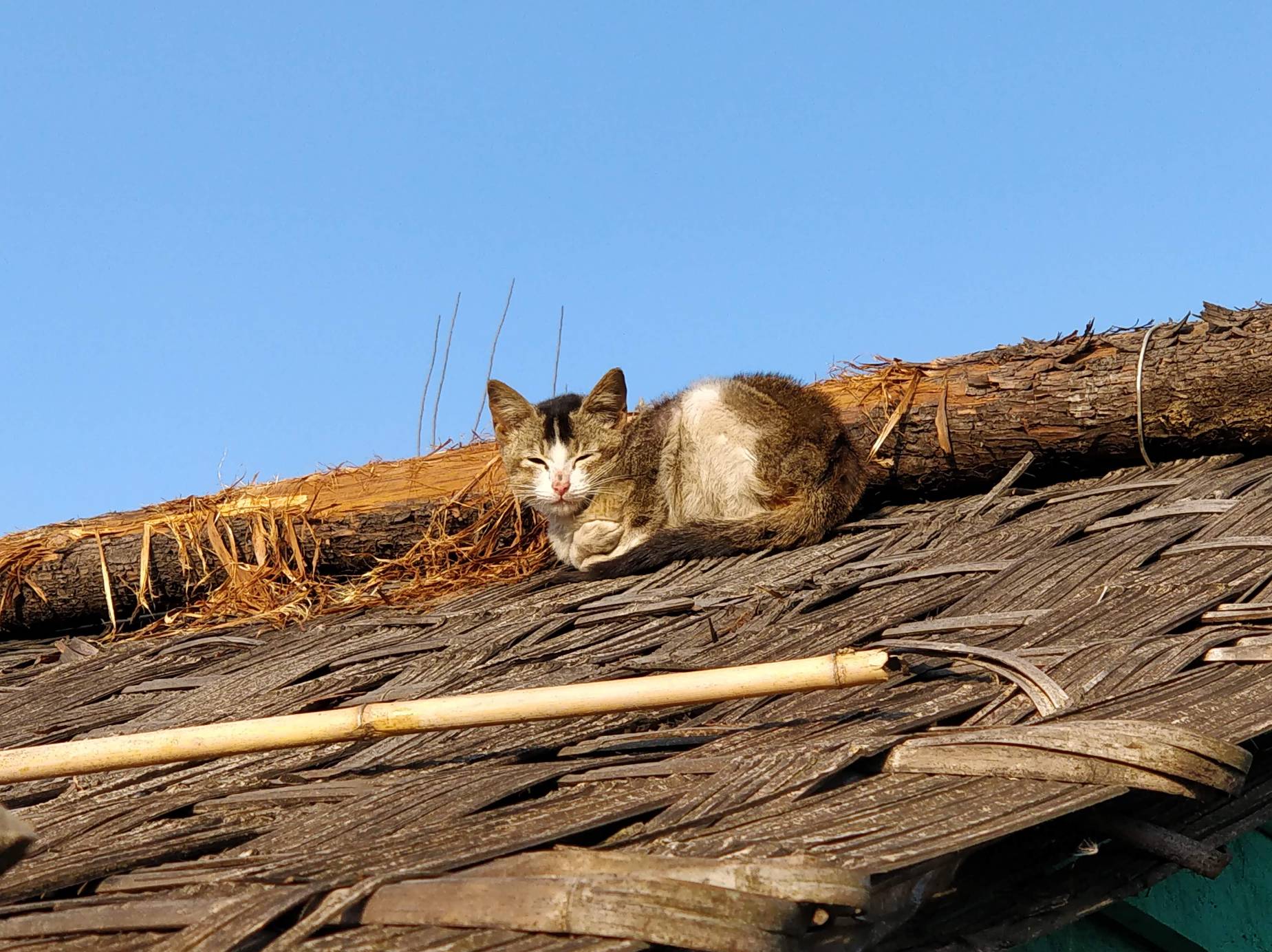
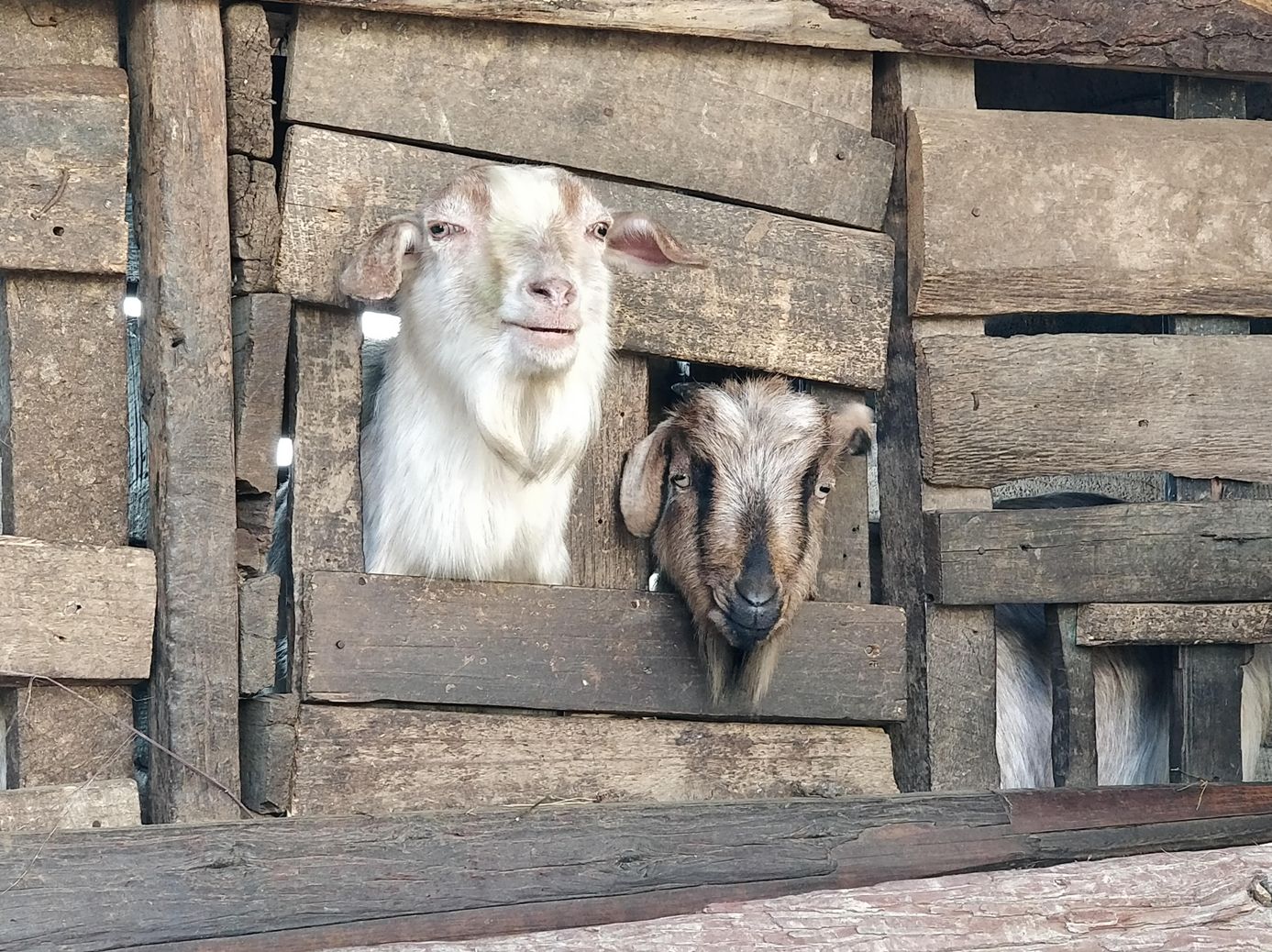
The breakfast is ready, chapatis and vegetables curry to start our day. We leave our hosts at 8 o’clock after a short ceremony with tikka (the red mark on the forehead) and kathas (blessing scarfs). The welcome was particularly warm from people who do not have a lot as a living but keep on bending over backwards to serve us in the best way they can. The Nepalese hospitality at its best.
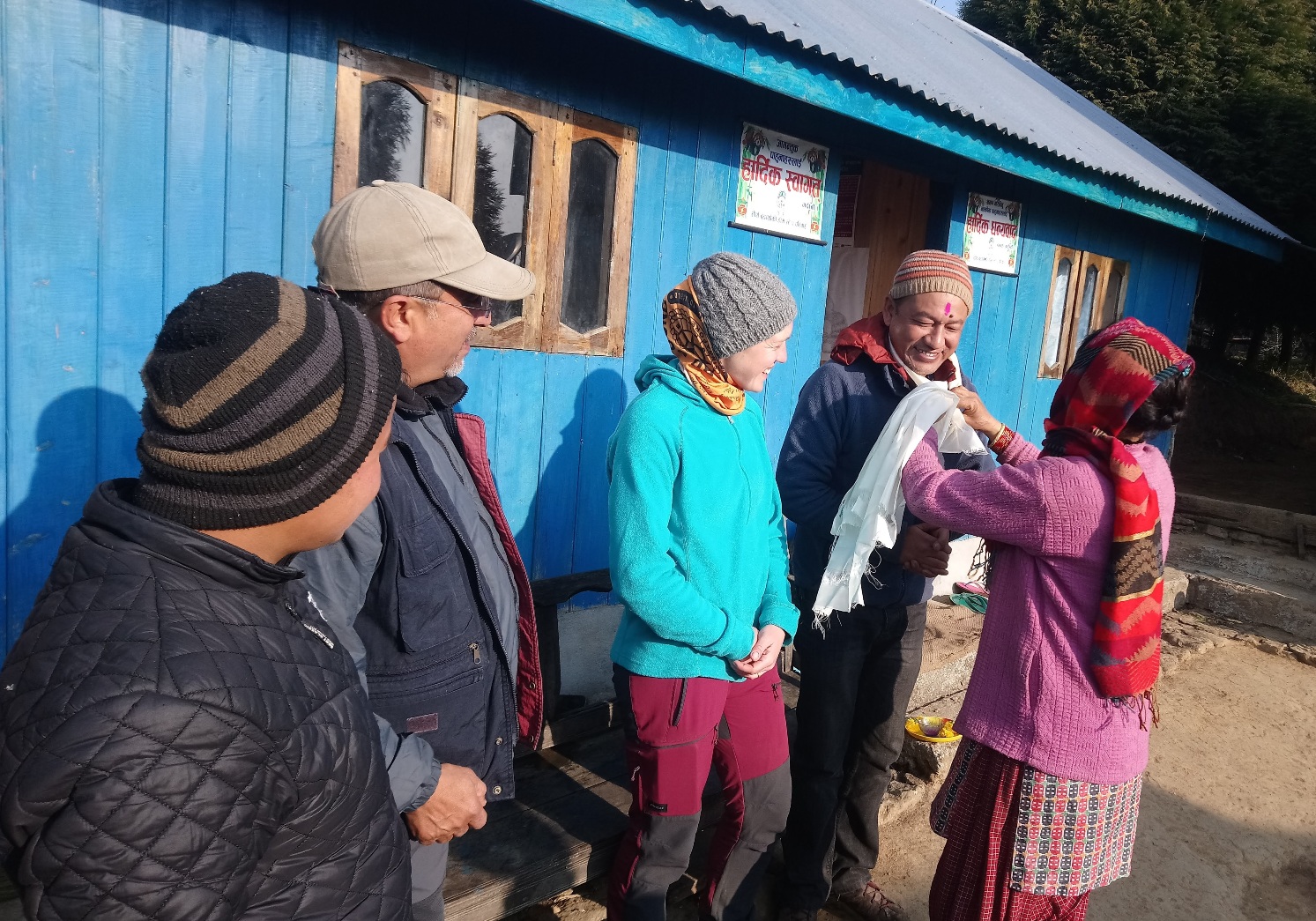
The path goes up in the forest and we cross a herd of twenty cows. I wonder then that we see a lot of cows in this region but not buffalos that we are used to see somewhere else in Nepal. Kedar explains us that local people are selling unproductive cows (who do not give milk) as well as calves, oxen and bulls for their meat which is bought and eaten on the other side of the Indian border, few hundreds meters away as the crow flies. This explains that. In Nepal, it is forbidden to eat cow or beef meat, but in India yes. The sky becomes cloudy and fog is coming.
The jungle we are going through is well known as the natural habitat of the red panda, this little mammal who looks like a raccoon in a red-haired color. It lives in temperate forests above two thousands meters elevation and eats exclusively bamboo. It is exactly the environment we are walking in. But during this season, the red panda has less activity and it is almost impossible to see this endangered animal.
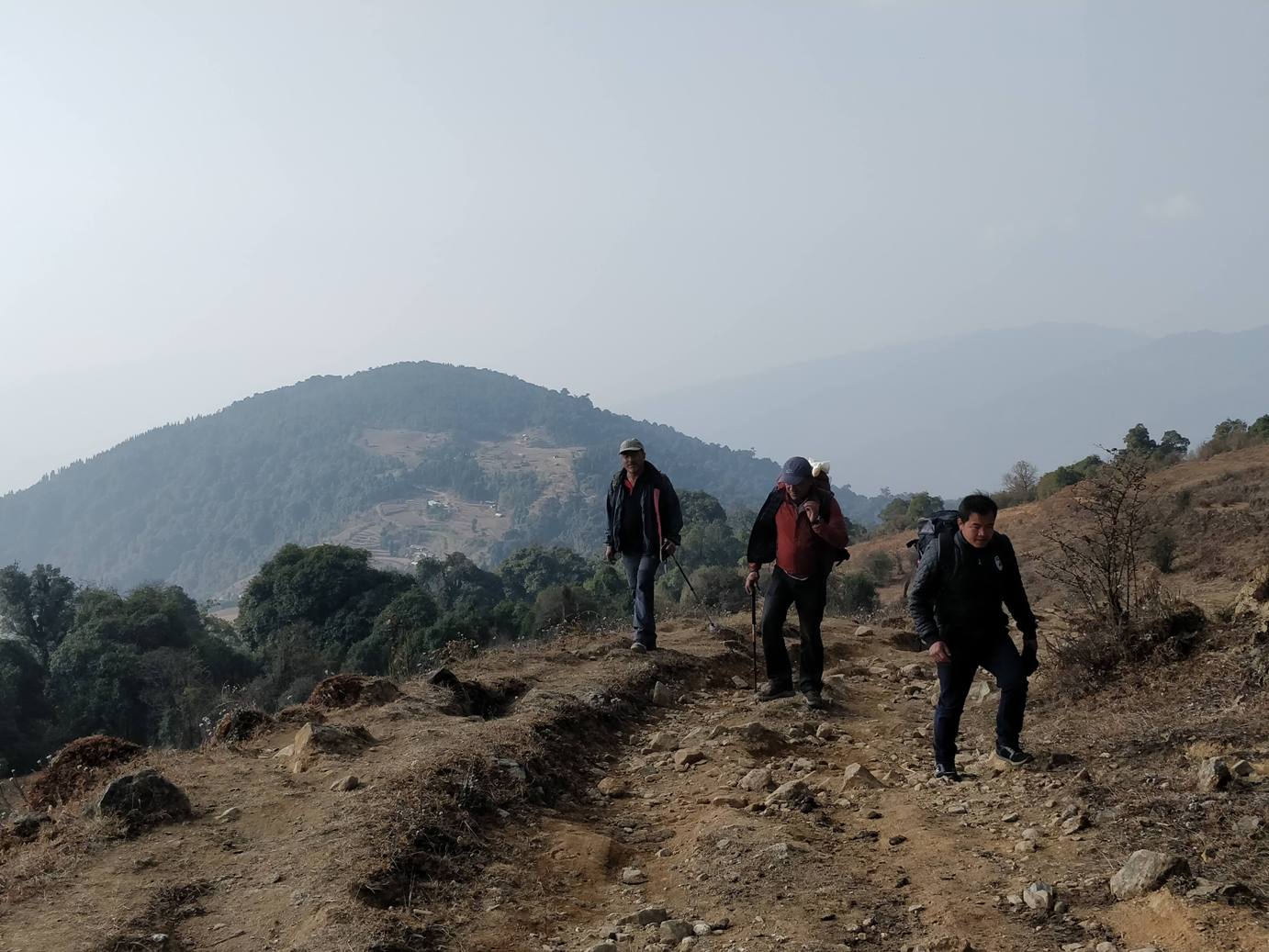
As we keep on going up, we reach to a trail in an opened sky with vegetation at ground level which becomes scarcer. In different spots we see lokta trees which are used in Nepal to produce the lokta paper or rice paper. We keep on walking in this unreal environment dipped with mist that unfortunately covers up the landscapes around.
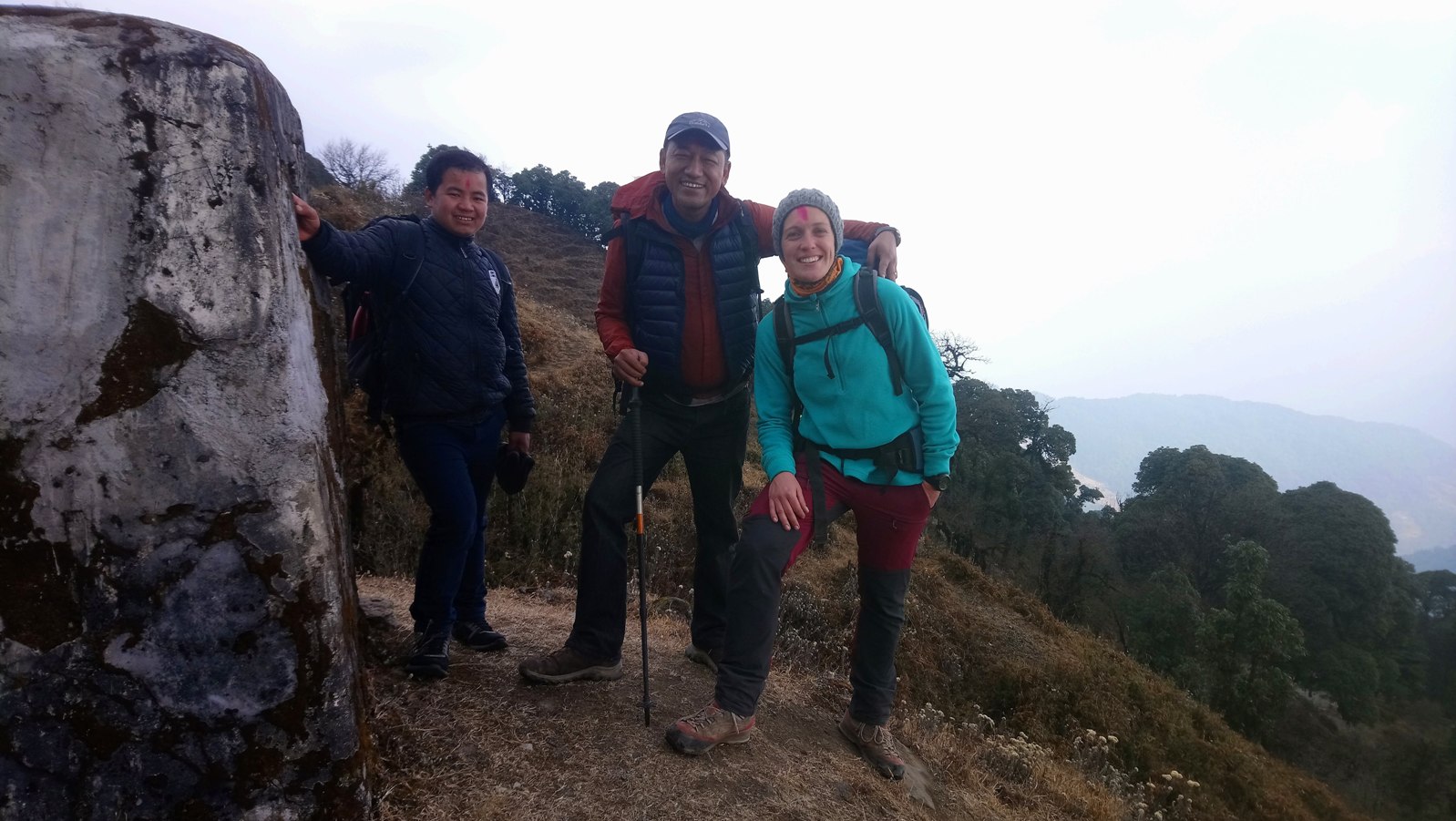
While making our way, we soon reach to a nice blacktopped road. It is the Indian broder, this road is in India. We are going to follow the road today and tomorrow. We do not cross any village or house until our lunch break in Meghma (2700m), a small town settled astride two countries: Nepal and India. The road crosses through this village and we have to stay on the other side for lunch, in India!
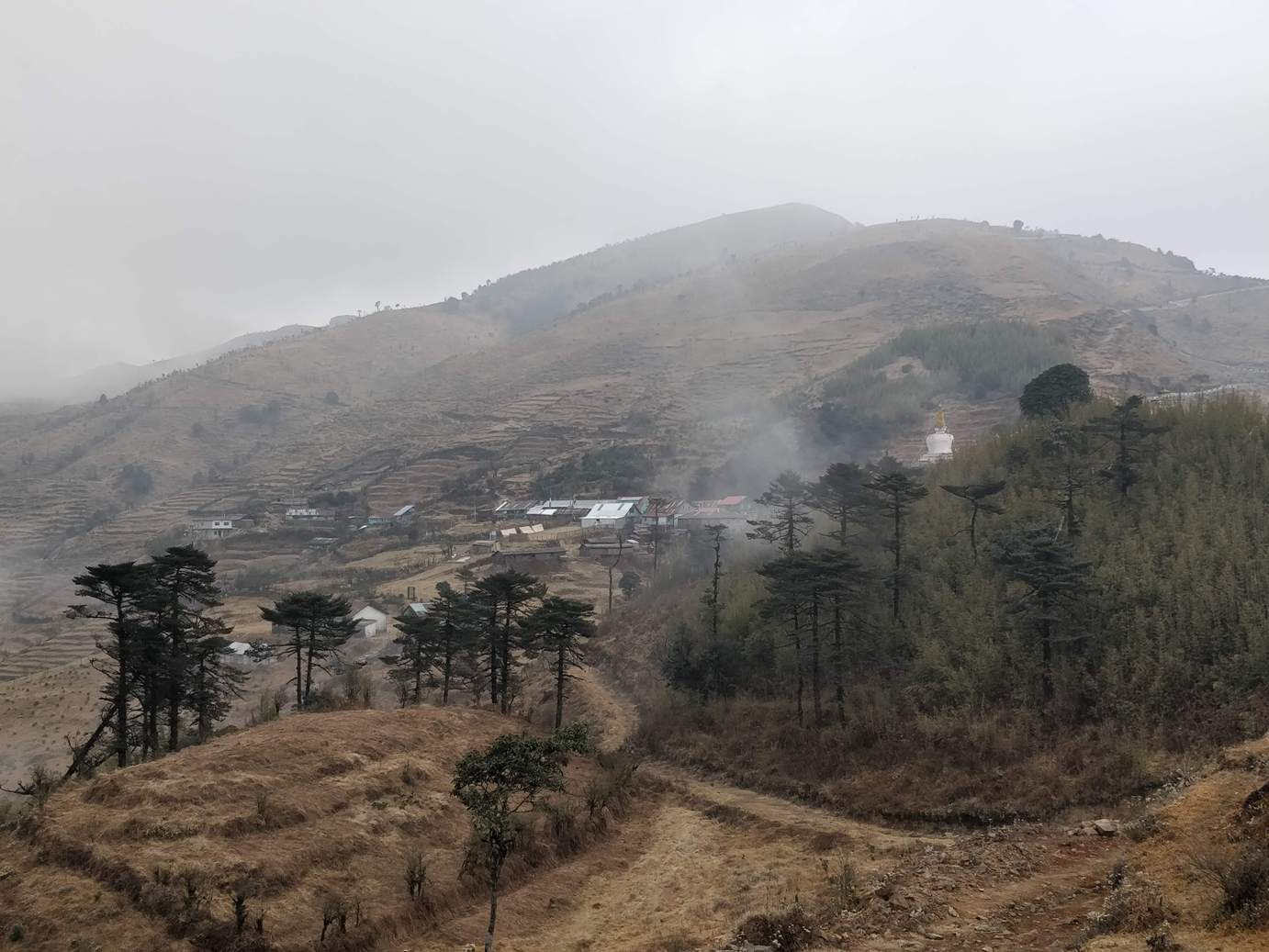
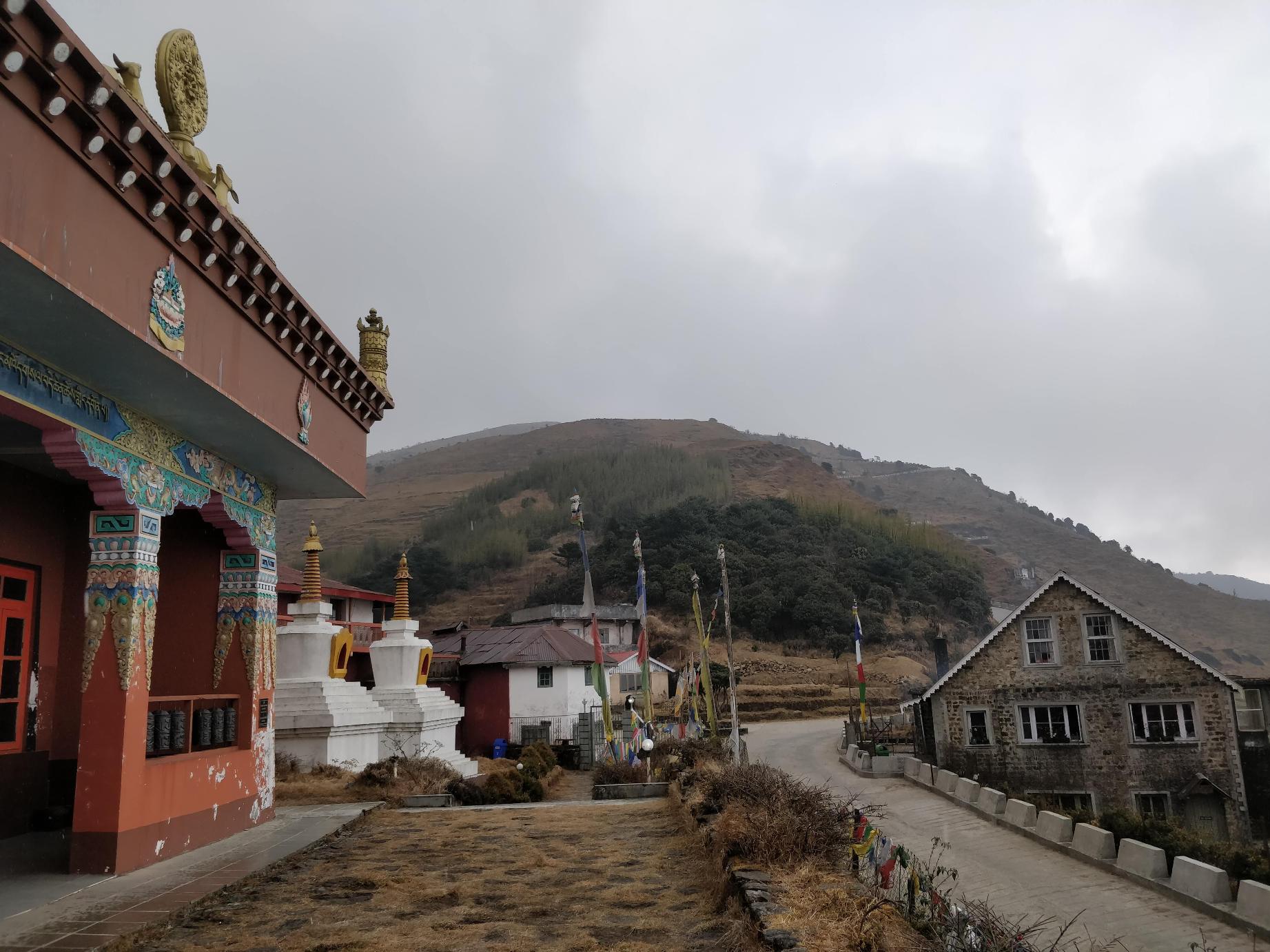
Our hosts do not consider themselves neither Nepalase, nor Indian, they are “border people” as they tell us after asking. Moreover transactions are dealt either in Nepalese rupees or in Indian rupees. Outside, snowflakes are starting to fall. We eat a plate of chowmeins before paying a visit to Meghma monastery, in Nepal this time.
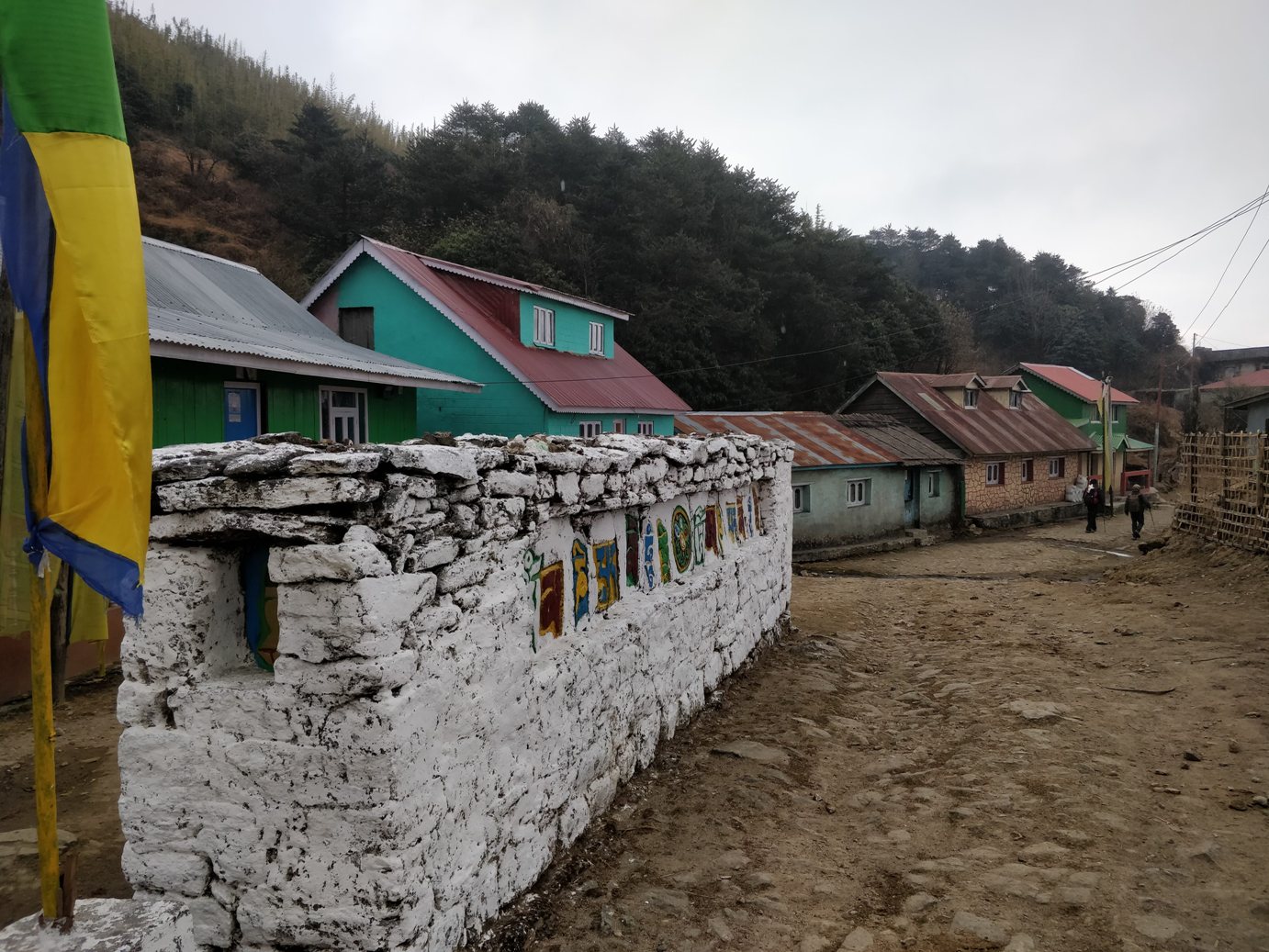
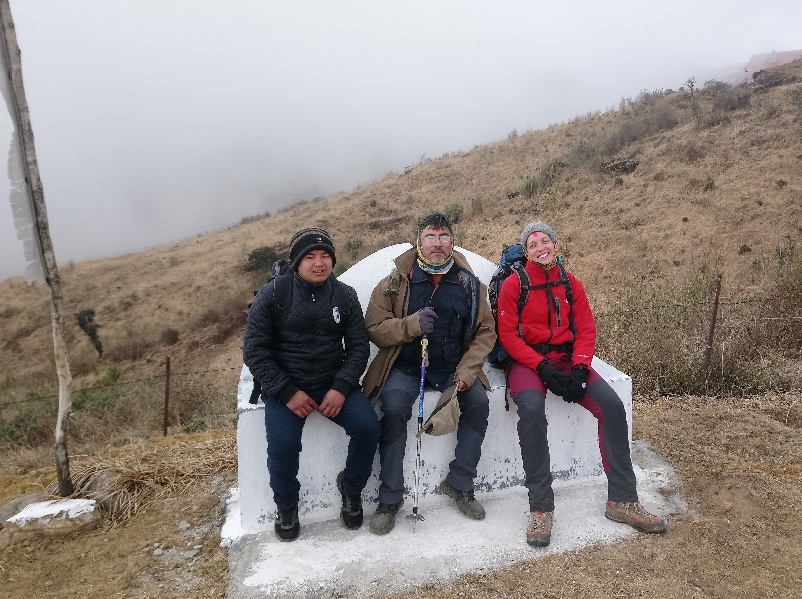
In the beginning of afternoon we make our way in a thick fog which will stay with us for the rest of the day. Slowly, we walk to Tumling (2850m), a village of hotels. Settled besides the road, along the border, this place is famous for sunrises and sunsets over Kanchenjunga. It welcomes many tourists from Nepal, India and Bangladesh.
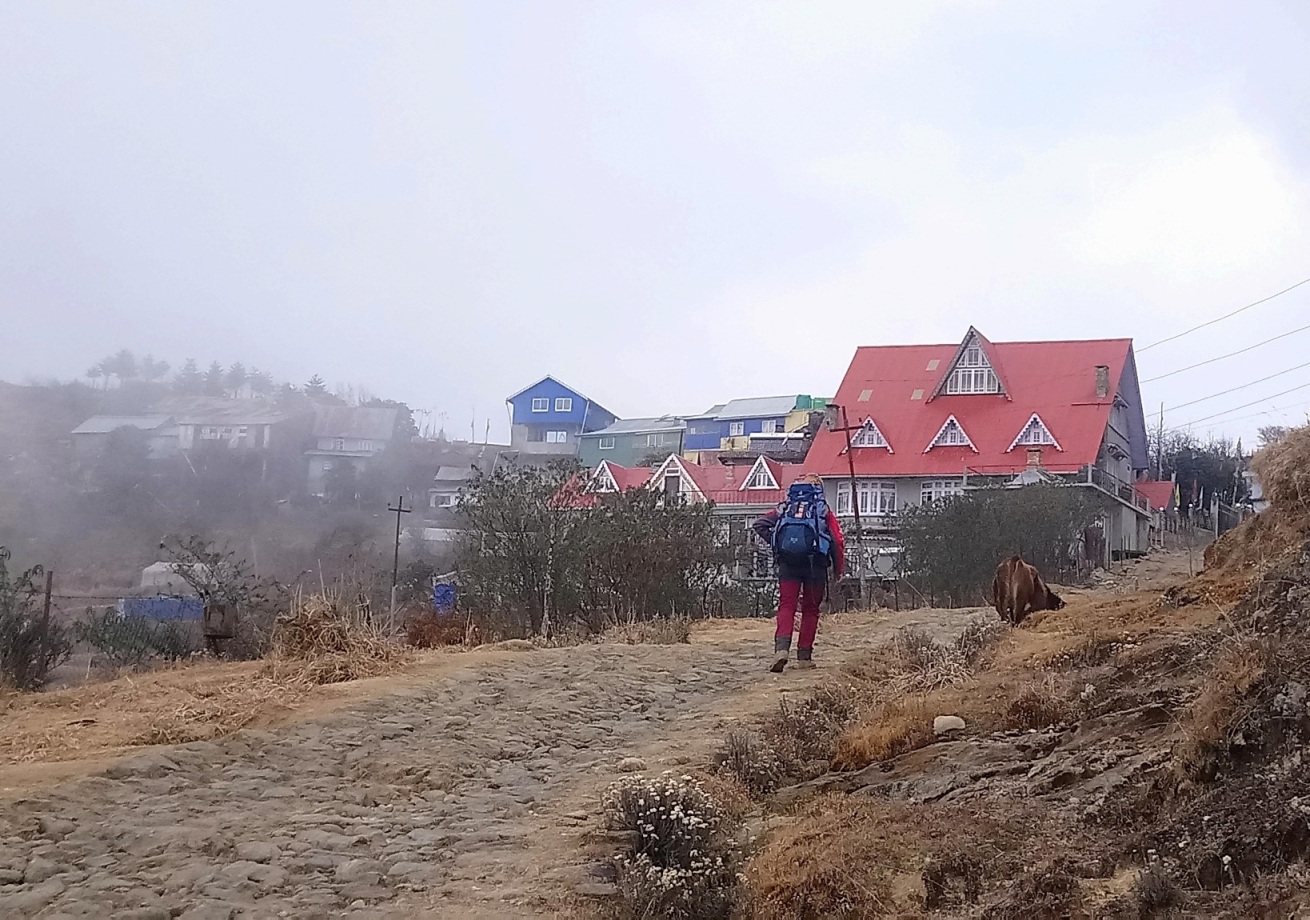
After visiting some hotels, we quickly have the feeling of not being welcome. Hoteliers are not friendly at all and we have the impression of bothering them. Someone even tells us to walk one more hour to the next village where the view is also very nice. This manner is quite strange and disturbing. Is it the “border atmosphere”? Though we had a great time in Meghma during the lunch with funny and warm hosts. Moreover, rooms’ rates are super expensive and only given in Indian rupees. Anyhow, our wish was to stay here for overnight.
We choose a small hotel run by young girls who spend most of their time in front of their mobiles besides fire and answering half of our questions about life at the border. I am feeling very uncomfortable, I have been living in Nepal for almost ten years and I have never experienced this kind of behavior from Nepalese people, and especially from people running hotels and used to welcome many tourists. We spend the rest of the day outside under the snow or in our room, waiting for dinner. The dal bhat, even if it is very tasty, is served in a breezy place, after being refused to close the door because, I quote “if the door is closed, clients do not come”. Then we go to bed.
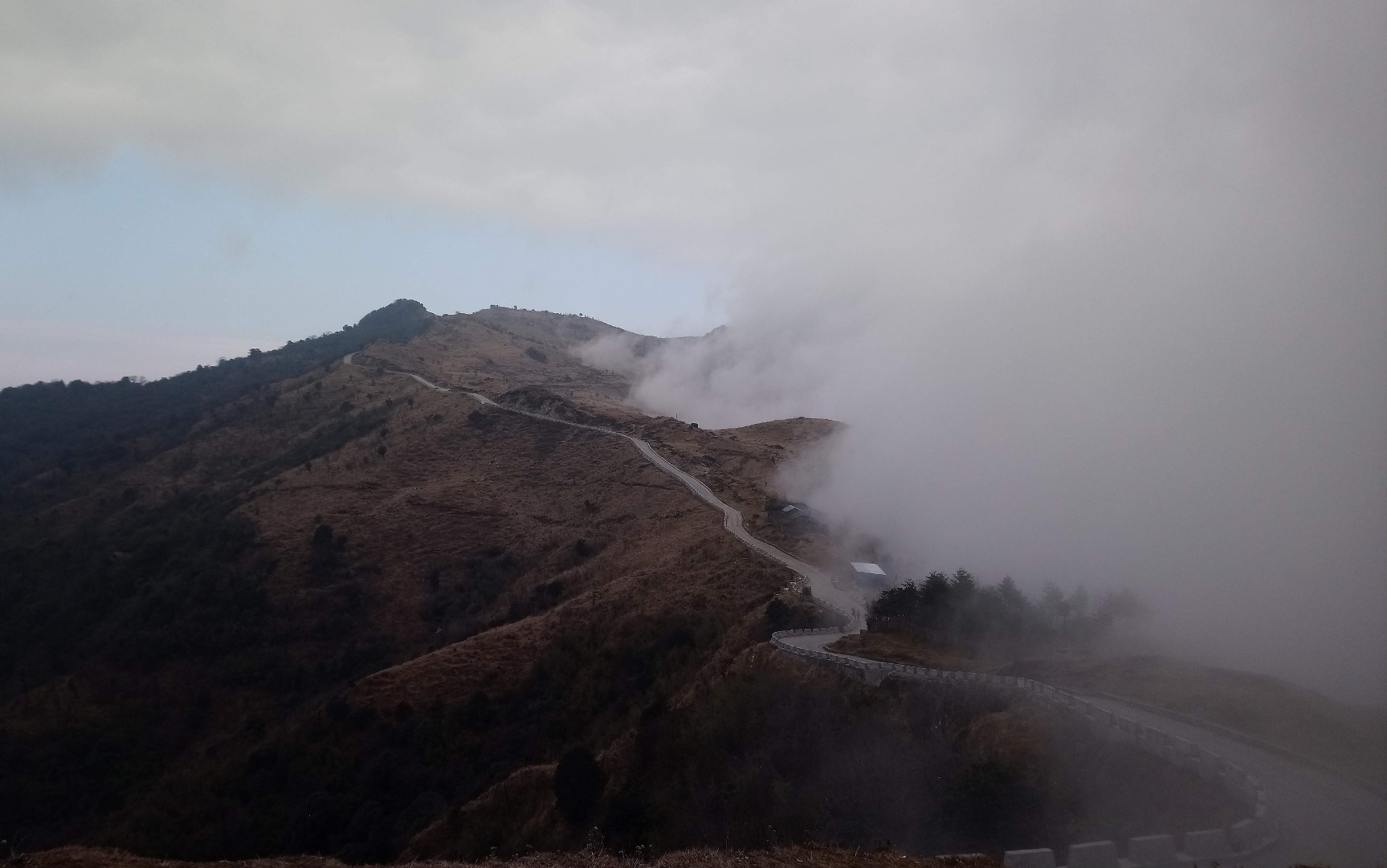
Tumling is definitely a place to forget for the next passages in this region. We simply want to forget this cold town (in every sense of the word) and not giving a true picture of what Nepal is.
We walk 2h15 from Thumke to Meghma (2700m) with 545 meters up and 5 meters down. After lunch we reach to Tumling (2850m) in 1h15 with 145 meters going up and 70 meters going down.
Day 4 – 11 january 2019 – trek Tumling > Jamuna
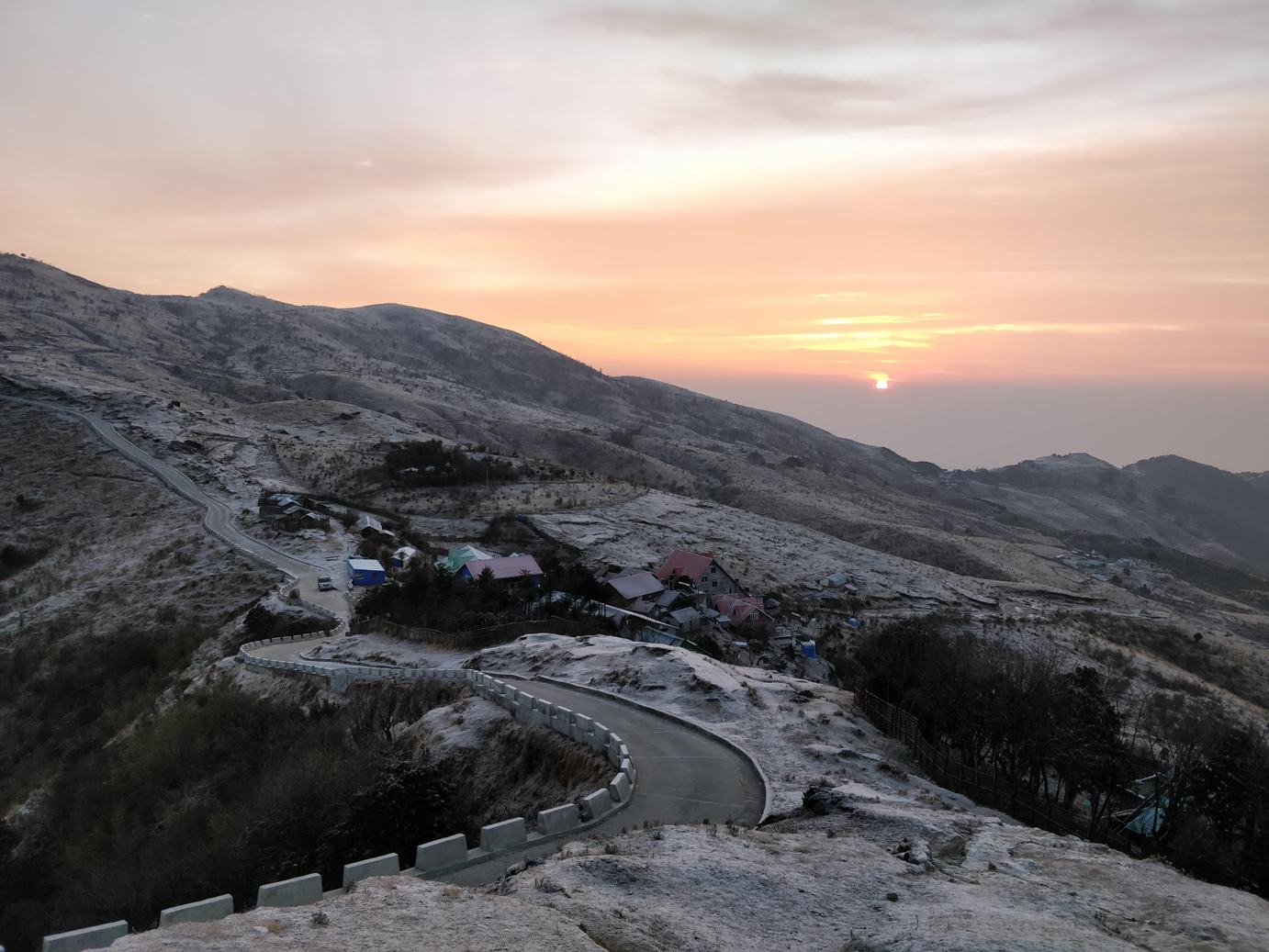
This morning, the alarm clock rings very early to go enjoy the sunrise. Unfortunately the weather is not so good and it is not possible to see Kanchenjunga and other mountains from Tumling. Back to our rooms we pack our stuff. No wish to stay longer in this inhospitable village, we decide to leave empty stomach and to take our breakfast in the next village: Jhaubari.
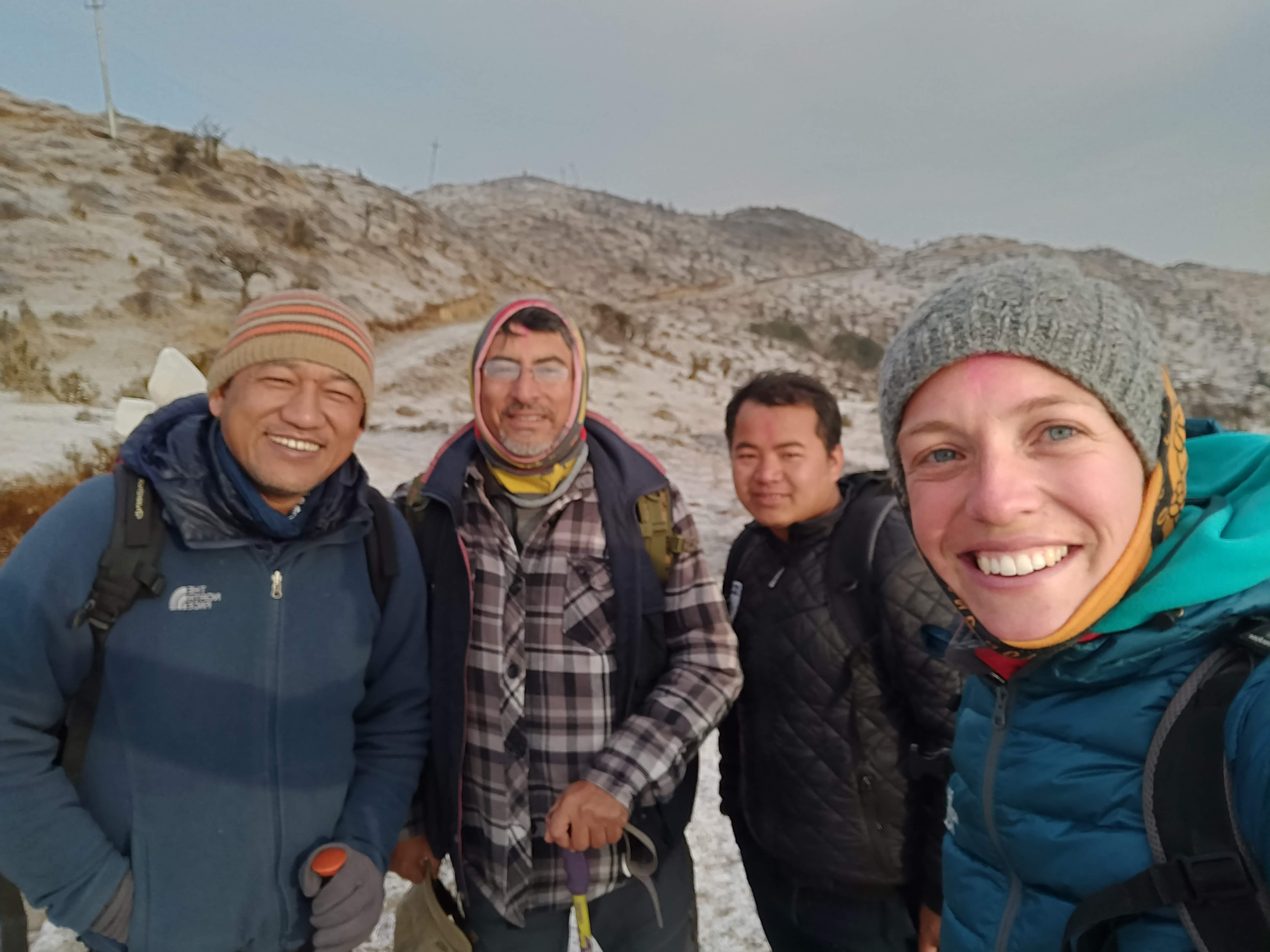
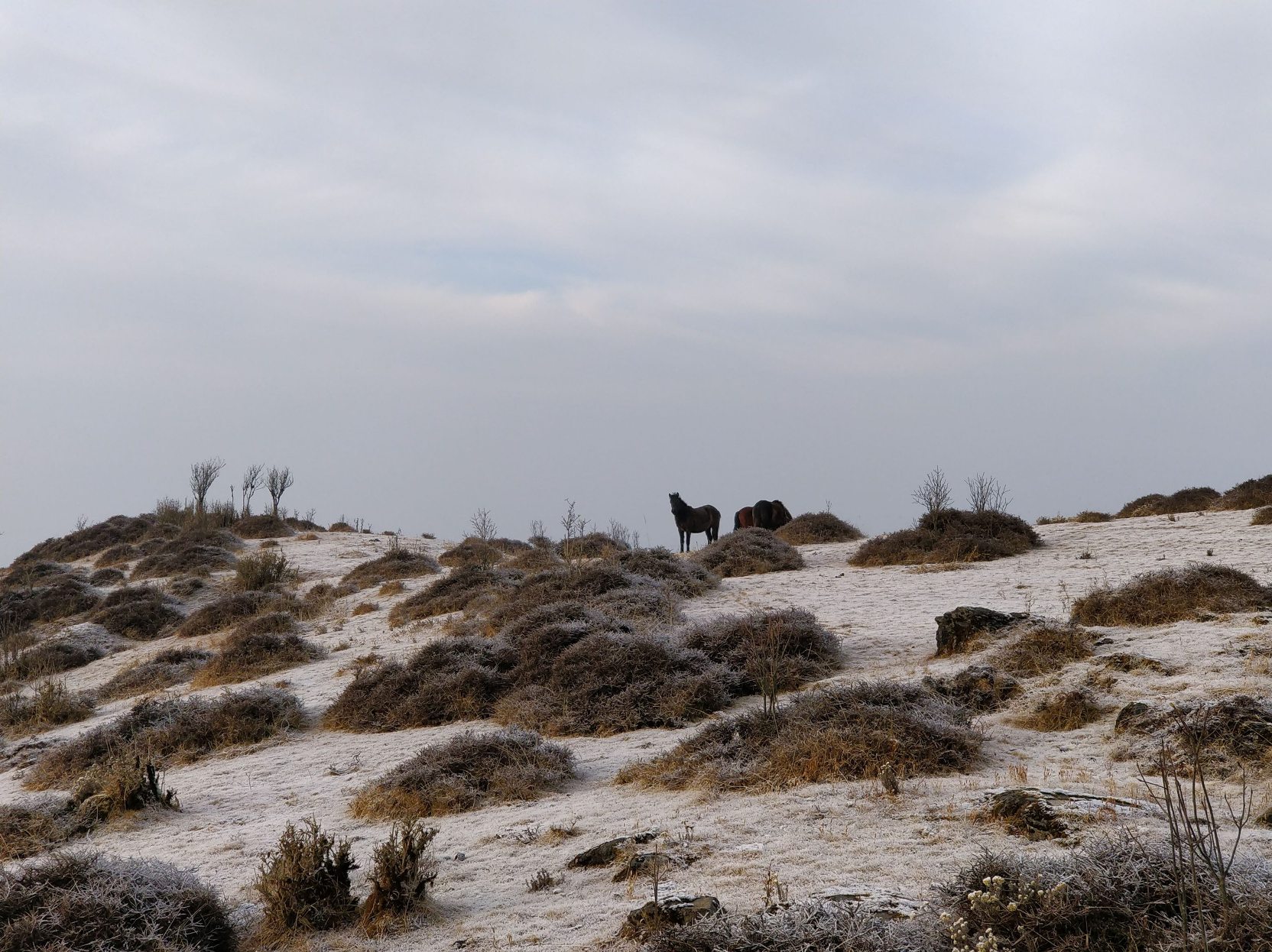
The path to Jhaubari (2750m) is mostly flat. We walk on a small bed of snow fallen the day before which gives lots of beauty to the surrounding environment. At the entrance of the village there is a police check post where we stop to register our names. Policemen there suggest us a small hotel-restaurant where we can have something to eat. The lodge owner welcomes us with a big smile and makes us forget about the unfortunate experience of Tumling. He feeds us with omelet, noddles soup and tea. After talking for a while with him and visiting around the village and the monastery, we continue our trek.
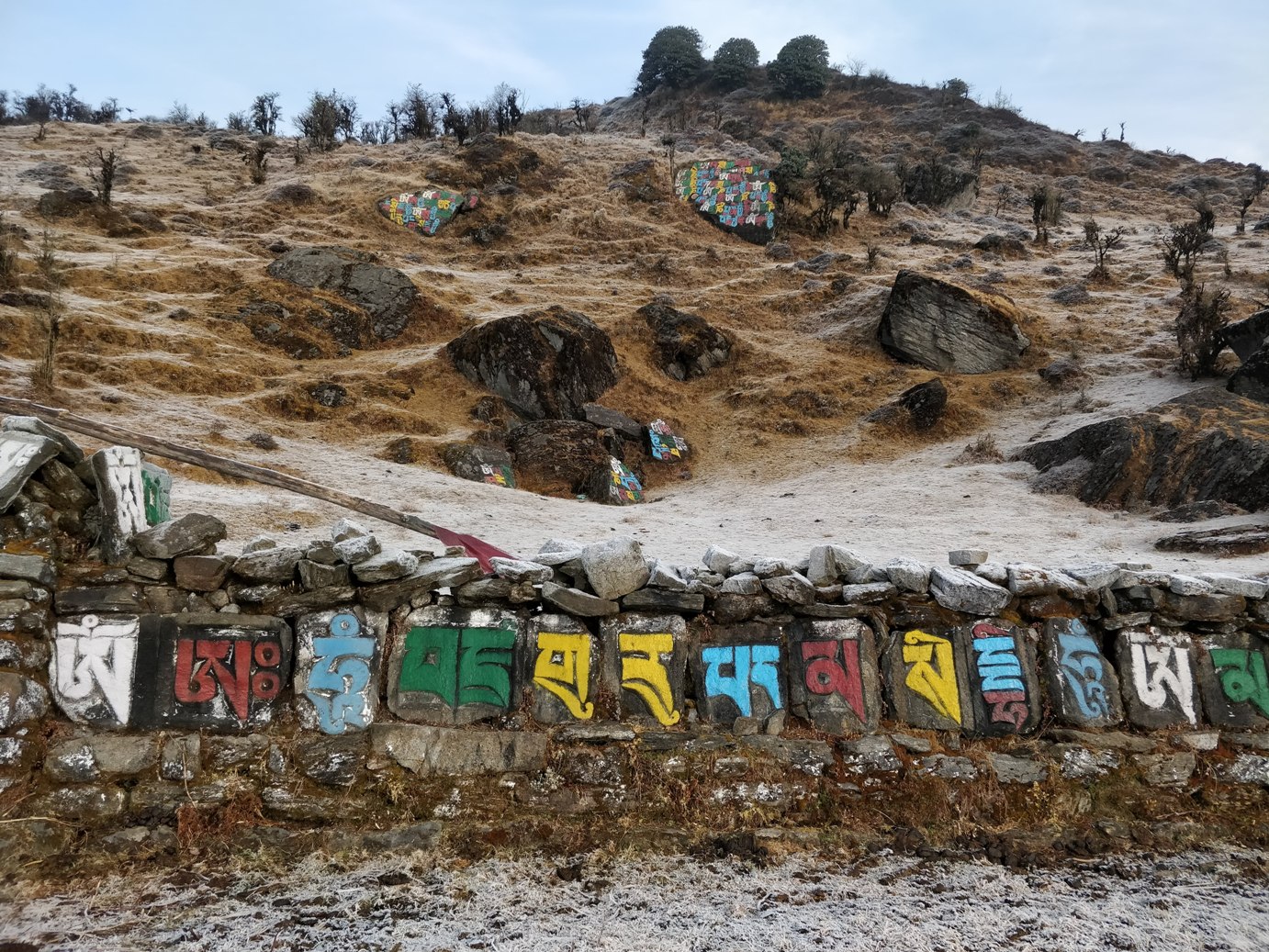
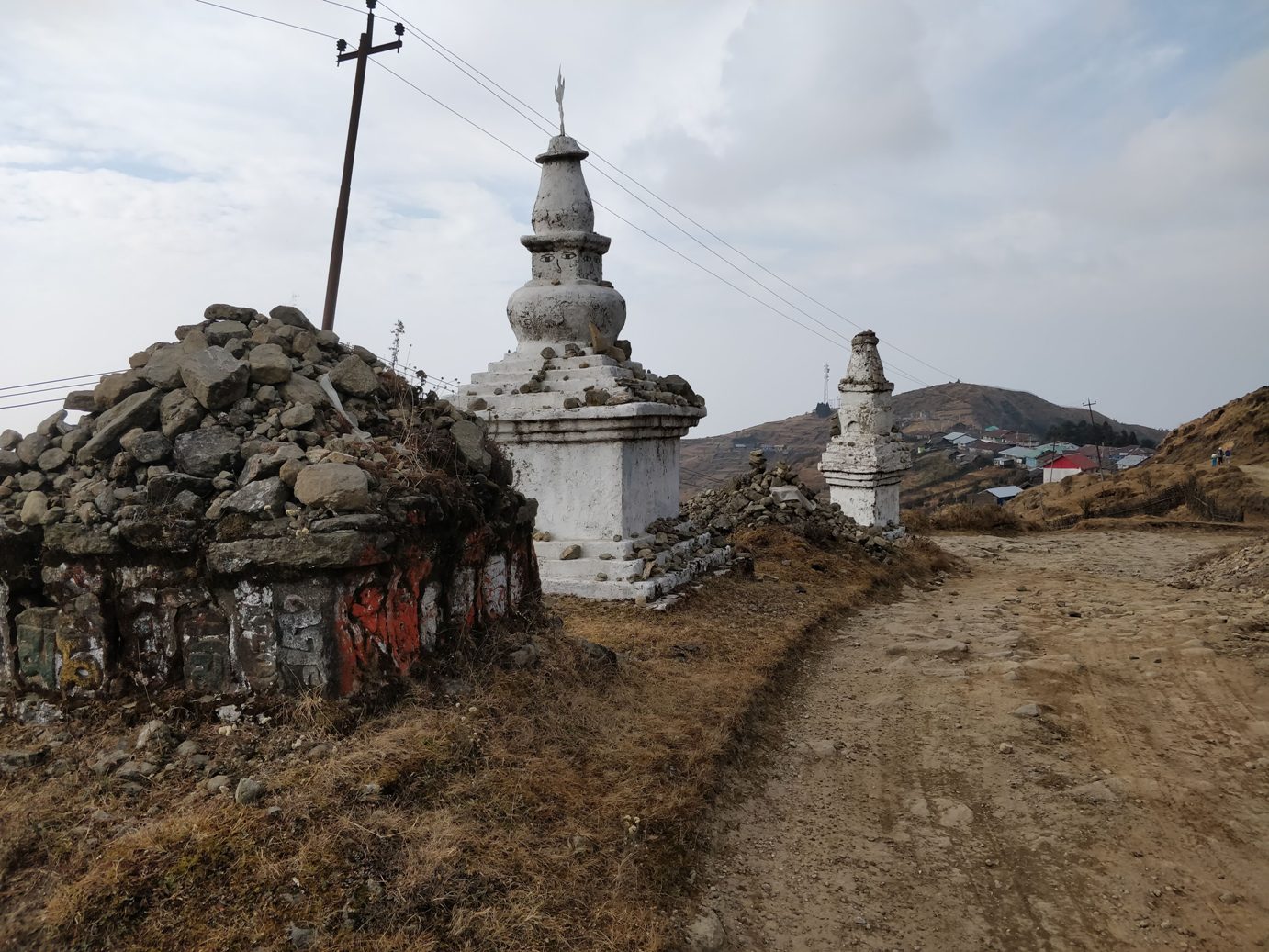
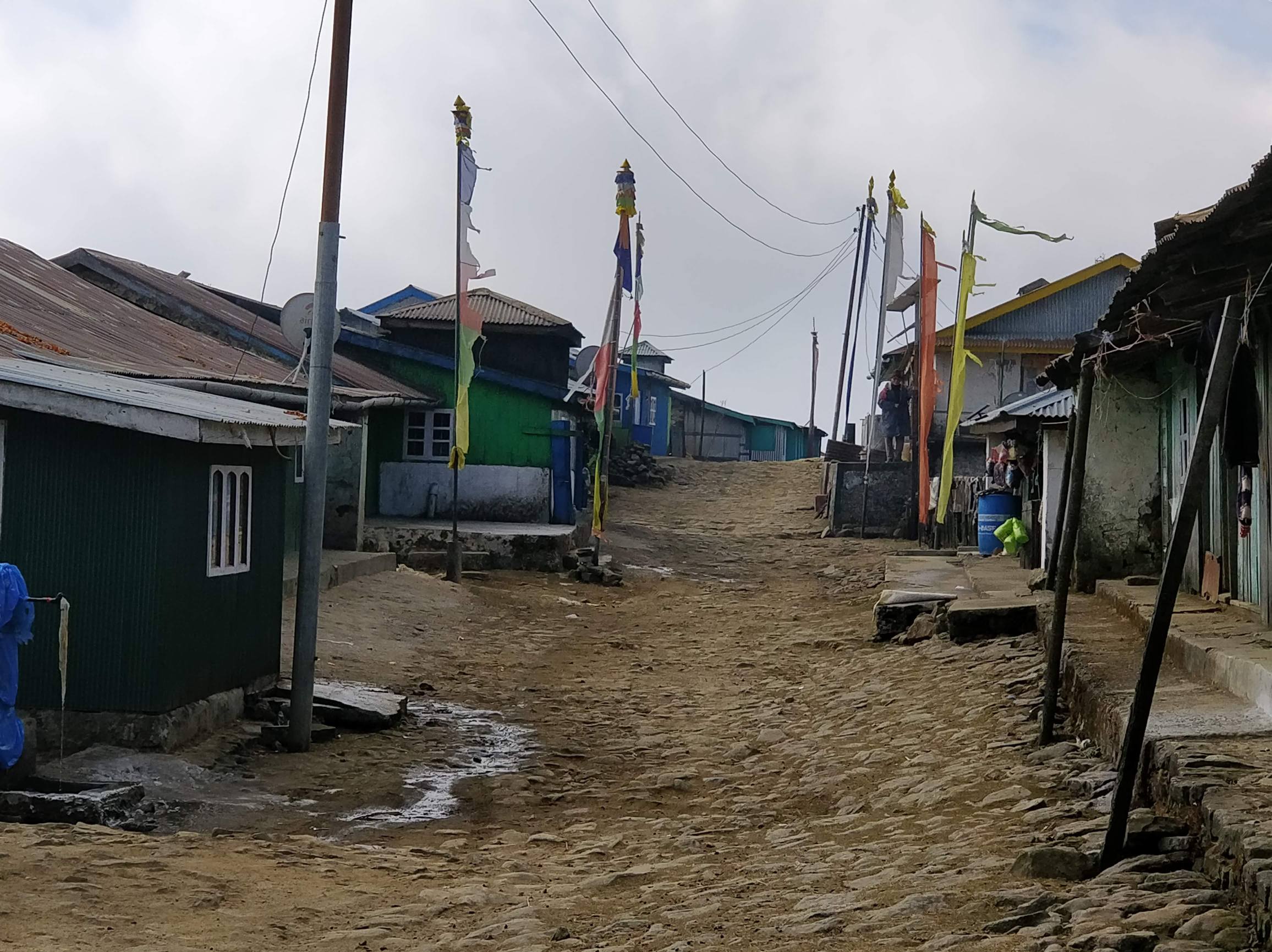
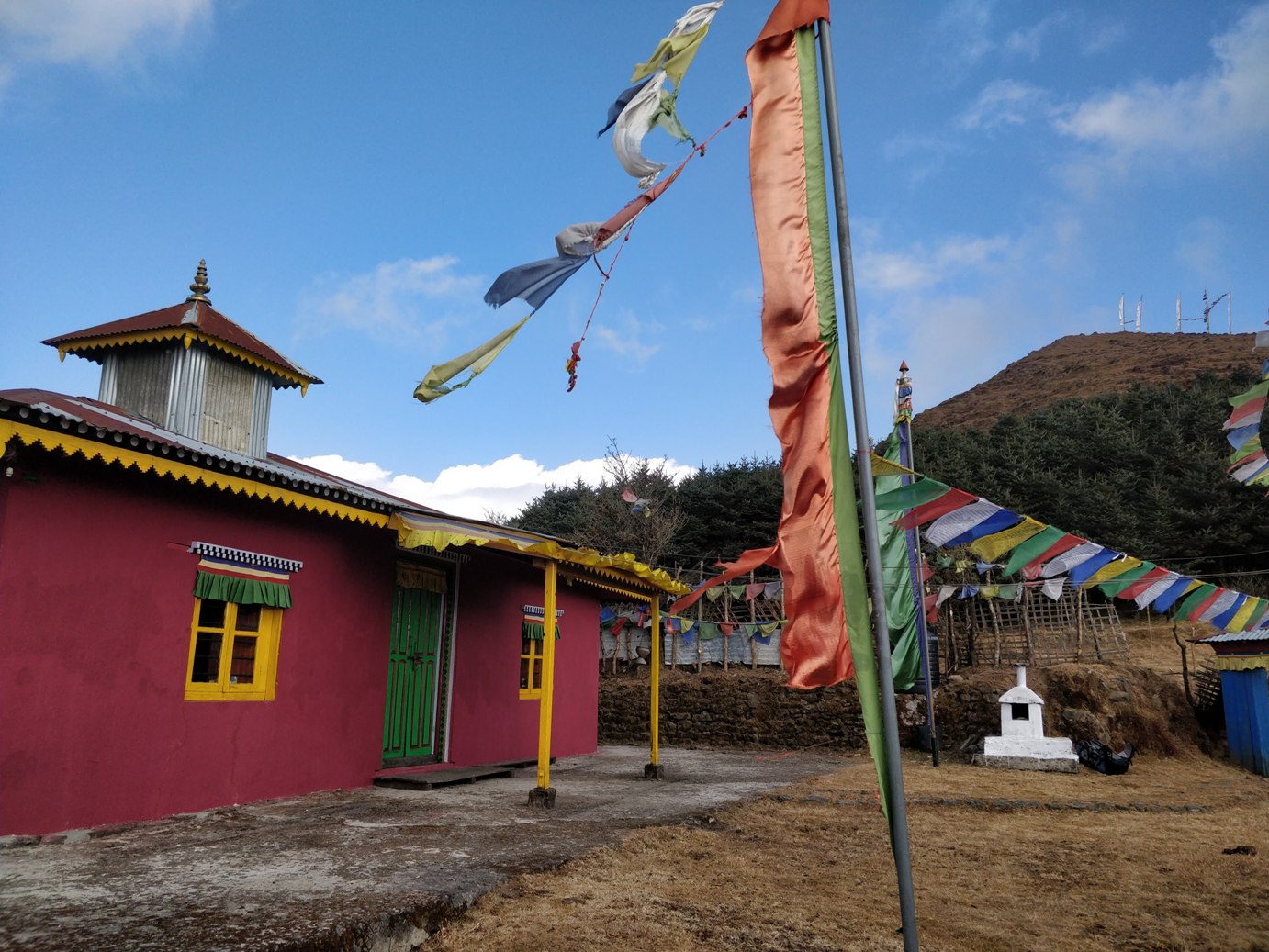
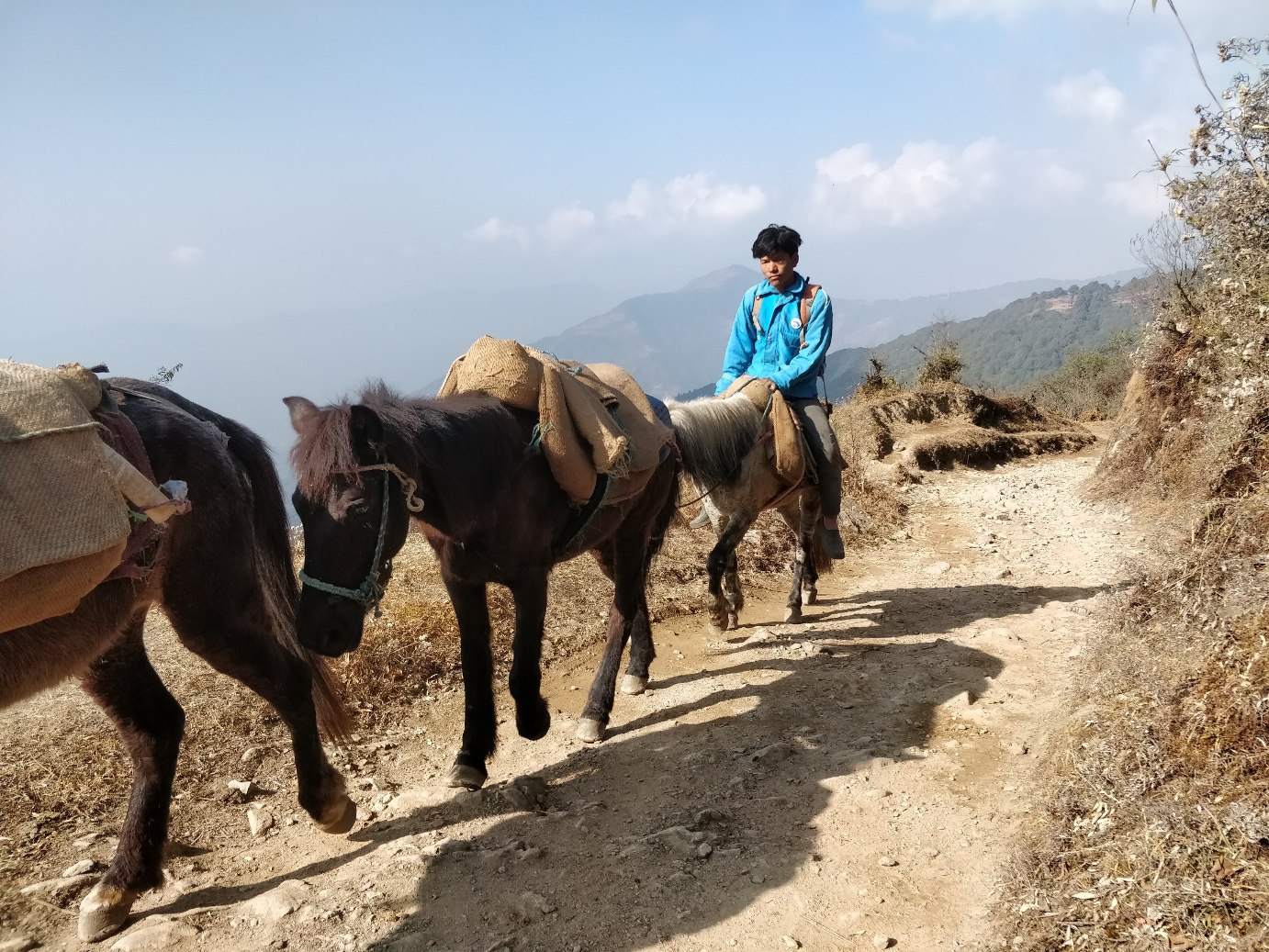
We start a long way down on a wide trail quite pleasant to reach further down to a pass at 2500 meters elevation, we are at Gairibaas.
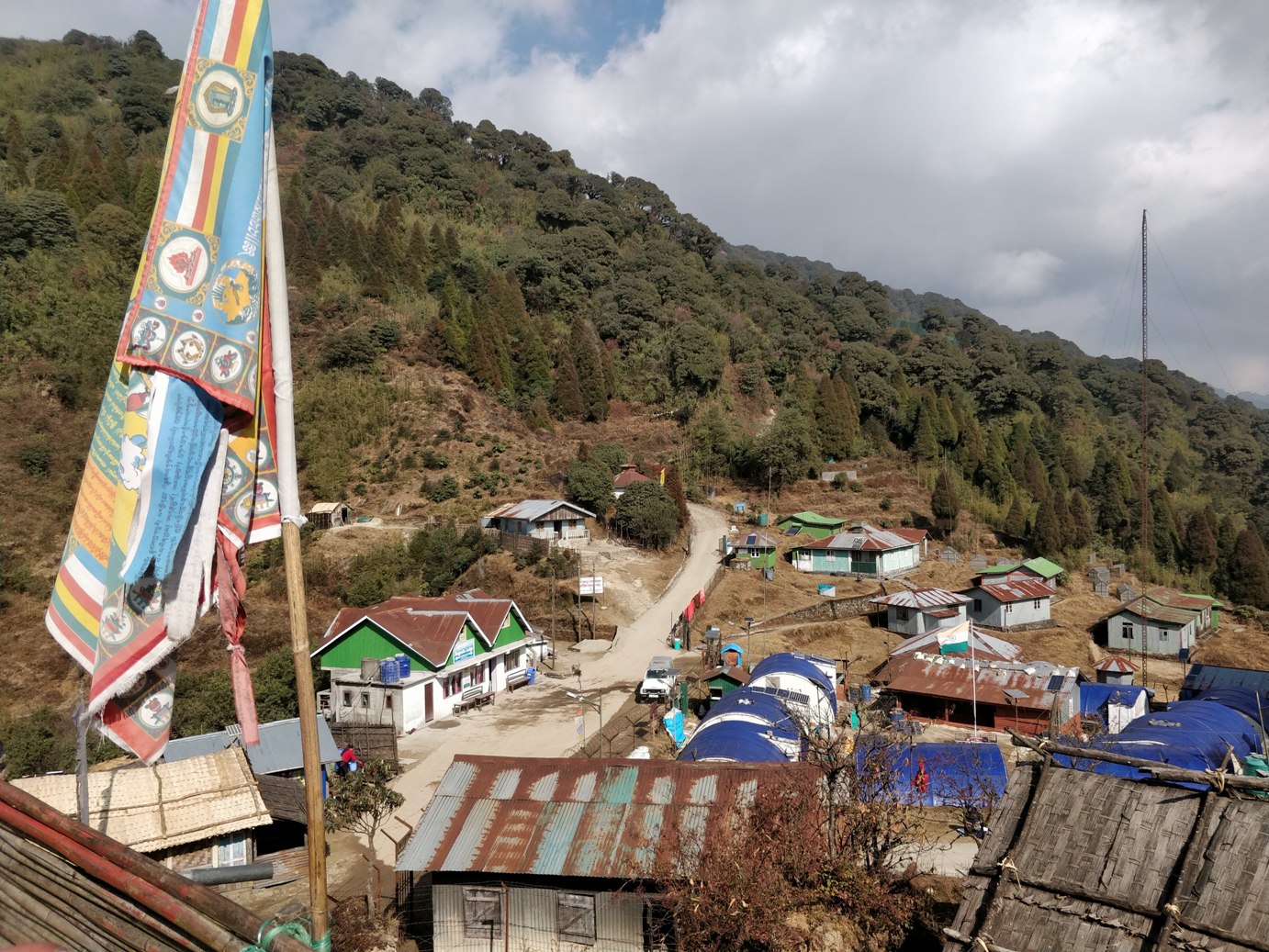
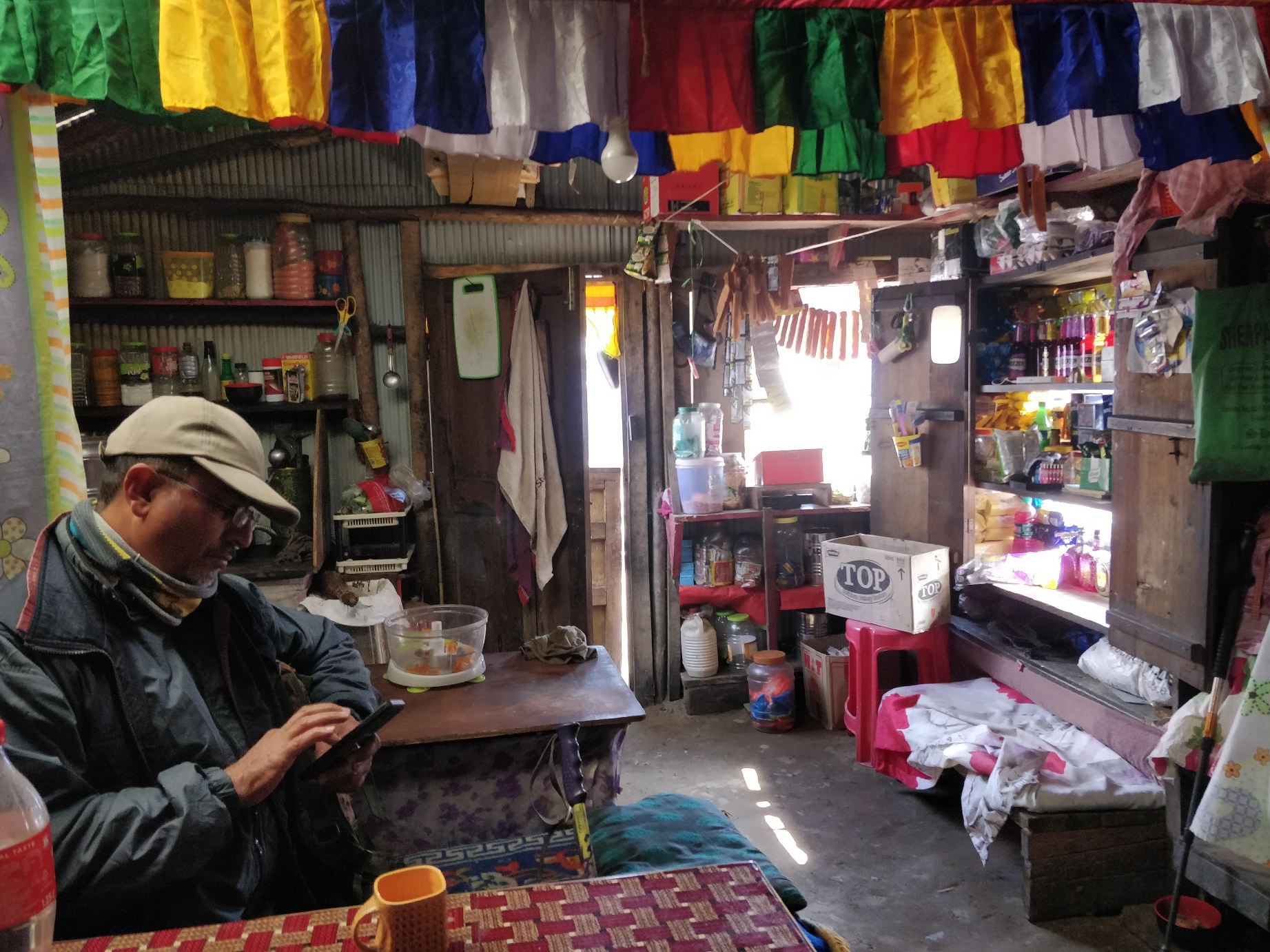
One more time, we find the road making the border in between India on the east and Nepal on the west. After drinking a cup of tea in one the village’s lodges, we plunge into the jungle on an old track which goes steeply down with many turns. This road made of rocks and stones as former the only road to go from a country to the other in this region and vehicles used to drive on it. Today only men and animals take it.
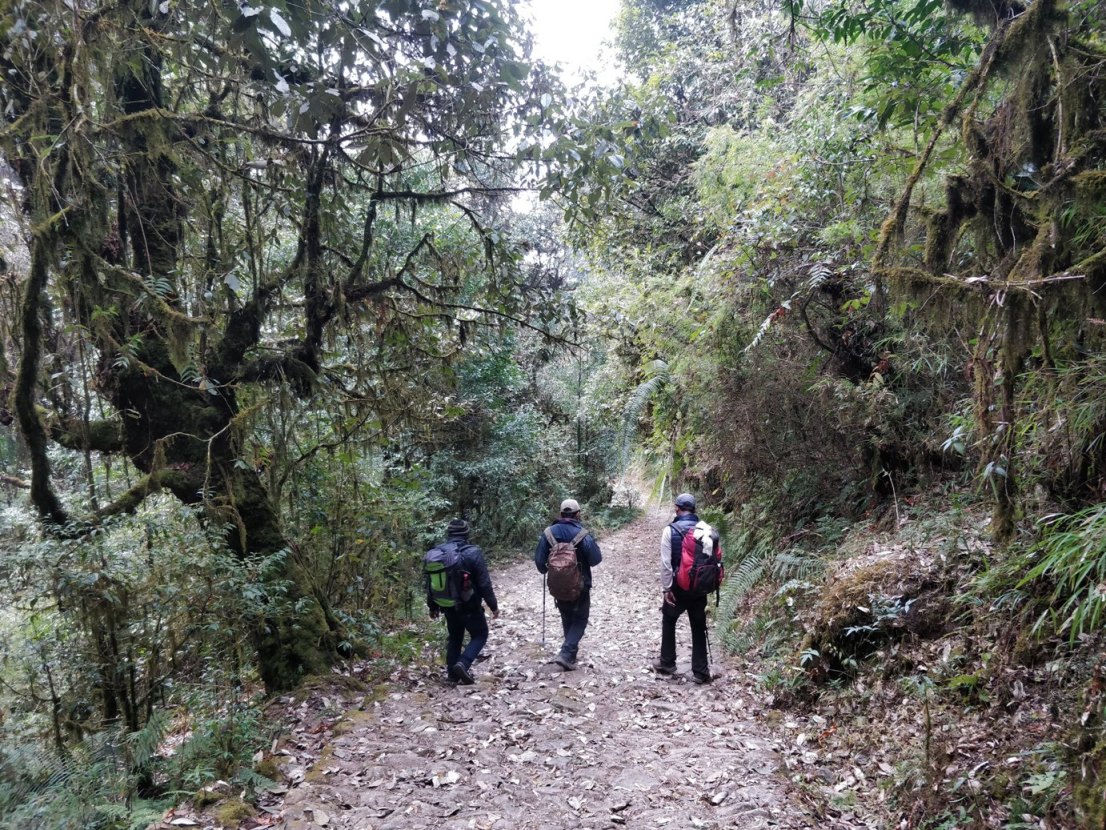
We quickly lose altitude as walking deeper in this thick forest; we only hear the sounds of the birds. After an hour of going down, a small trail escapes from the main road. We follow this way on a path going time to time up and down. Further, we find two pokharis, small ponds. Finally we reach to an open space with plowed fields and houses. We are in Hangetham (2140m). It is lunch time but we do not know where to stop to eat something. After seeing a lady close by a house we ask her if she can cook something or us. She agrees and we step inside her home for the lunch. Such hospitality is unbelievable. Who, in our western countries, would agree to cook for strangers passing by?
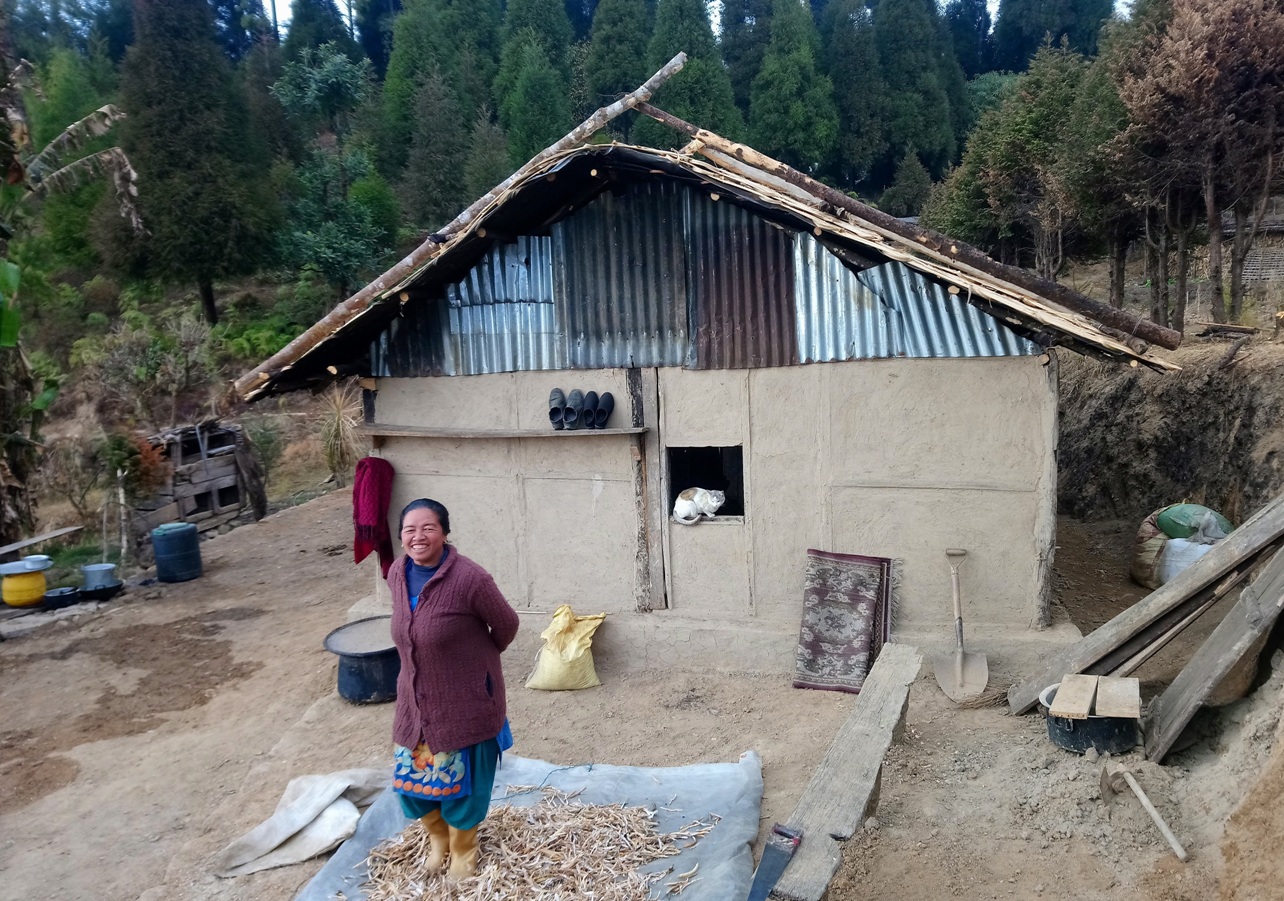
While she is preparing dal bhat, we have a look around. People here only rely on agriculture. Nearby, two men and two oxen are plowing a field. I am taking my notres, the pressure cooker is whistling, lunch is ready. We enjoy a delicious dal bhat which fills us with energy.
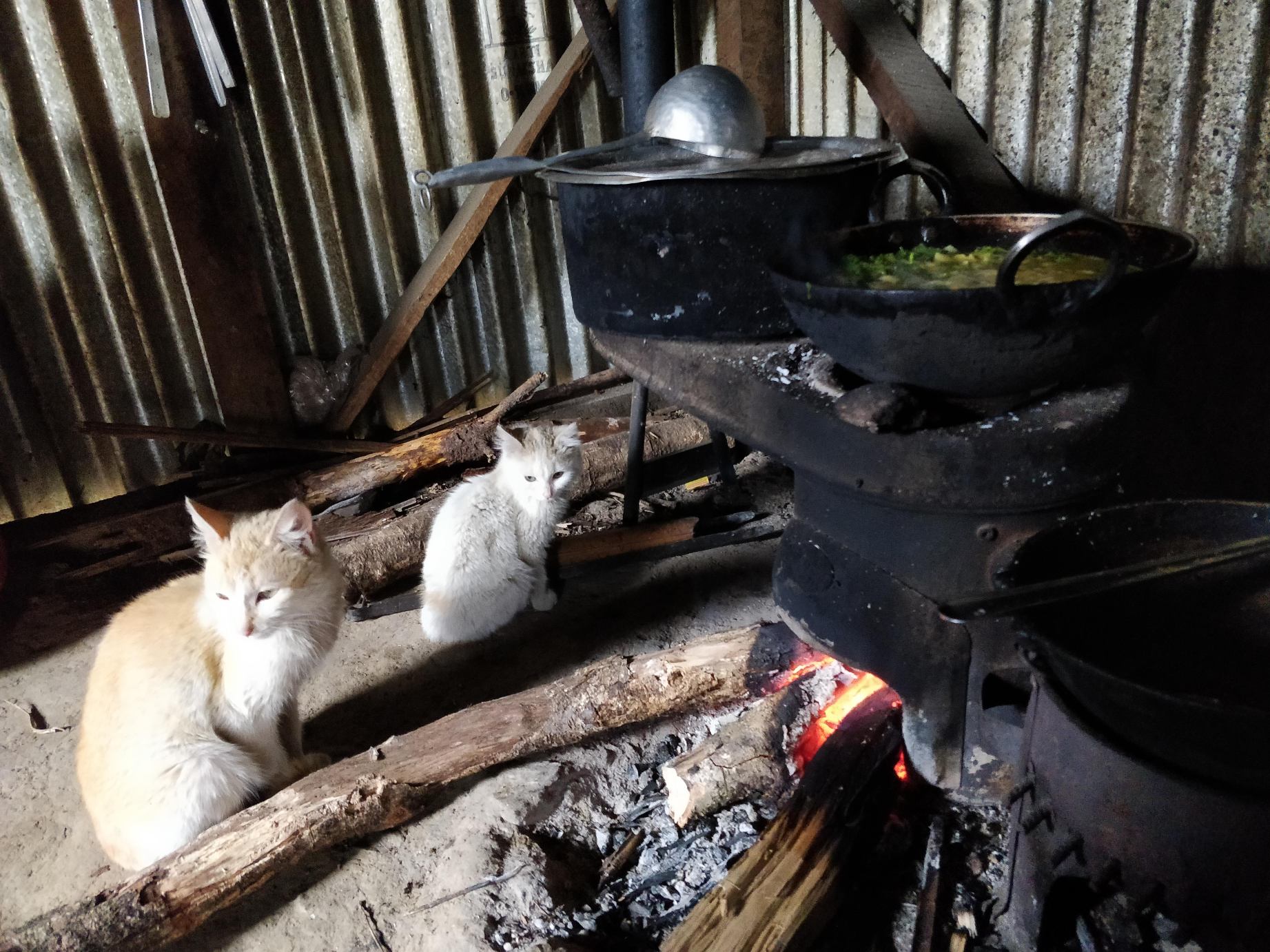
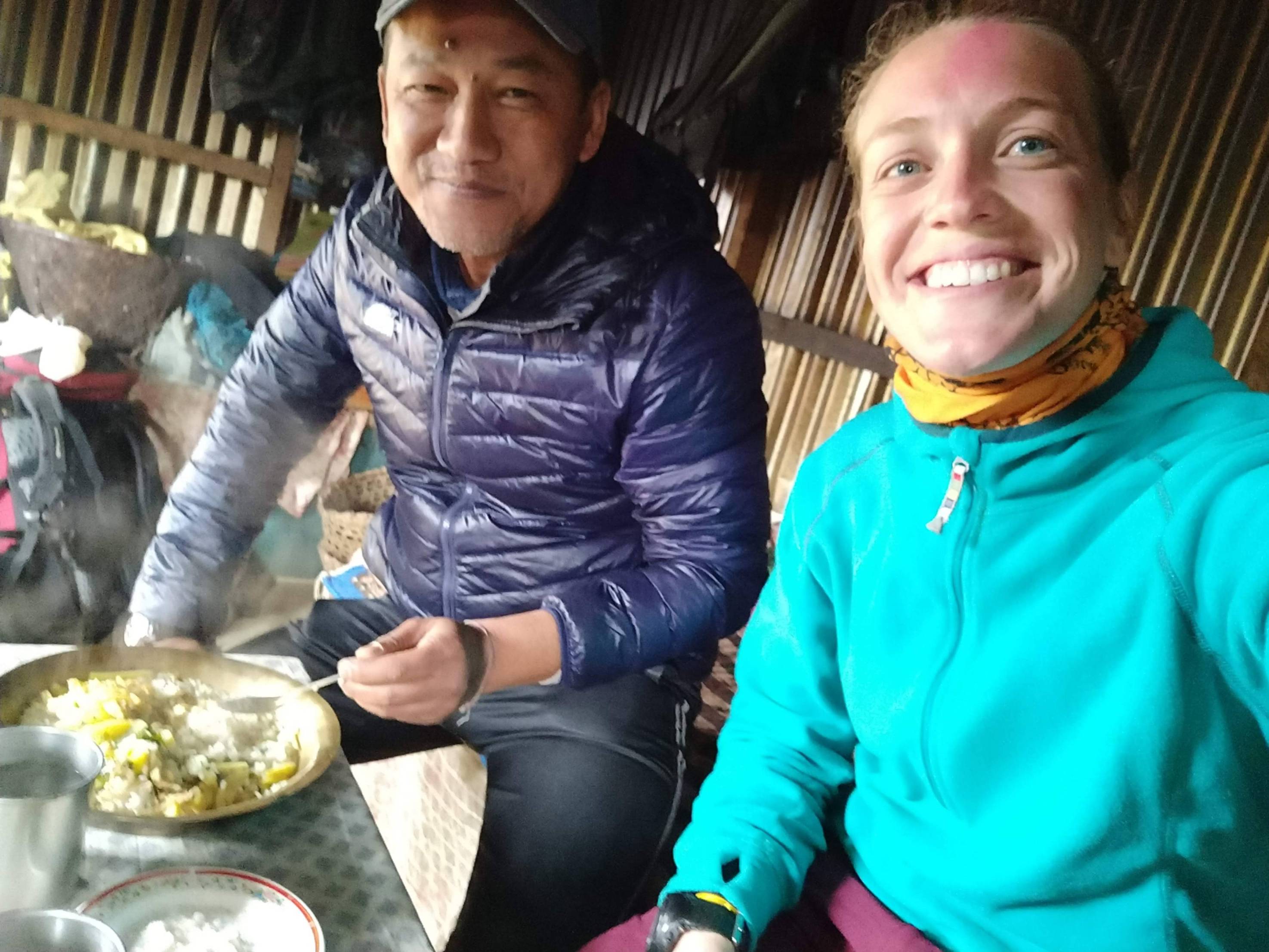
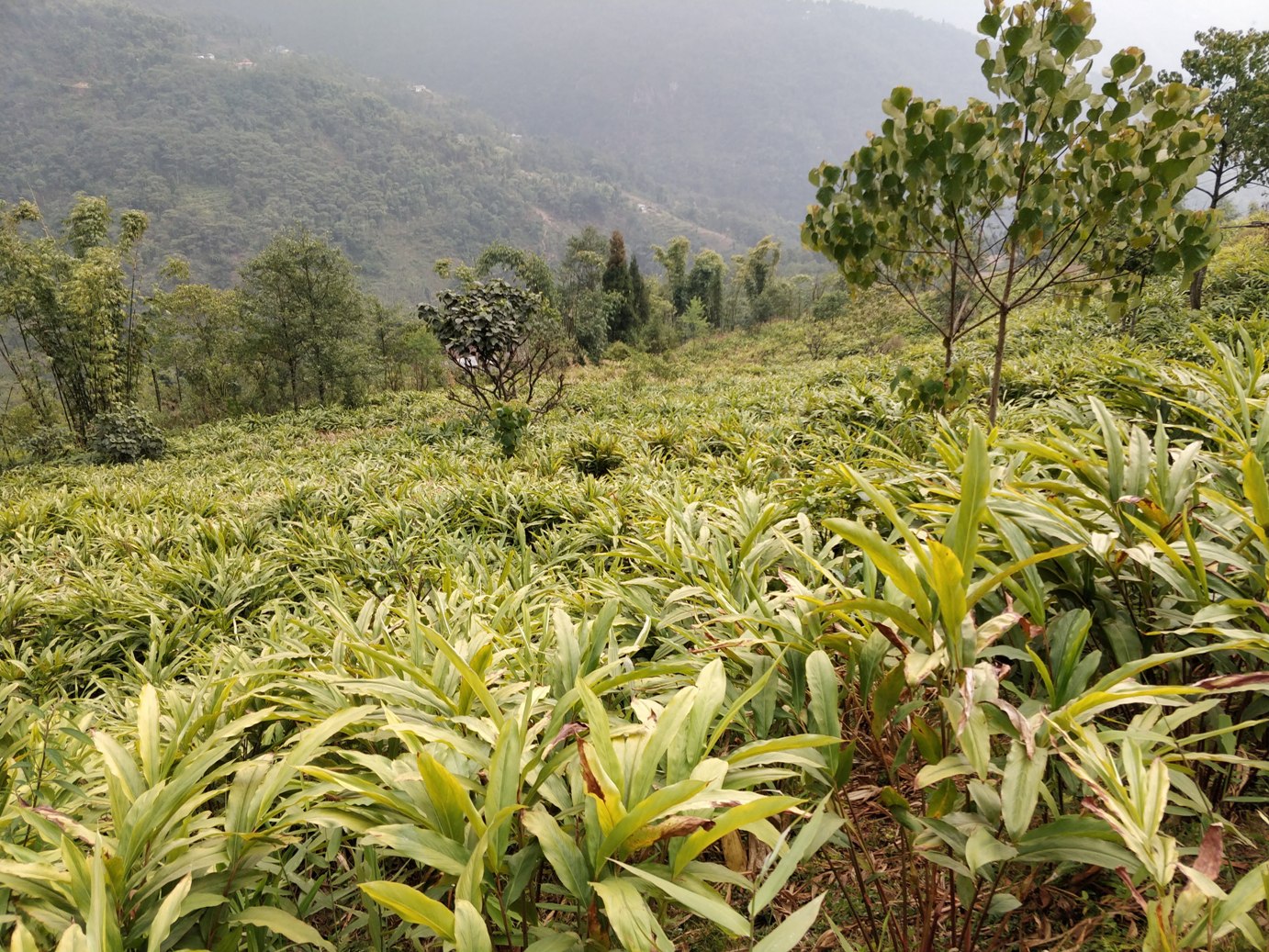
Hundreds times we thank our hosts for their welcome and make our way until the monastery of the village. From here, trail goes steep down to reach to another open space, lower, where is located the village of Jamuna. As going down, houses are more and more numerous. We pass by many cardamom fields and huge bamboos. These strong trees are a dozen of meters high. They are cut and sent to Kathmandu and else to be used as scaffold to build buildings.
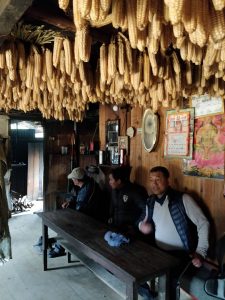
We stop at a house to ask for tea. The young lady invites us inside, hundreds of corn cobs are drying, hanging down the ceiling. Hens enter the house to eat the falling corn beans. While we leave, the lady refuses to get money for the tea. After insisting, she tells us to give what we want. One more time, a kind of hospitality we have lost long time ago in the west.
Finally we reach Jamuna (1720m) and its school located on a big land around which is the rest of the village. The home where we are supposed to spend overnight has not enough rooms for the four of us but our hosts manage anyway so we all get a bed. They also promise dal bhat with chicken for dinner. It has been three days we did not have a piece of meat so we are very happy. Later, we hike further down of Jamuna until a wide pokhari around which are some tea trees. The place is great and peaceful and could become a nice park to visit if it was not so remote. We are the ones enjoying instead!
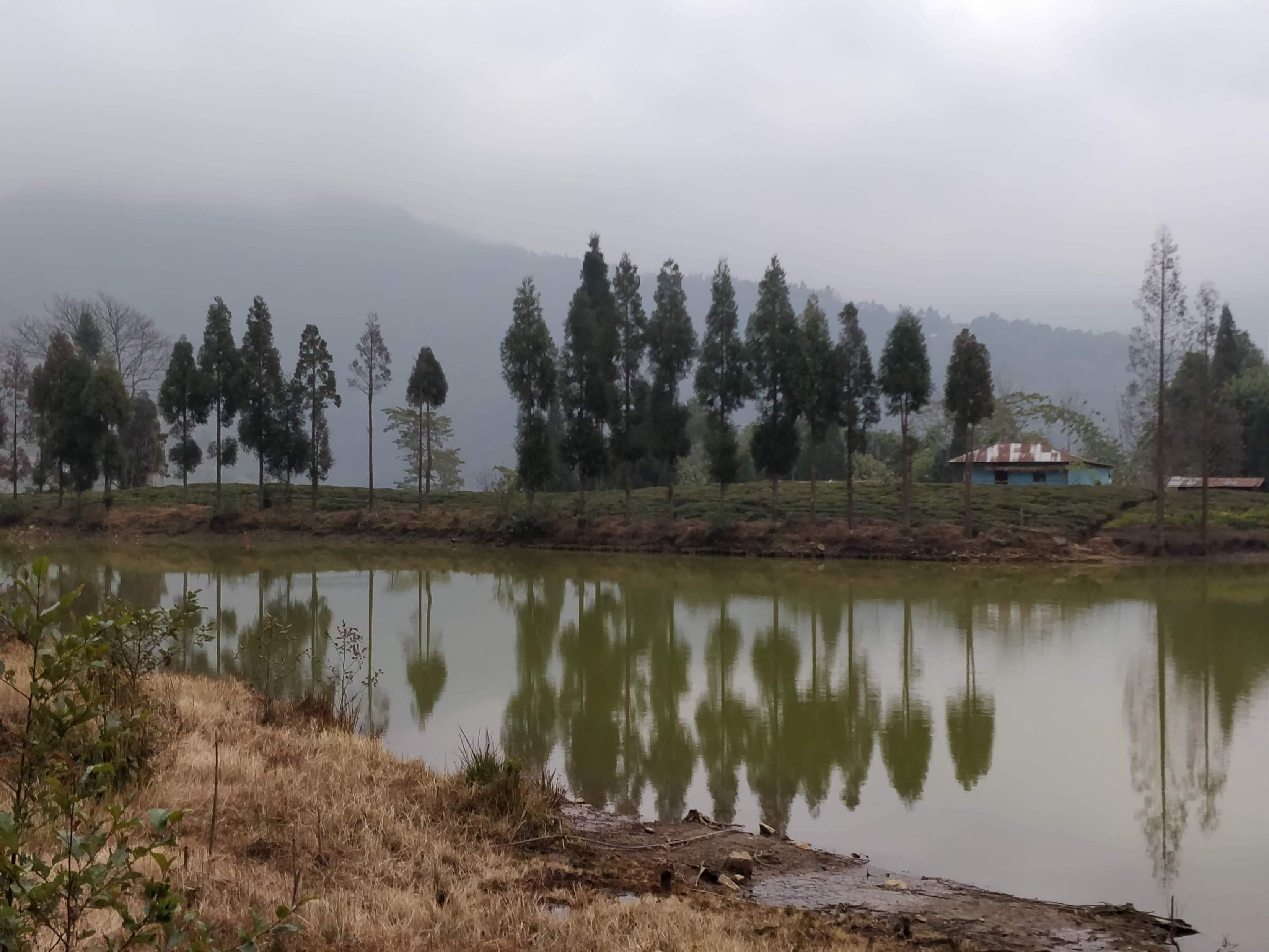
Our trekking stops here, in Jamuna. Tomorrow we will leave the village by jeep and be back at Kedar’s home, in Karfok. The chicken curry which comes along the dal bhat is super tasty, it is a feast and we go to bed fully satisfied.
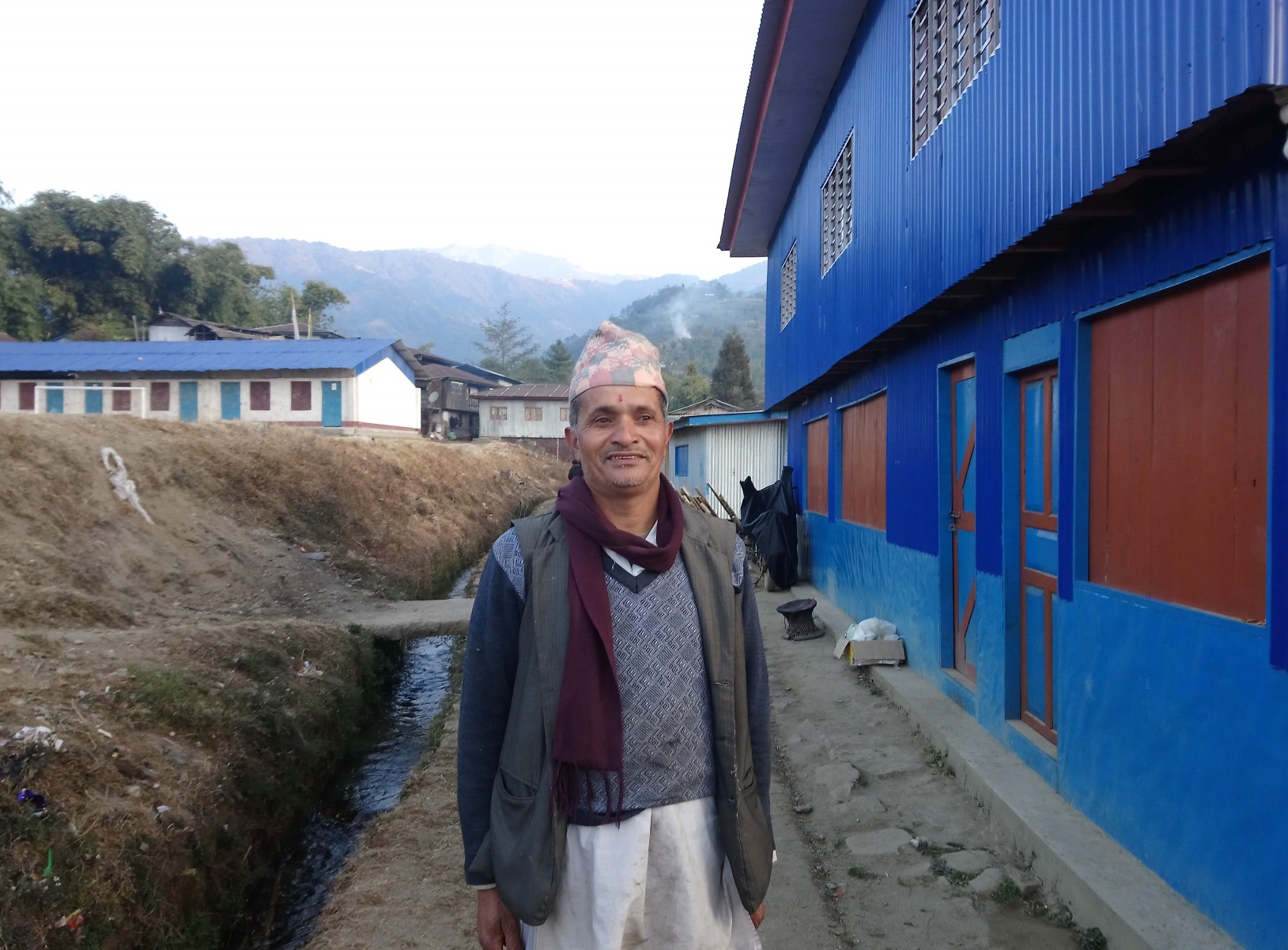
In between Tumling (2850m) and Jhaubari (2750m), we walked 1h15 to cover the 4.5 kilometers between the two villages, we hike up 65m and down 160m. Then, from Jhaubari to Hangetham (2140m) where we had lunch, we hiked 3h30, going up was 140m and going down was 740. Finally, after lunch, it took us 1h30 to reach to Jamuna (1720m), hiking 20m up and 430m down.
Day 5 – 12 january 2019 – Jamuna > Mai Pokhari > Ilam Bazaar > Karfok
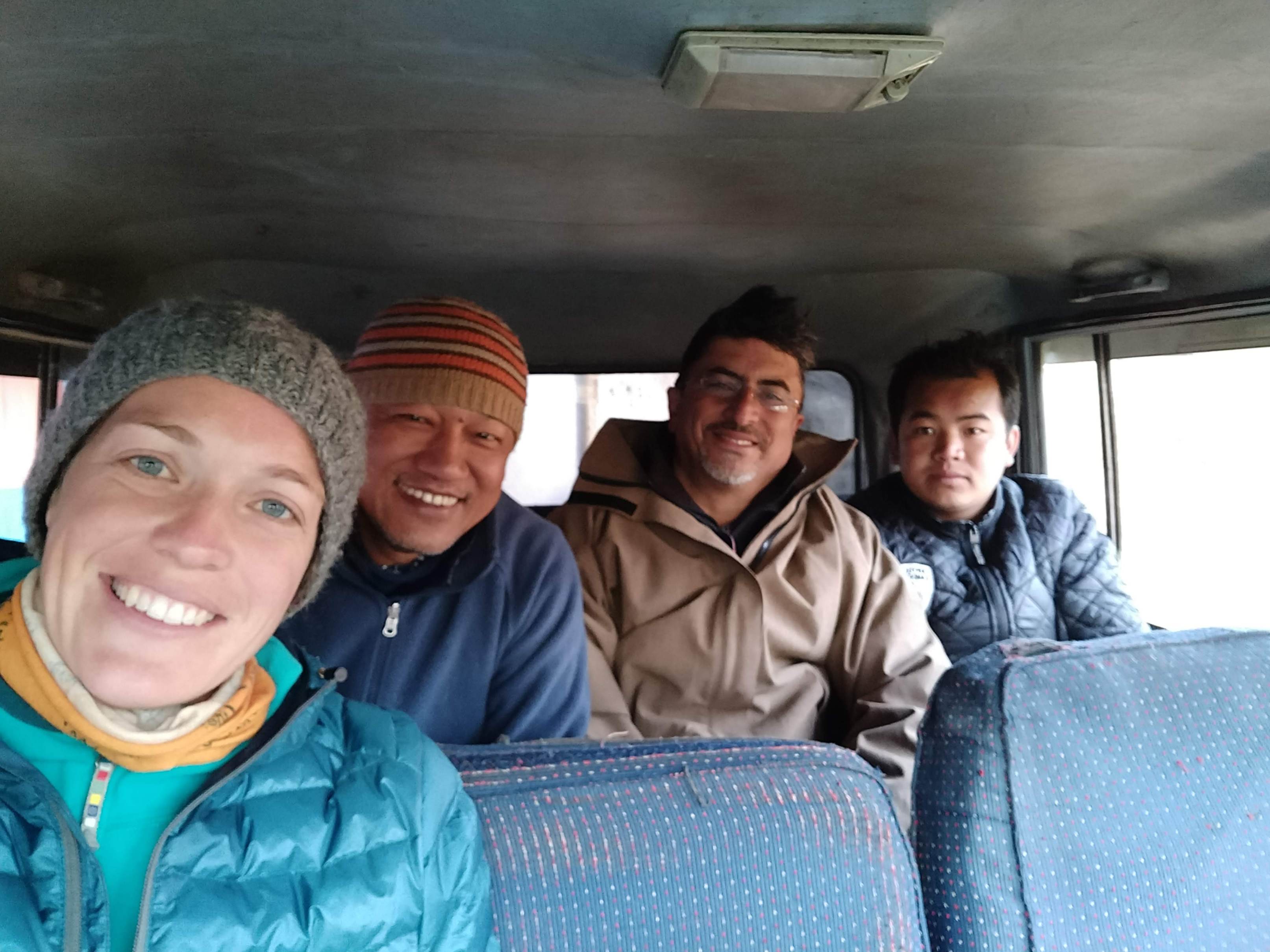
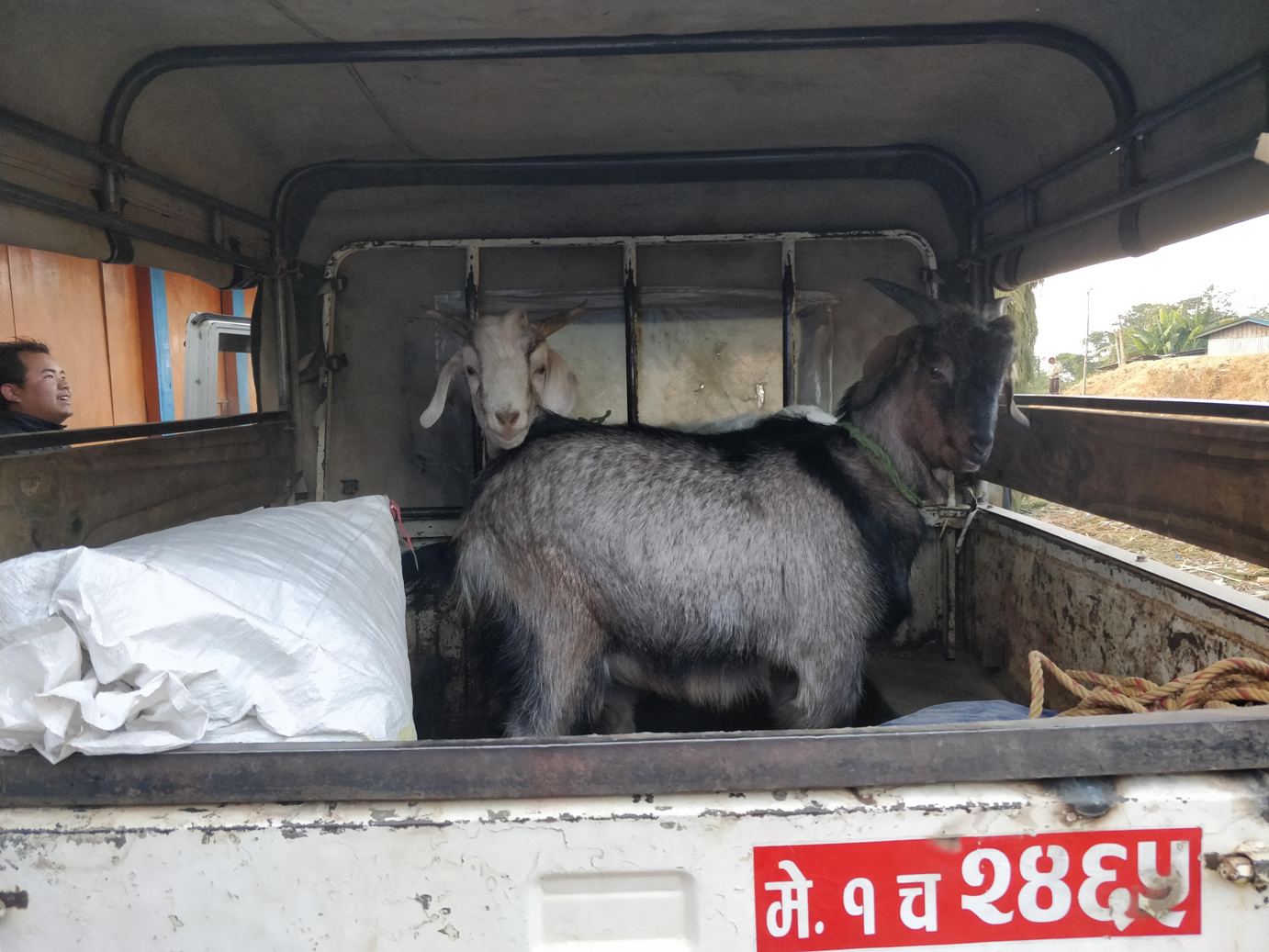
Our jeep leaves Jamuna at seven o’clock this morning, just the time to have a cup of tea and to put two goats at the back that the driver is going to sell in Birtamod. The track on which we ride is damaged and we go very slowly. In the first time, we go down a valley to cross a river before going up on the next hill.
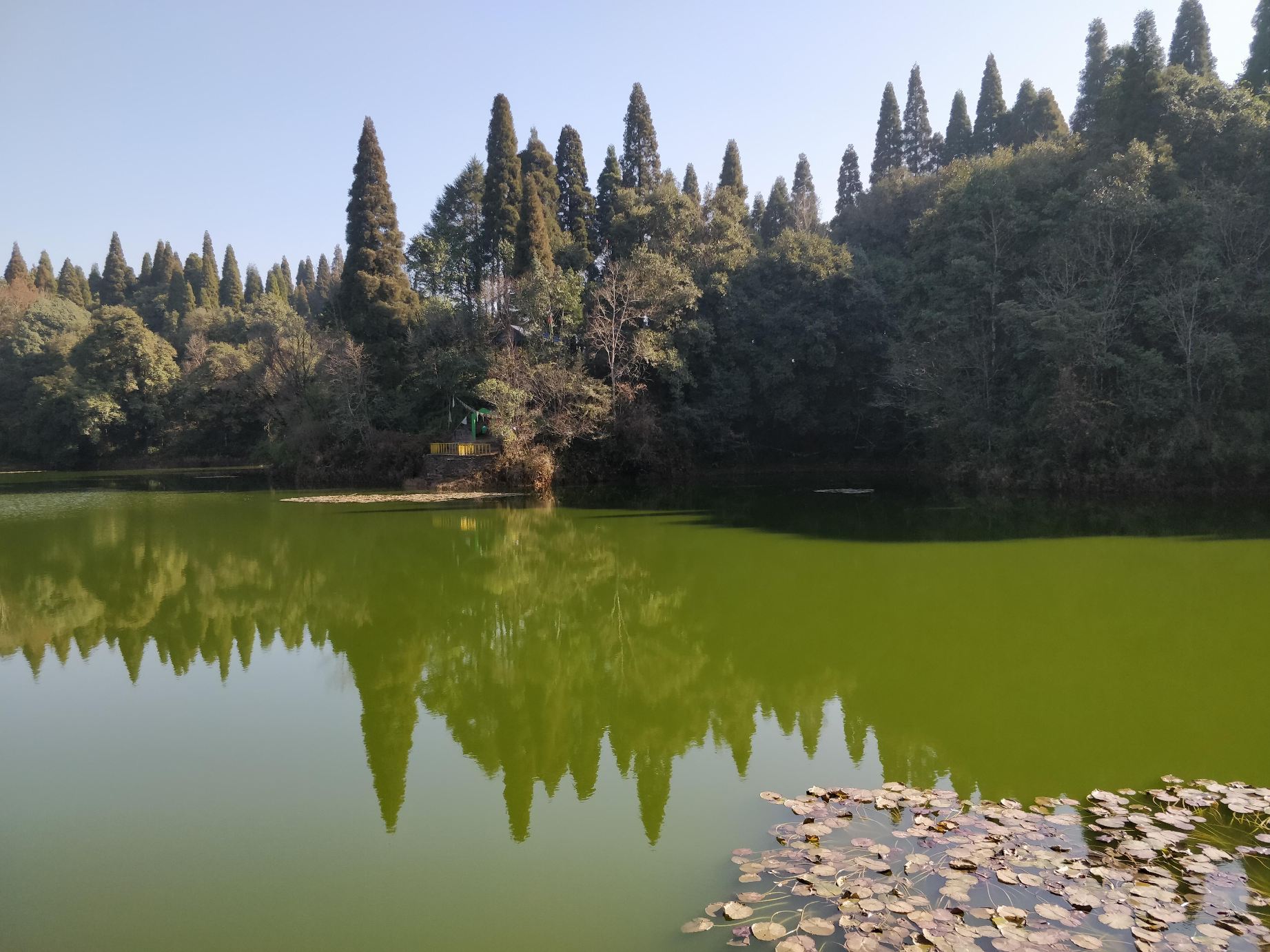
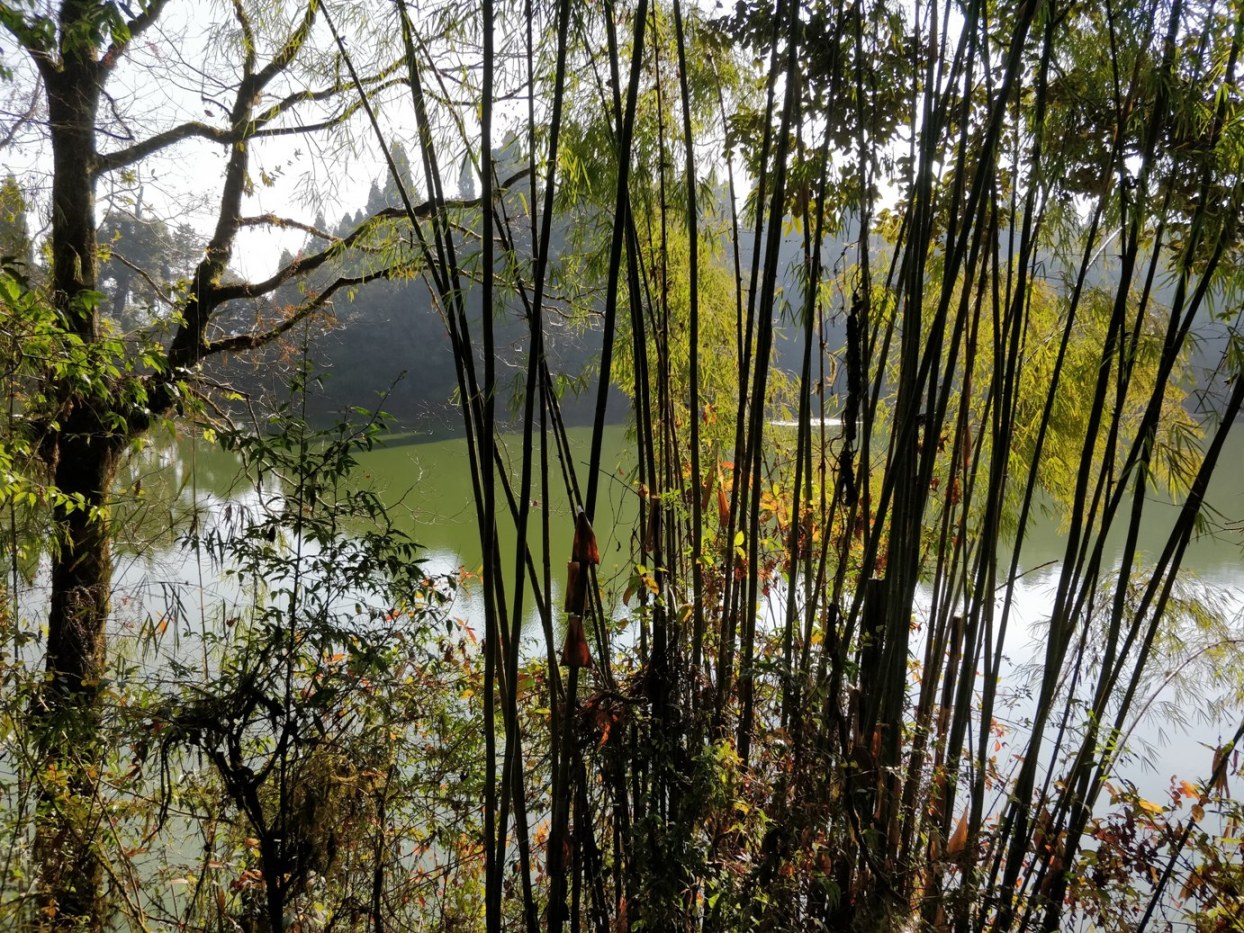
After two hours driving and eighteen kilometers away, we arrive in Mai Pokhari (2050m), one of the places to visit in Ilam district. Mai Pokhari means “the mother pond”, it is holy and forbidden to fish here. Rounding the lake is less than one kilometer and it is very nice to walk there under the trees’ shade (pines, rhododendrons, bamboos…) in a calm and quiet environment. Some endemic animals are living here such as some species of salamanders and frogs, otters, hornbills and many other kinds of birds. The place is very pleasant, clean and suitable for photos.
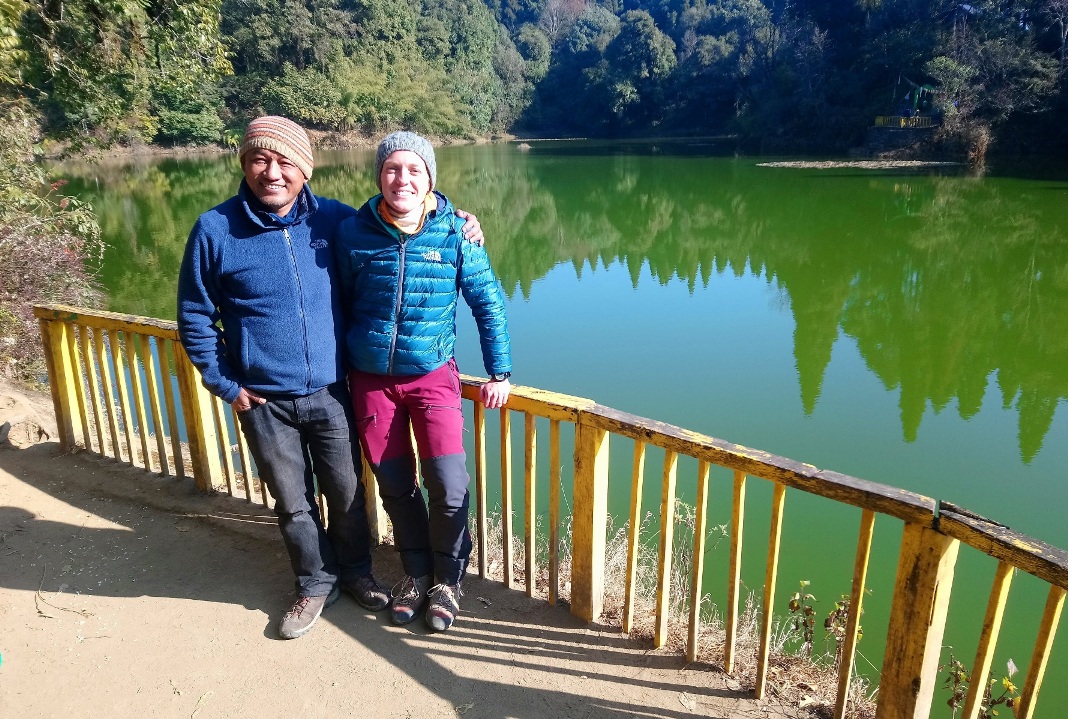
We get back to the jeep to drive down until Ilam Bazaar (1130m) that we reach after one hour ride. The city is set at the top of a hill: on one side there are the houses, on the other side the tea plantations which are said to be the very first of the region and the country. We find a house architecture quite different, with round facades and wooden balconies, and very nice. Today is Saturday and most of the shops are closes, it is a pity.
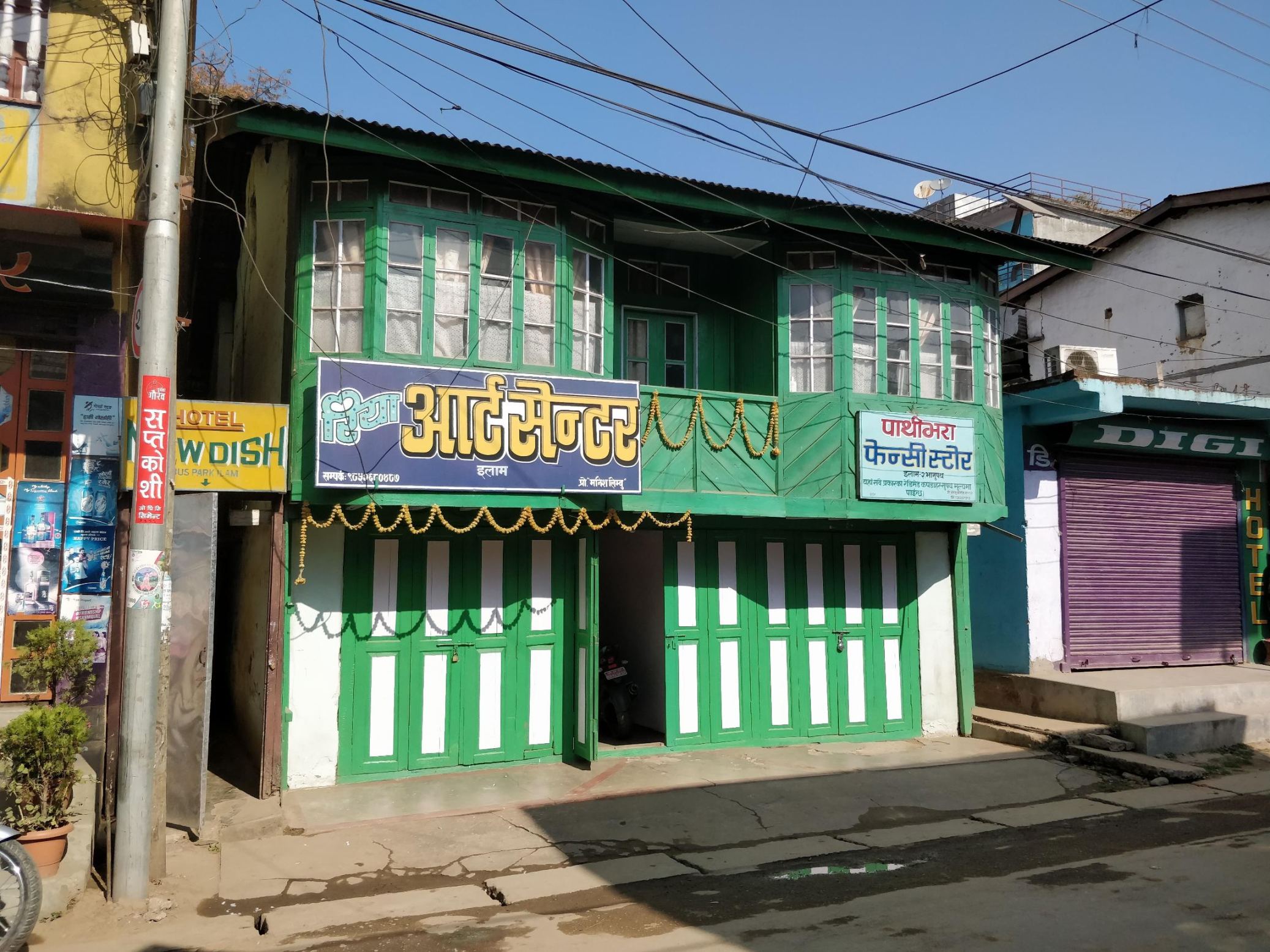
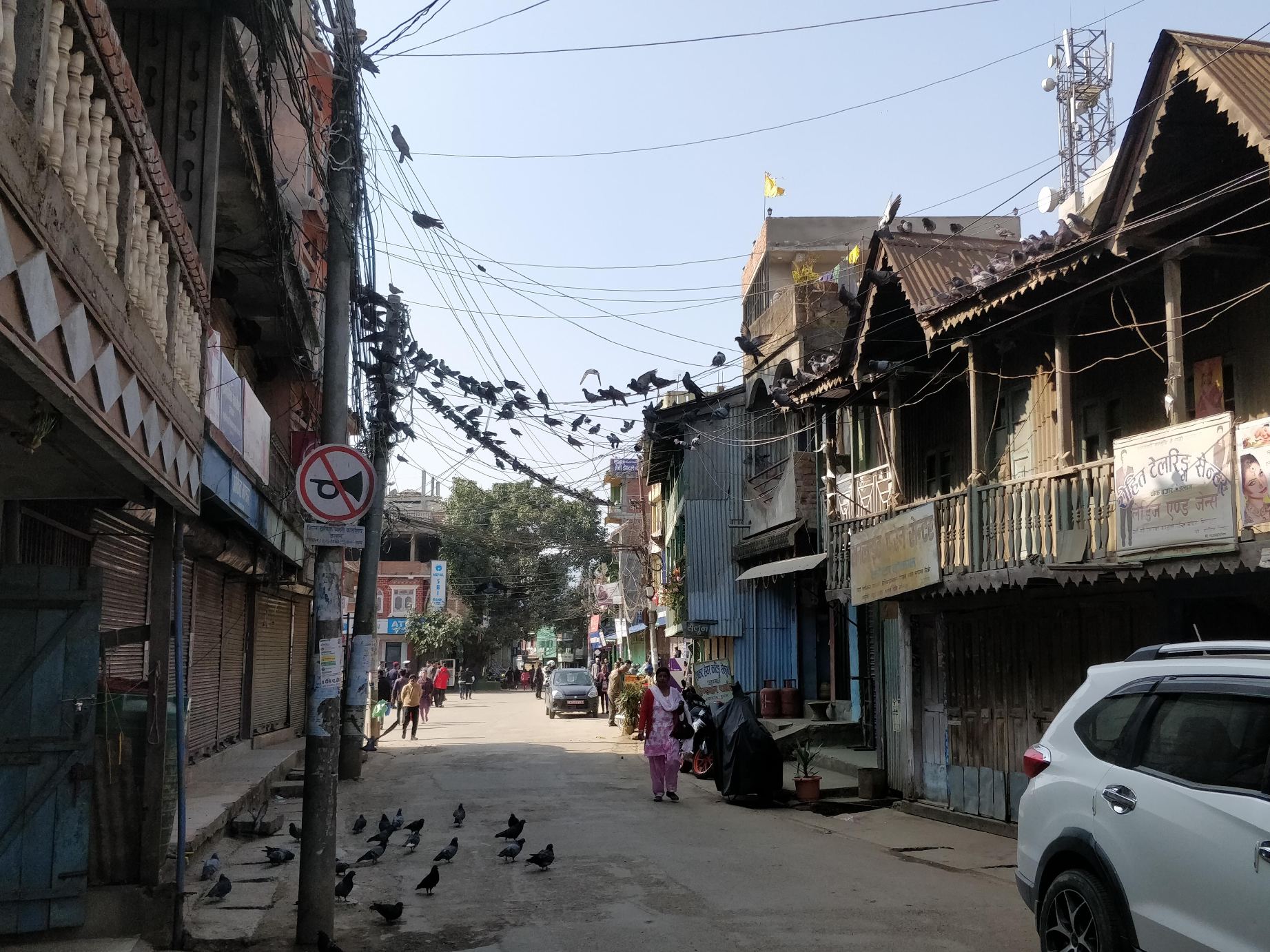
After having lunch, we go to discover the town starting by the lower part and a large field where many schools have gathered to take part in an athletic competition.
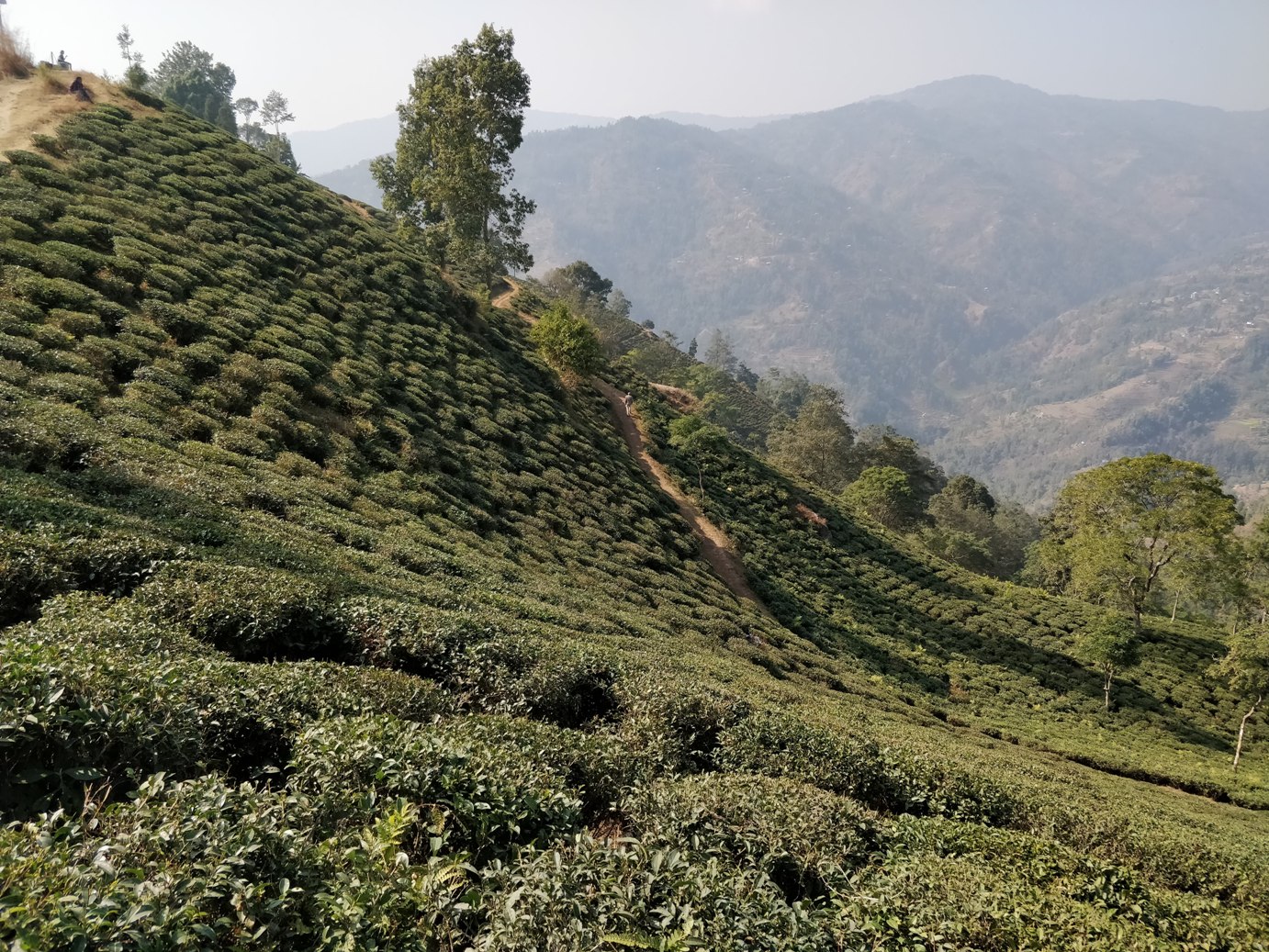
Then we hike up through Ilam’s tea garden, the walk is quite pleasant.
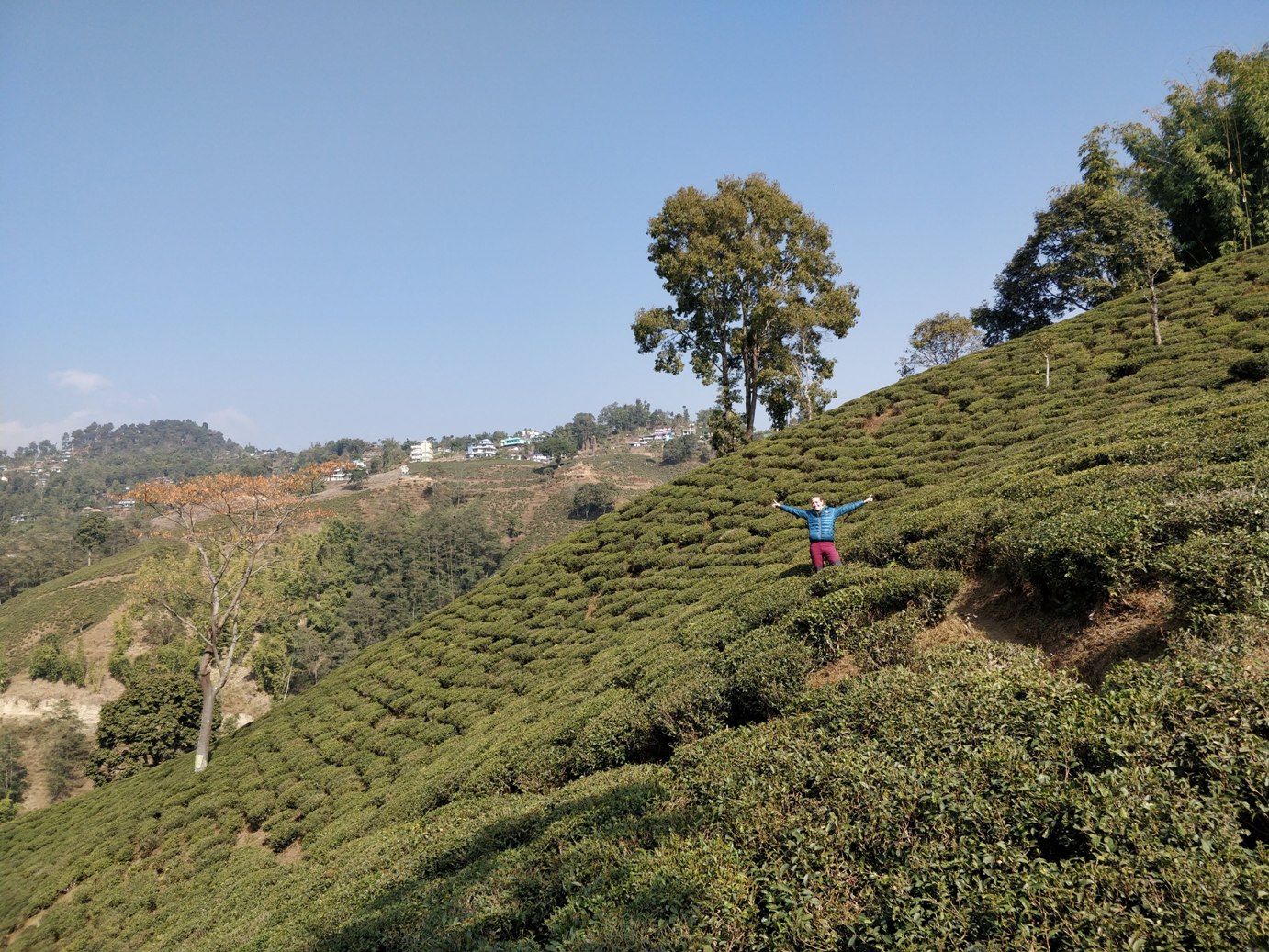
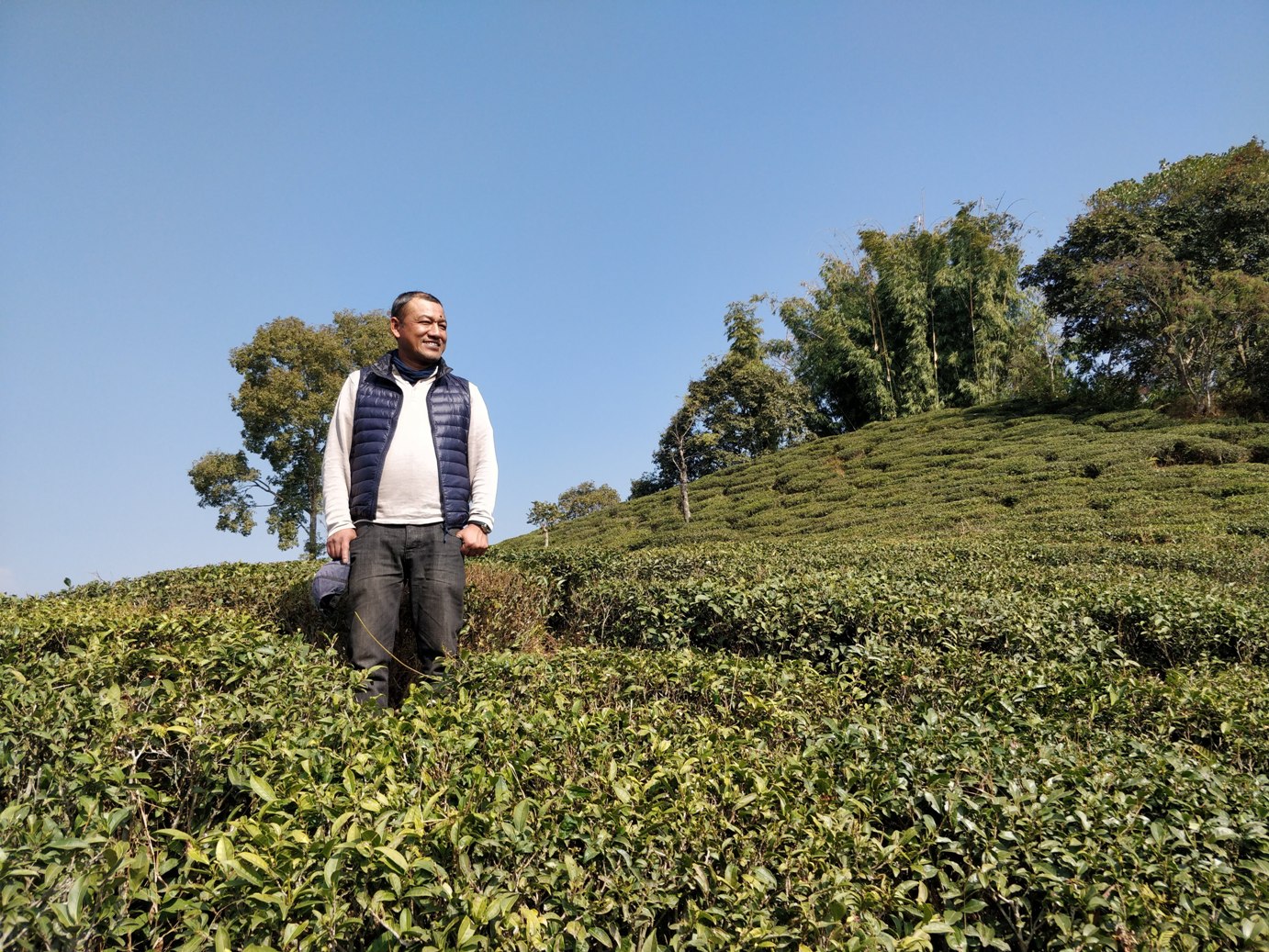
Later in the afternoon, we drive back to Karfok, around two hours away from Ilam Bazaar. The road is beautiful and winding, time passes by quickly. It is a pleasure to be back in Karfok.
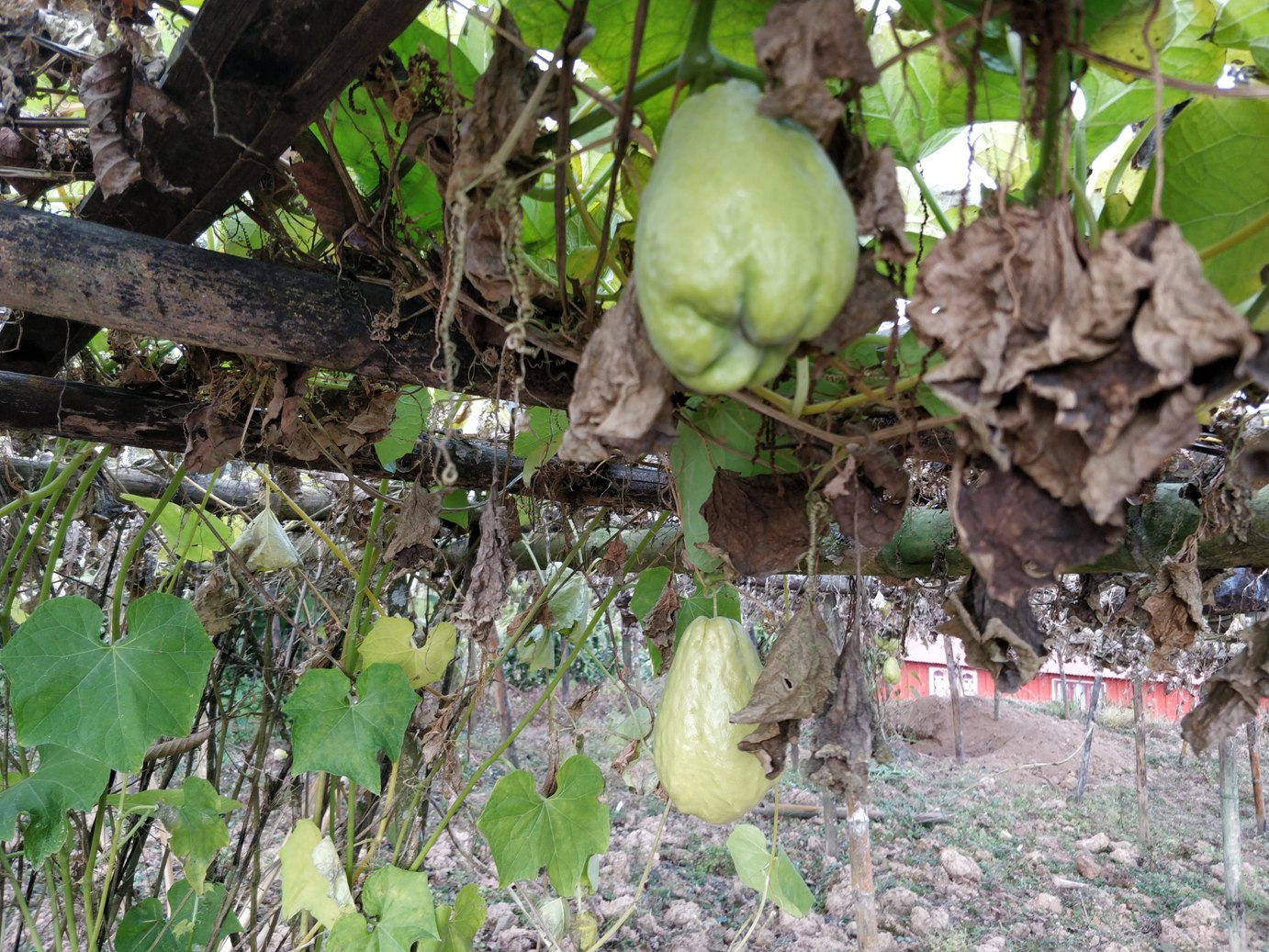
We meet with Kiran who is preparing her food specialty for dinner: paneer and pumpkin curry along with brown rice, tea smoked chicken and dal with sinki (fermented raddish). A feast of course for our last dinner in Ilam.
Day 6 – 13 january 2019 – Karfok > Antu Danda > Terai
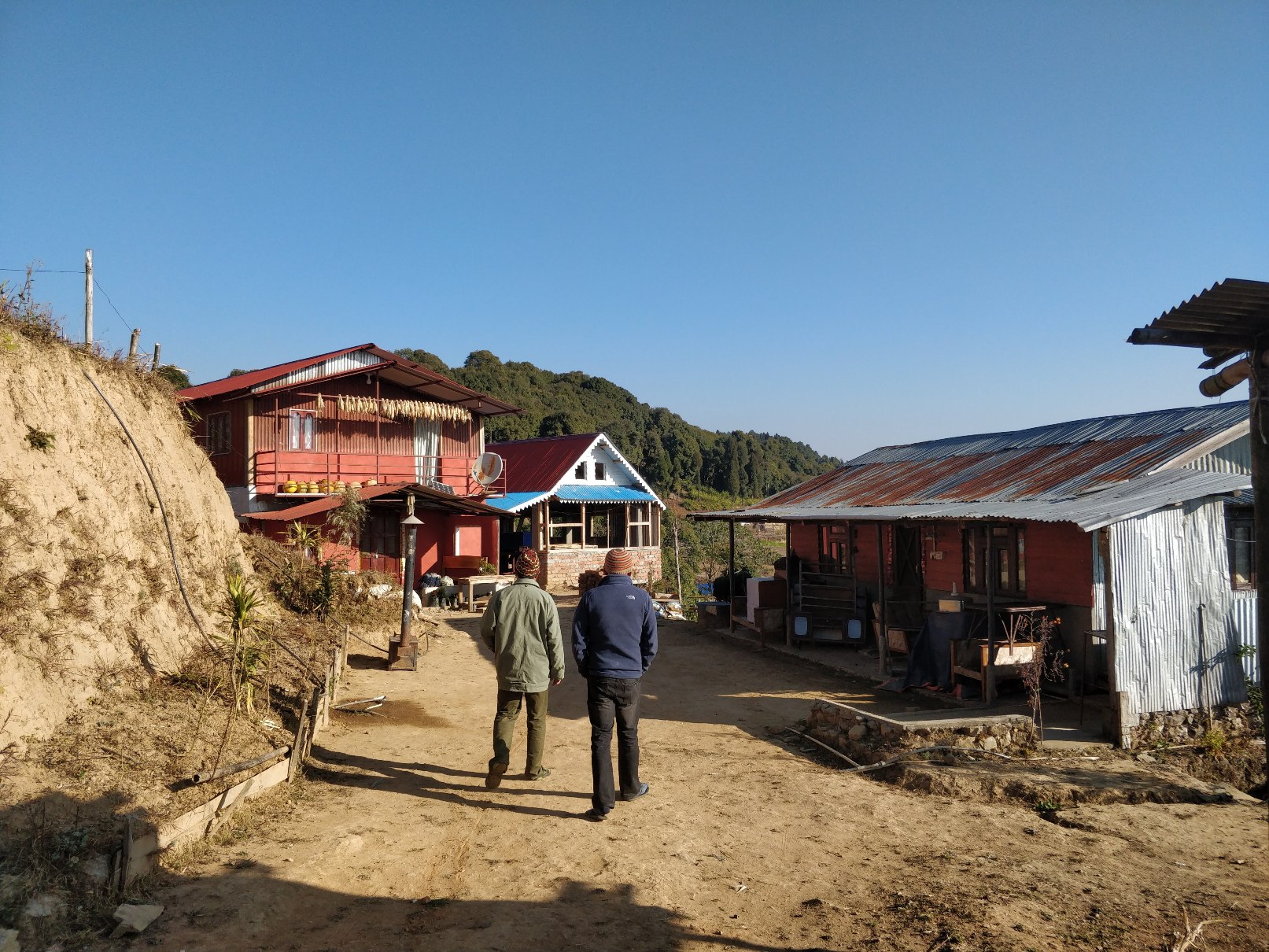
Today we are leaving our hosts. We are very optimistic regarding the touristic potential of the region and we are exchanging ideas with Kiran and Kedar. Nepalayak’s program (https://nepalayak.com/project/a-l-est-du-nepal/) to discover Ilam’s region will necessarily include a stop in Karfok.
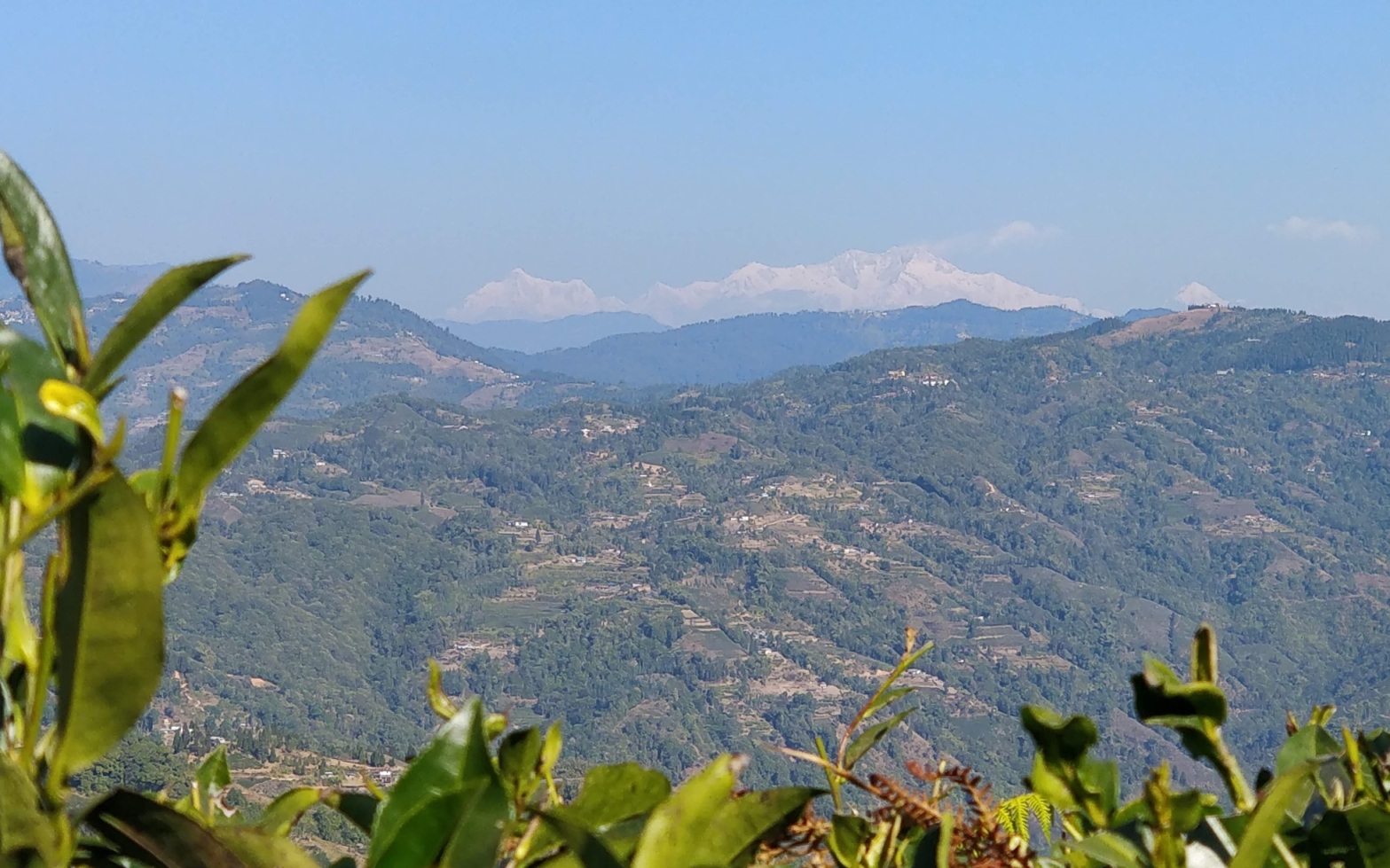
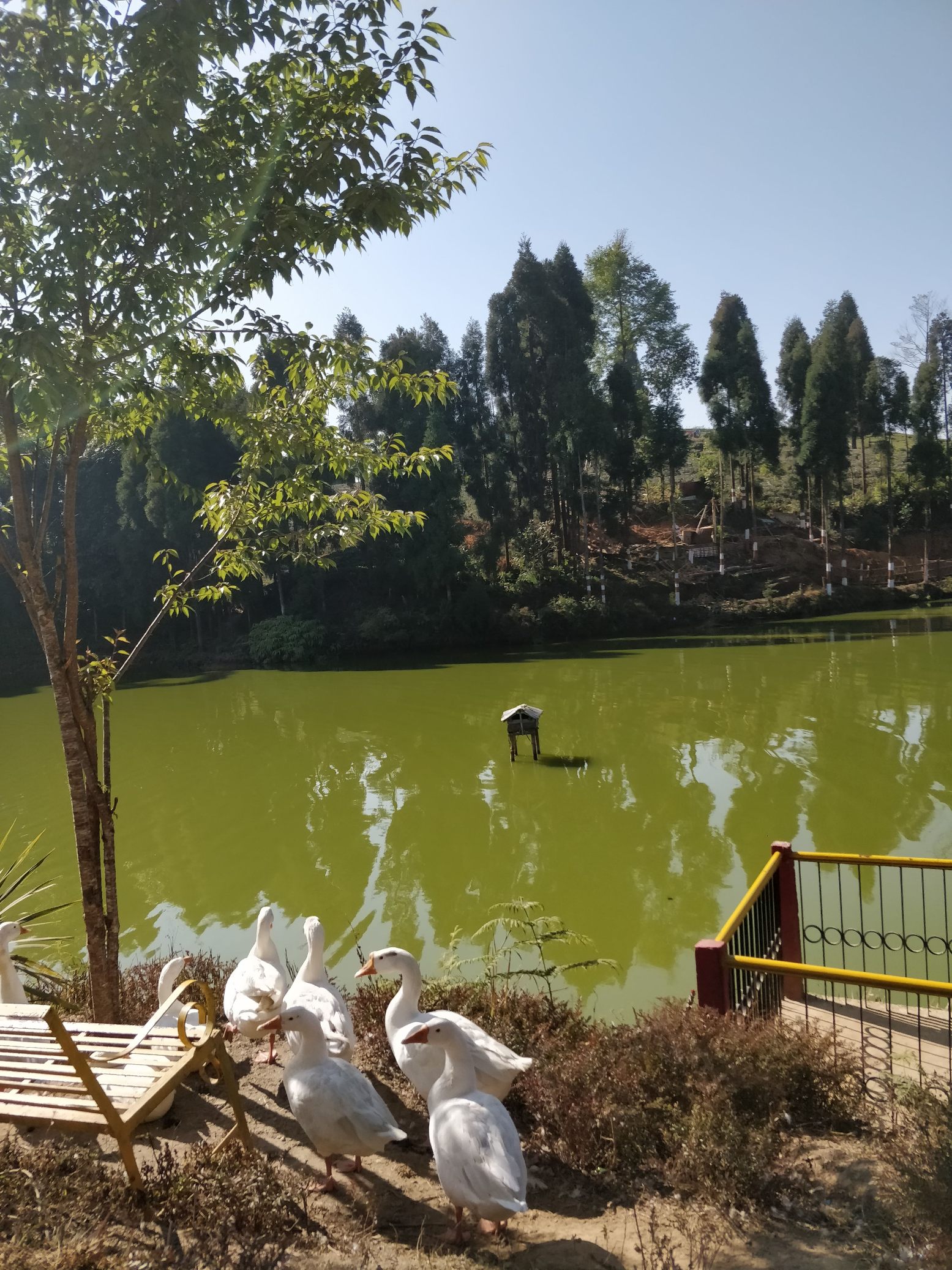
Before driving back to Birtamod, we have a detour through Antu Danda, the highest point (2320m) of Ilam district which offers great sunsets and sunrises. The taxi drops us down the hill and we have to continue walking. The view tower of Shree Antu is two kilometers away but we do not go until there. After passing by some houses and tea gardens, the view is unobstructed and we stop here to click photos. The mount Kanchenjunga and its 8586 meters appear in the background in its most original shape: the sleeping Buddha, the head in the west, then the belly, and finally the foot in the east. Its name comes from the Tibetan Kang-chen-dzo-nga which means “the five treasures of the great snow” referring to the five peaks which belong to the summit. It is the third highest mountain in the world. Then, we move and have a look to Antu Pokhari, a small pond as peaceful as the other pokharis that we saw these days, surrounded by pine trees and tea trees.
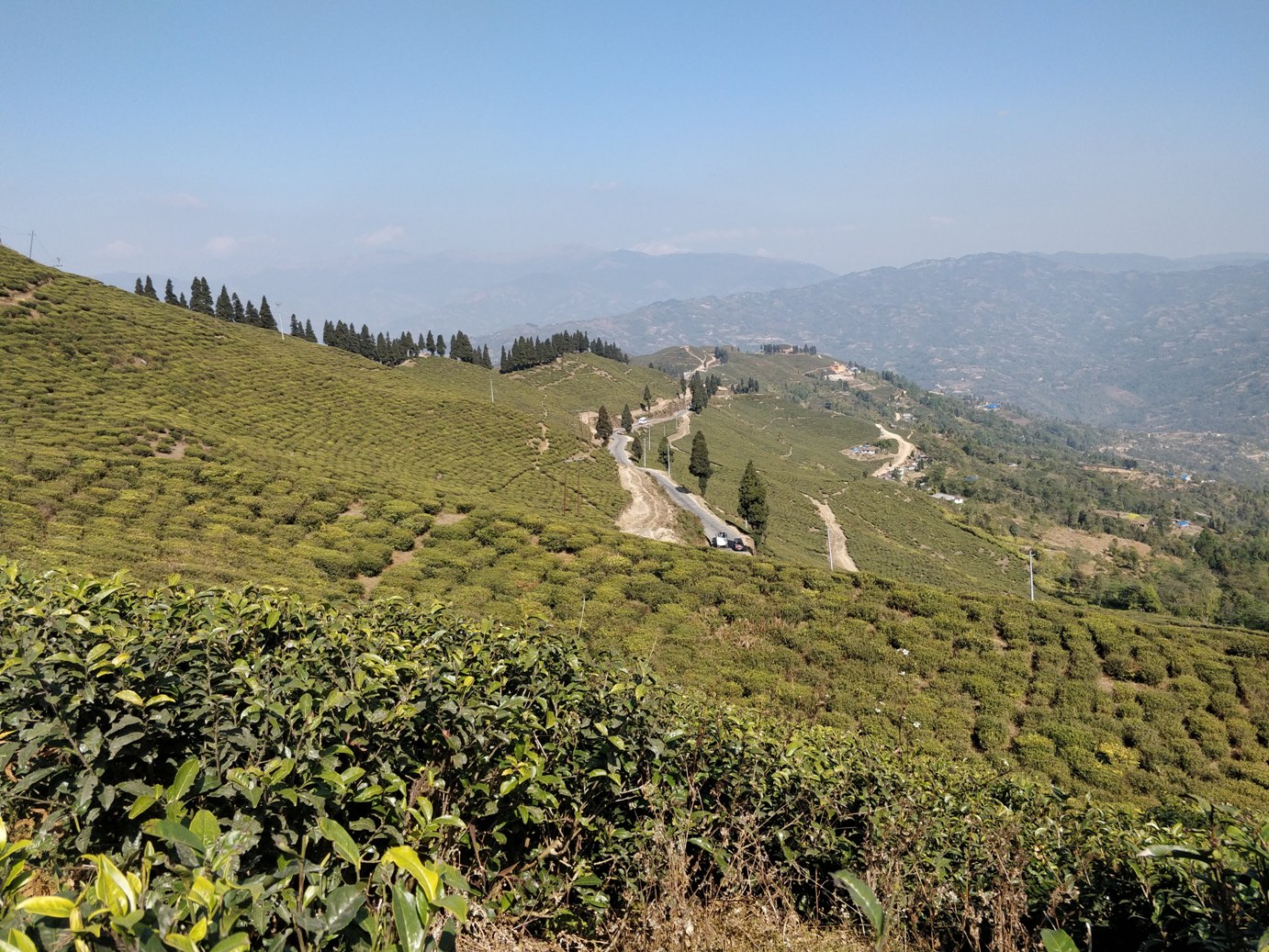
Finally, we get back to our taxi and hit the road again. Last stop in Kanyam where we walk until the floating pines above the tea gardens, last round in paradise before going back to the south plains of Nepal.
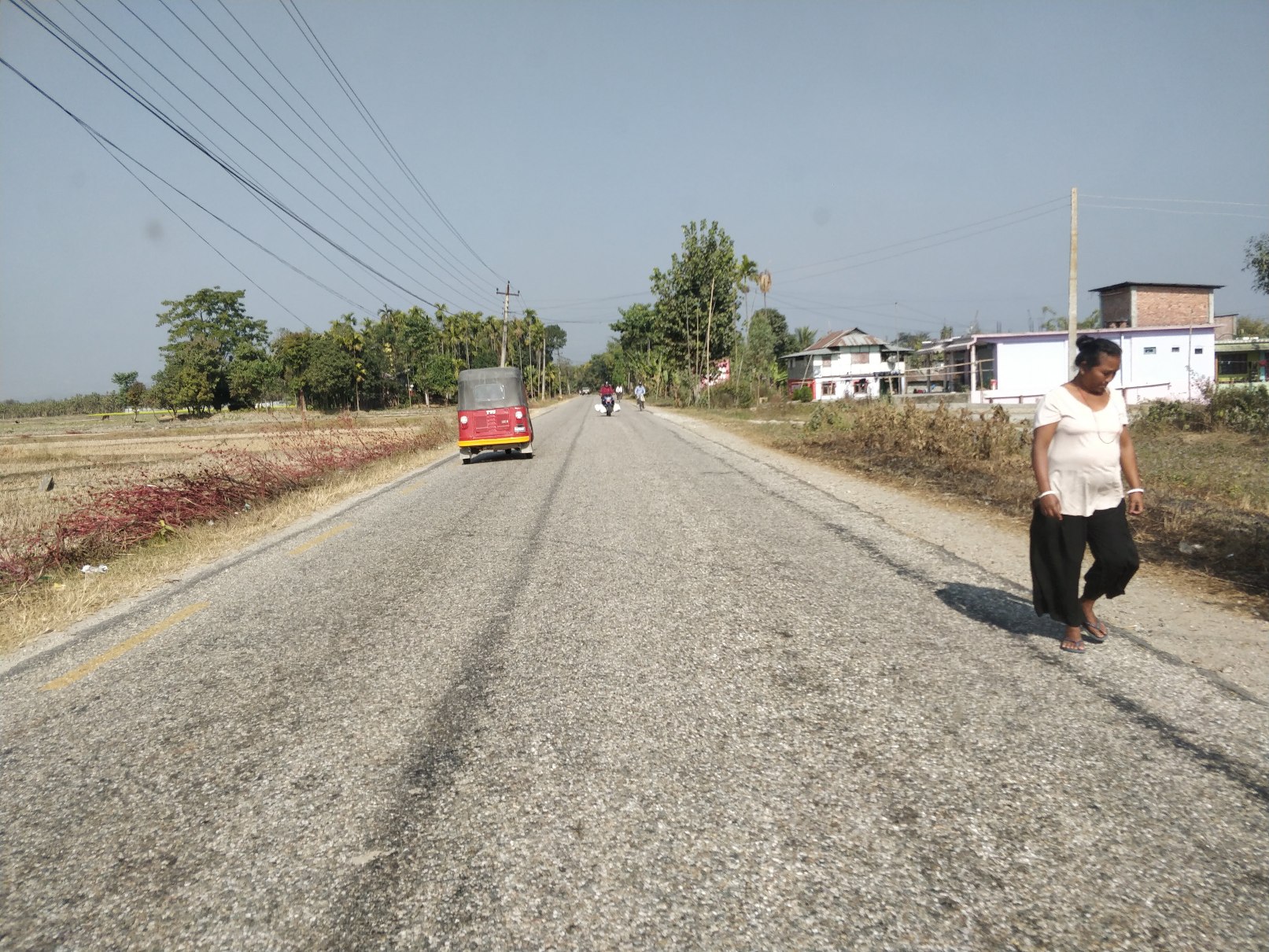
MY FEEDBACK ABOUT ILAM’S TRIP
Yet far from the touristic hub of Kathmandu, this region desserves to spend time there and discover landscapes that you will not been able to see anywhere else in Nepal. This trip “at the east of Nepal” is perfect to walk out of thecountry’s beaten paths. It will please people who already came to Nepal several times and are looking for something different as well as country’s novices looking for culture, nature and contacts with the population. More generally, you do not visit this region for any sporti or alpine exploit, here you get local discovery.
It is recommended to arrange travel in a small group, not more than four persons because often the homestays have limited beds only. And the less people there is, the easiest it is to have contact with locale people.
Do not expect big feasts during this treat though. Except for Kiran and Kedar who have a real passion for orginal and various food items, meals served in the homestays are the traditional nepali dal bhat and its vegetable curry (sometimes meat).The food is basic and the lodging facility is rudimentary.
Regarding the trekking itself, days are quite short and easy walk. The trail is not technical at all and the ascending/descending elevations have nothing to do with other treks in the rest of the country. The last part in between Jamuna and Mai Pokhari that we ride in a jeep should be considered hiking instead because the road is in very bad conditions and it will not always be negotiable. So, it is better to walk till Mai Pokhari and take a jeep from there.
As the trek is easy with only few stairs, it is also recommended to ride it on a mountain bike or on a horse.
We infinitely thank Kiran and Kedar for their welcome and their help as well as Raku for his company and his high knowledge about the region.
If you wish to get more information about this destination, please feel free to contact us and we will be more than happy to reply to you.
NAMASTE !

